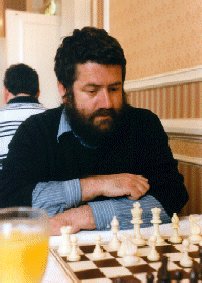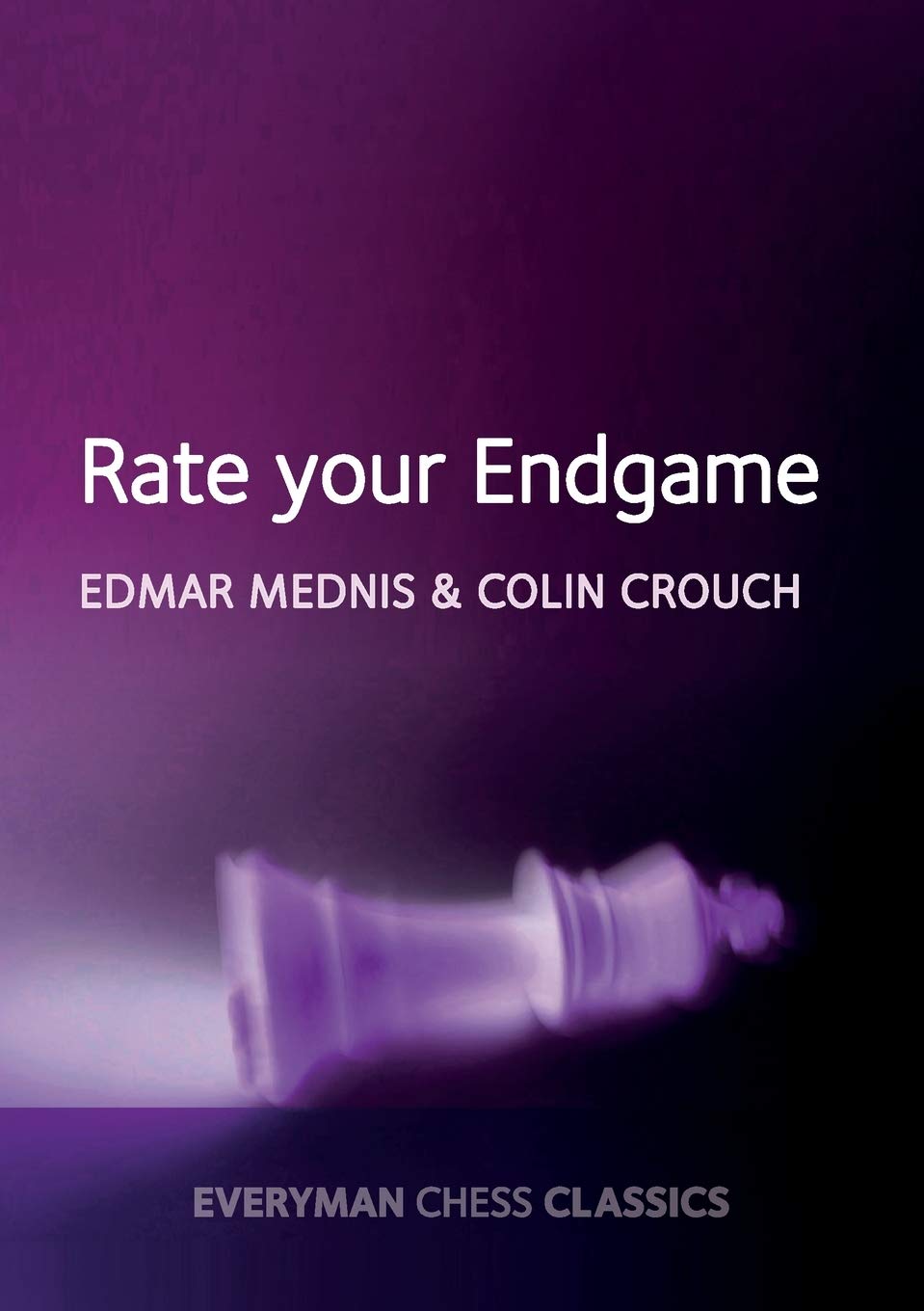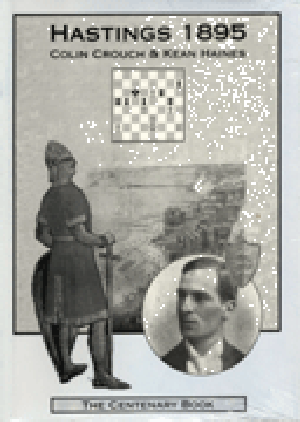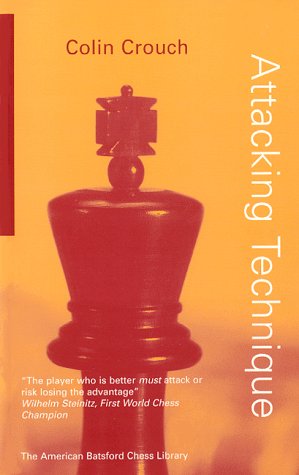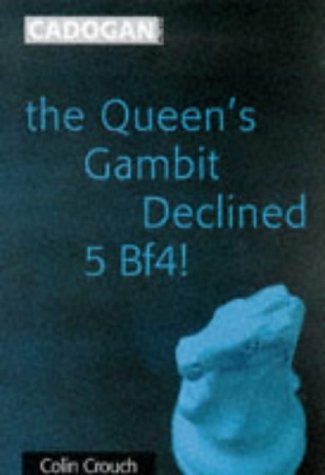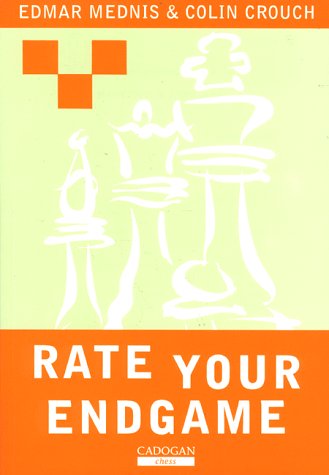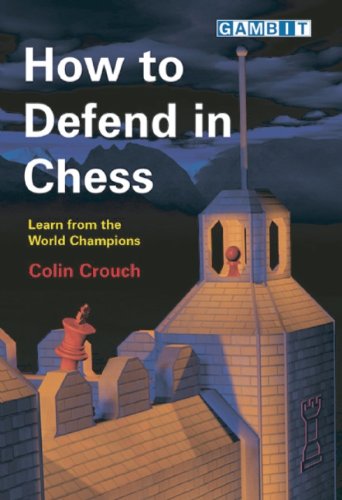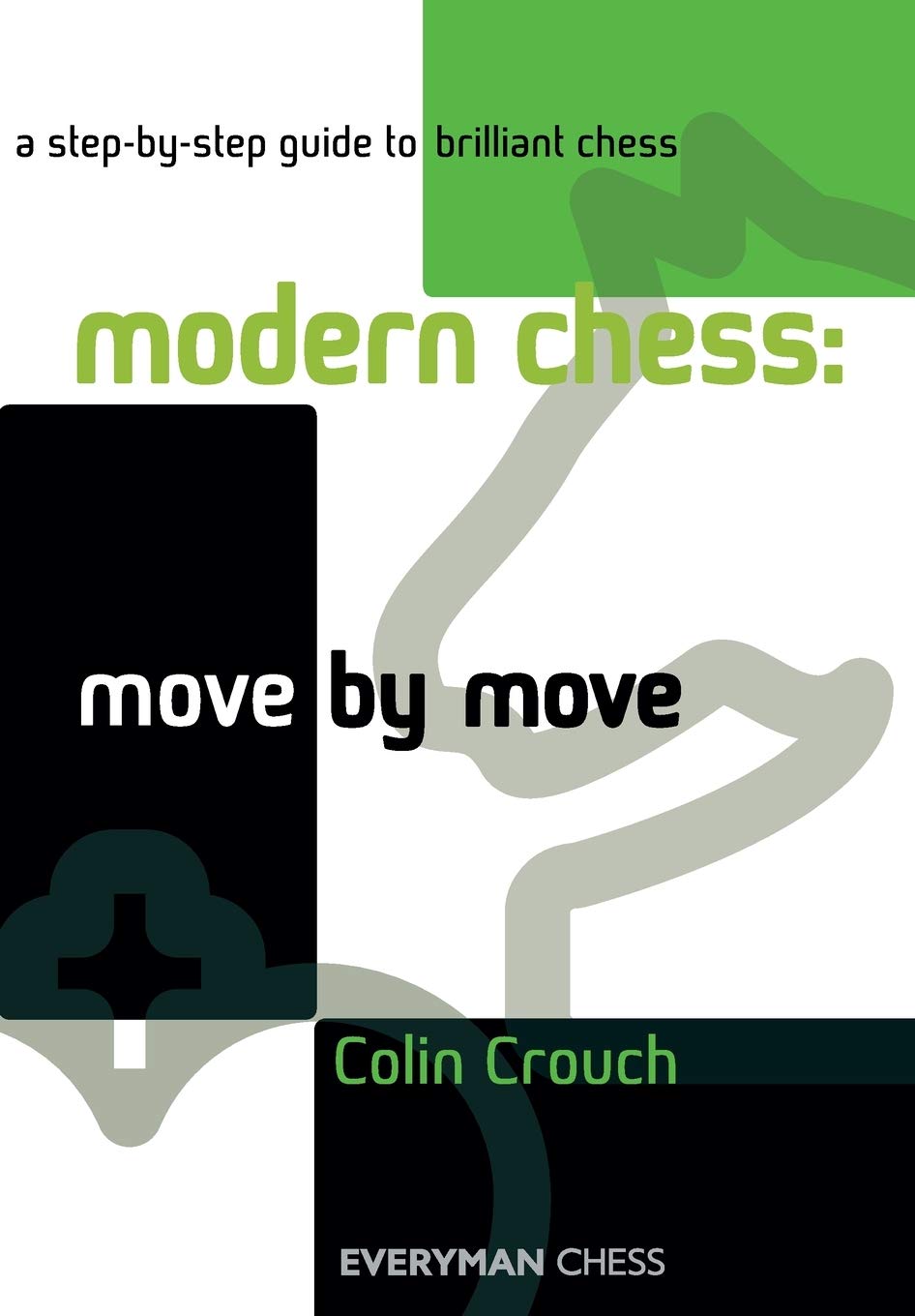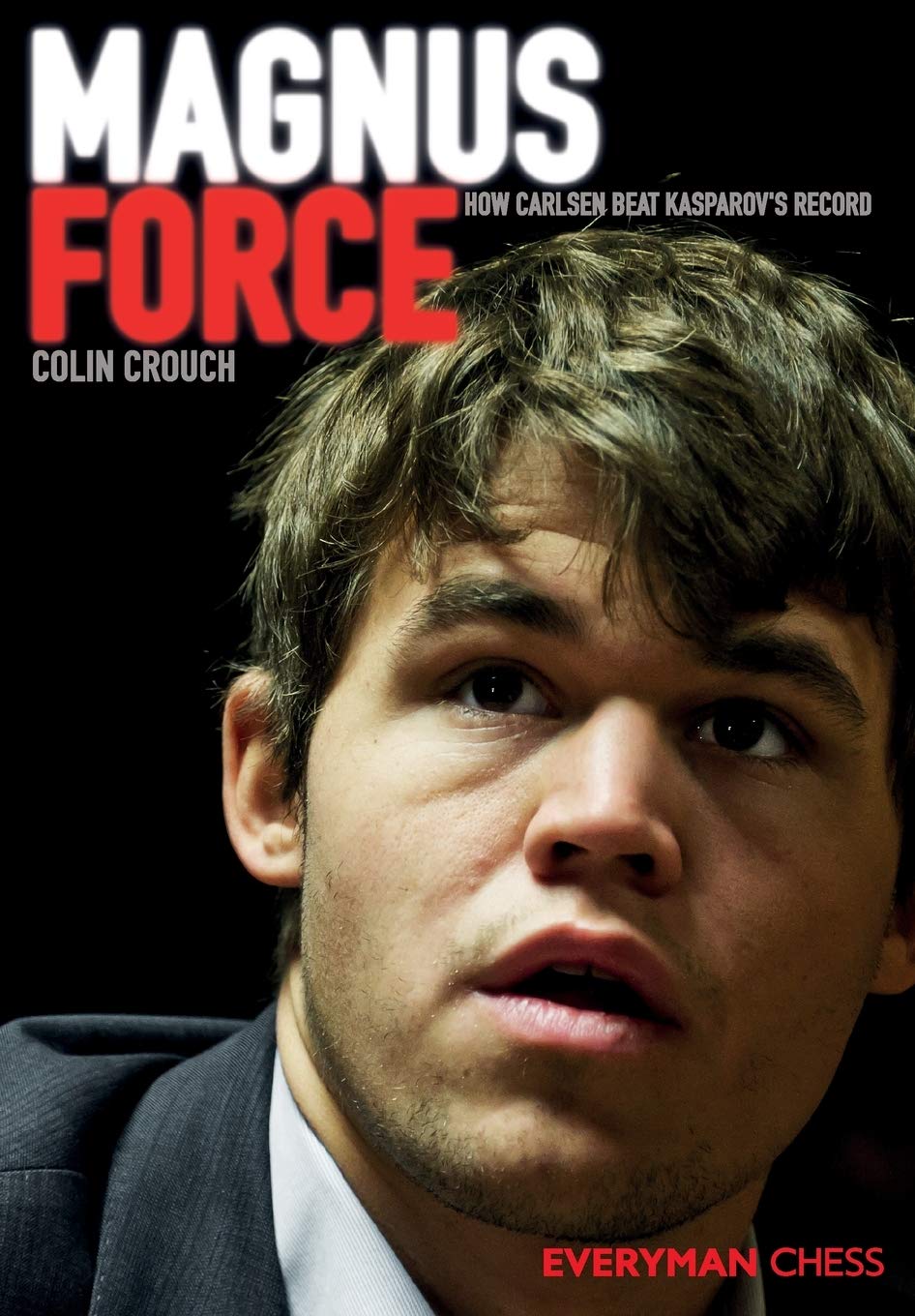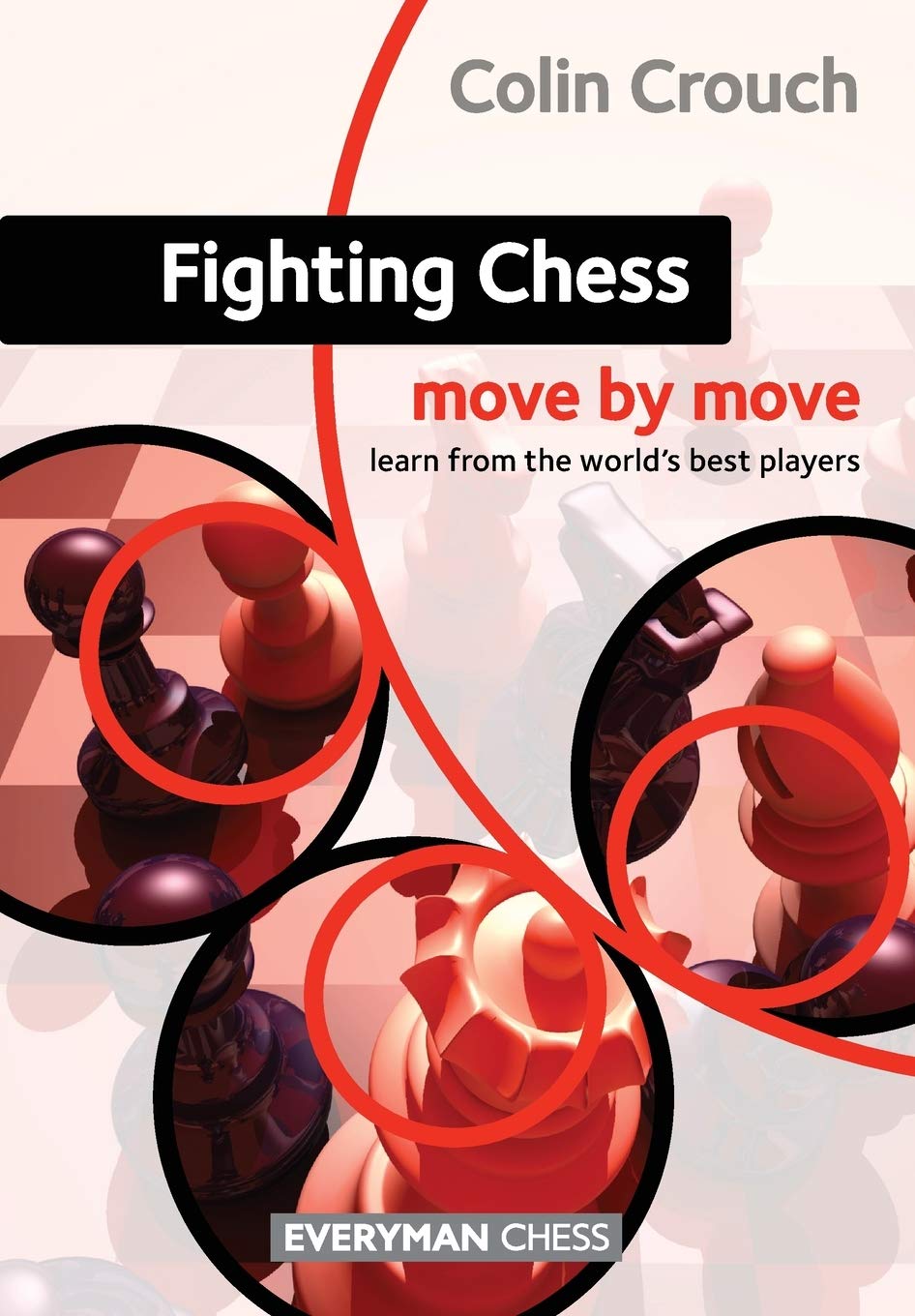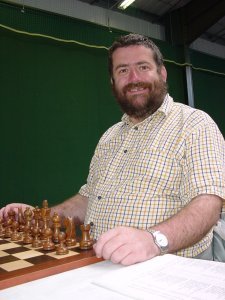BCN wishes Happy Birthday to GM Joseph Gerald Gallagher (04-v-1964)
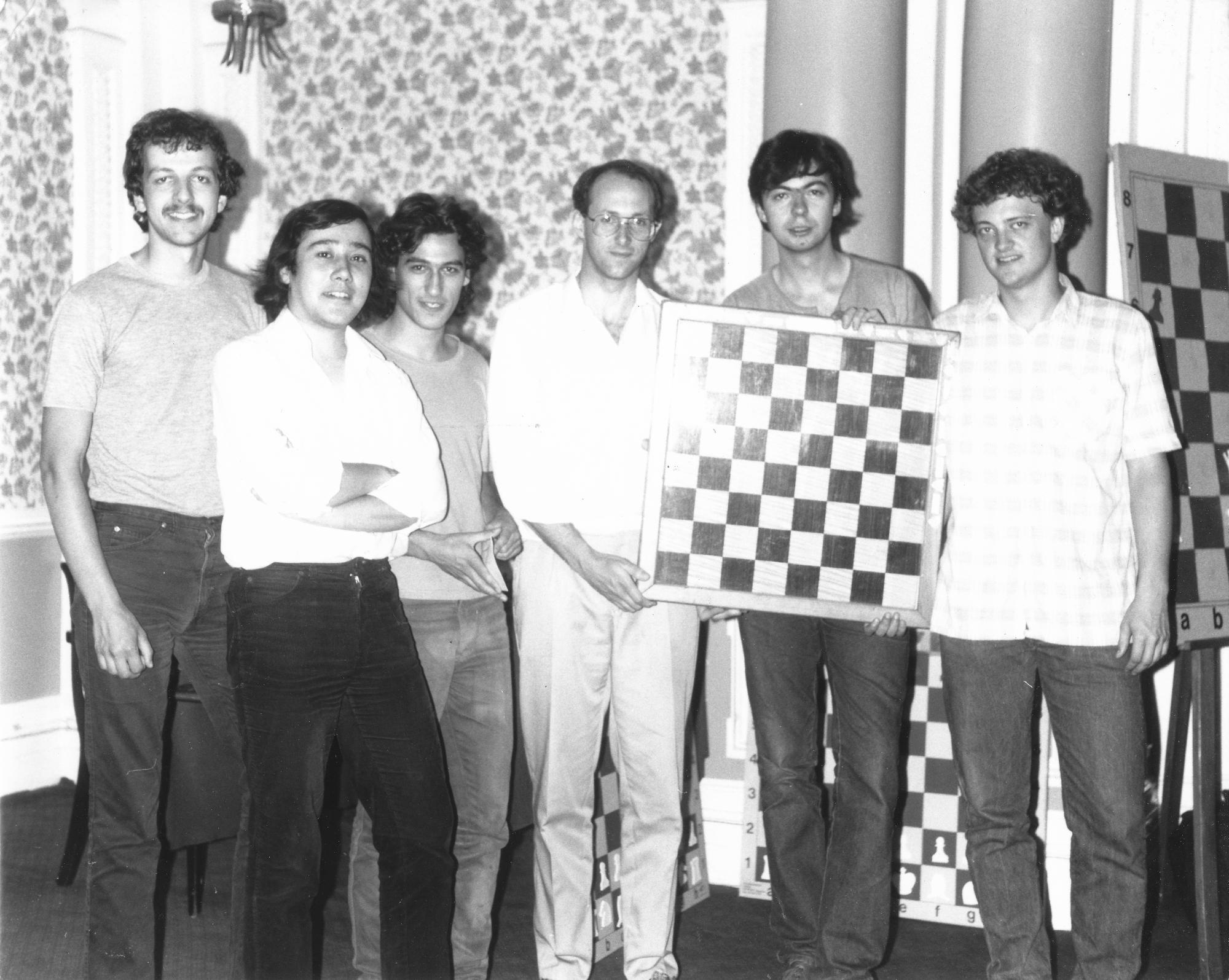
Here is his Wikipedia entry
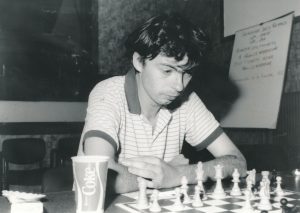
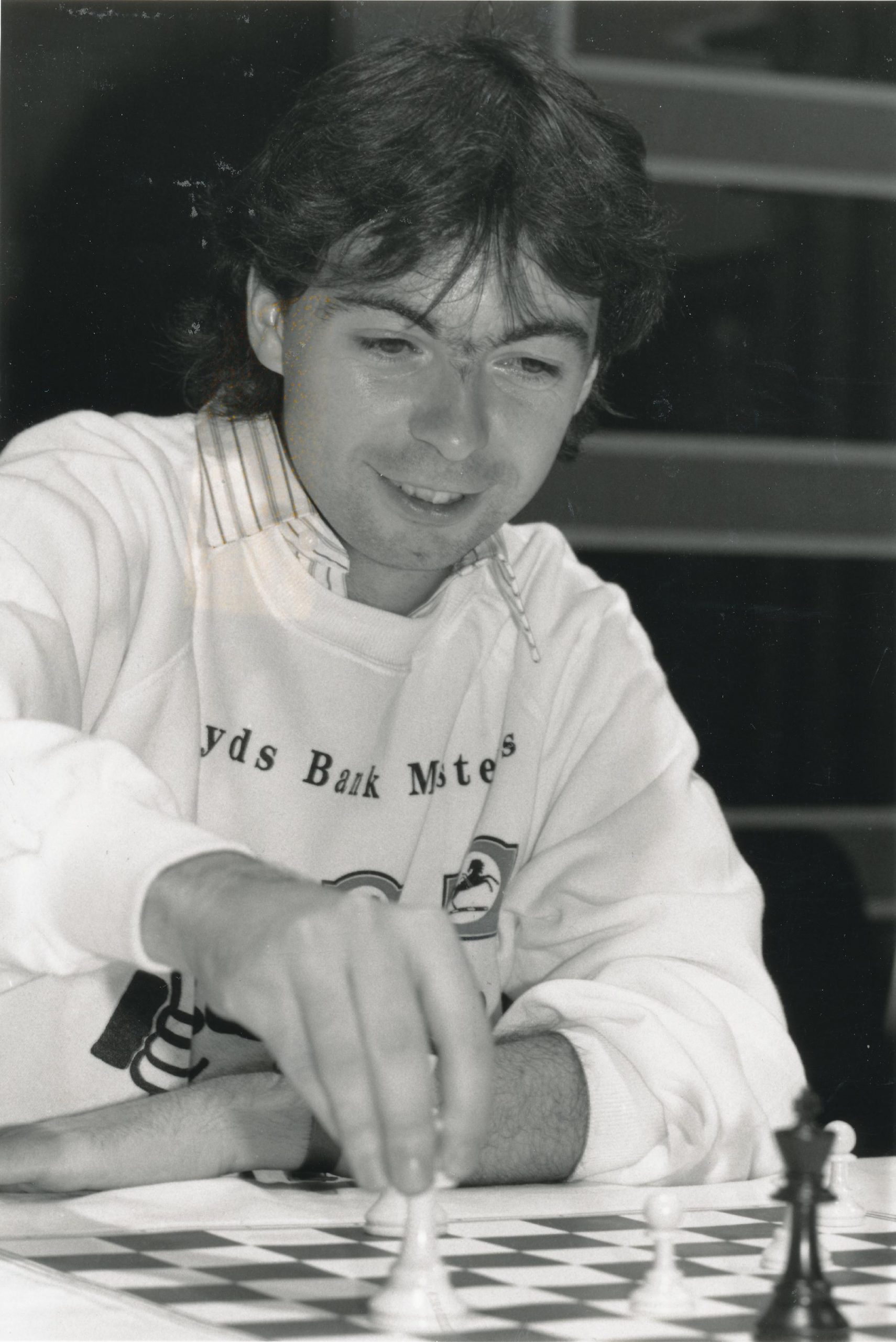
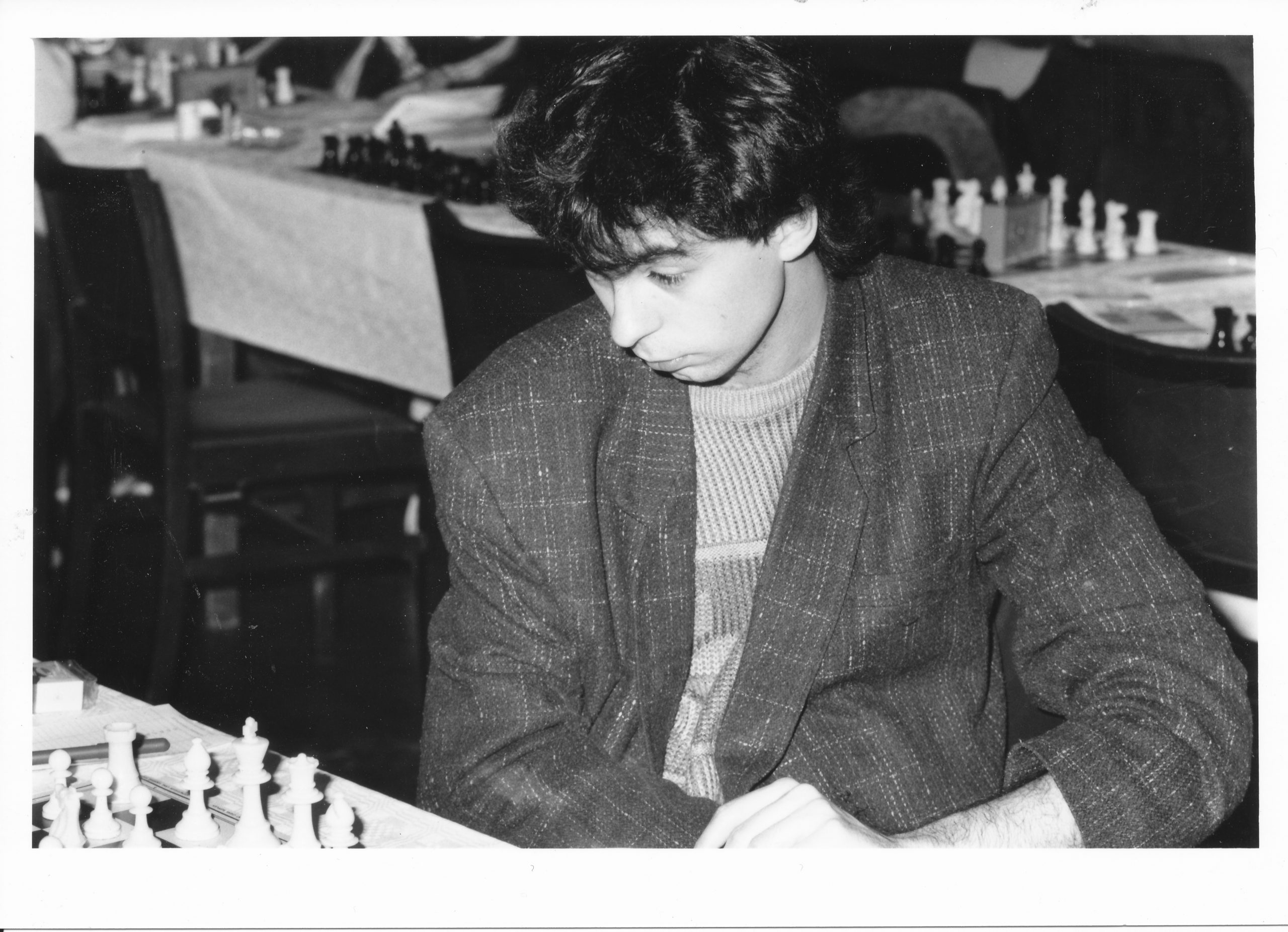
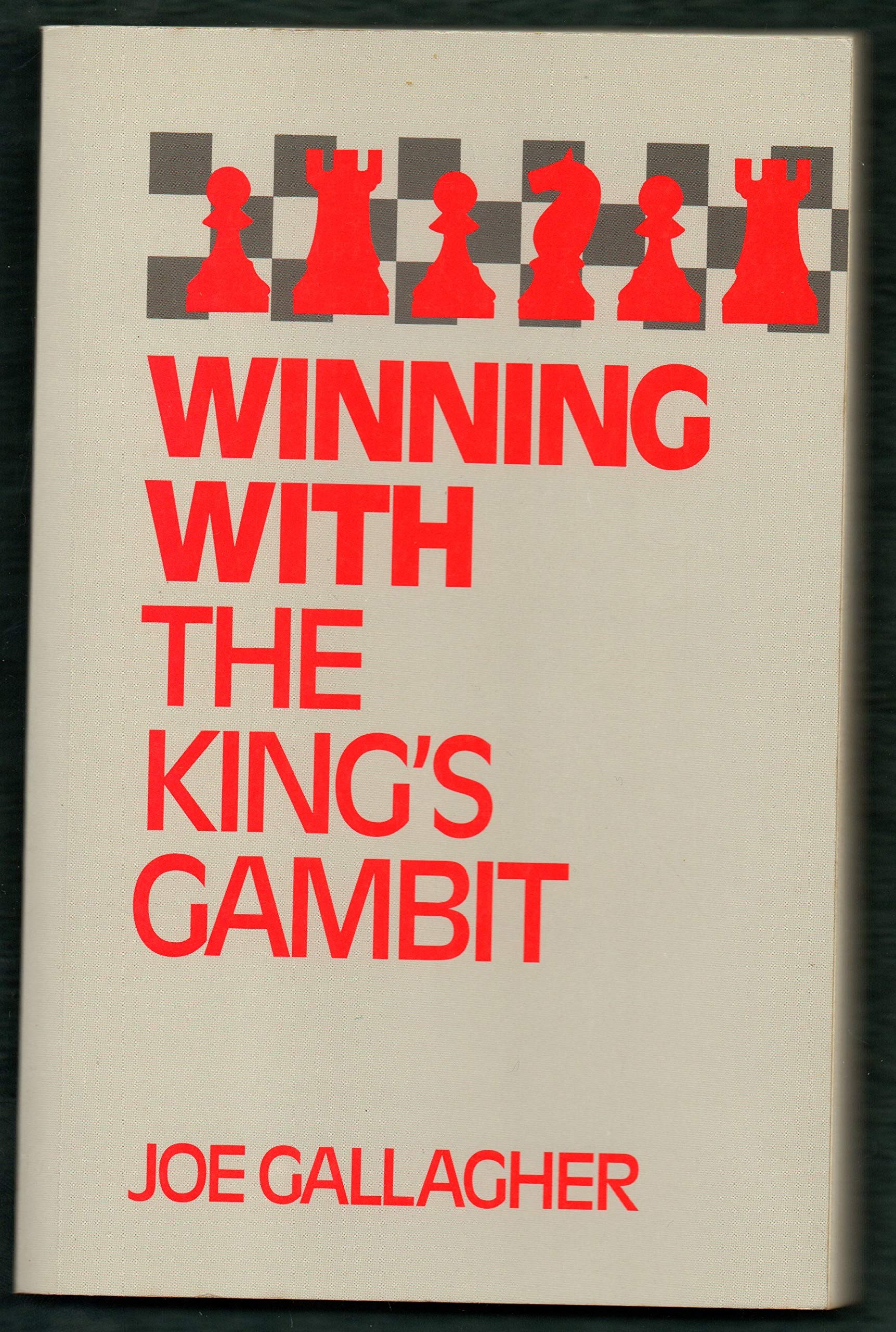

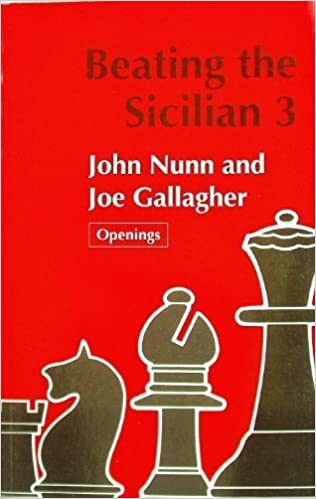
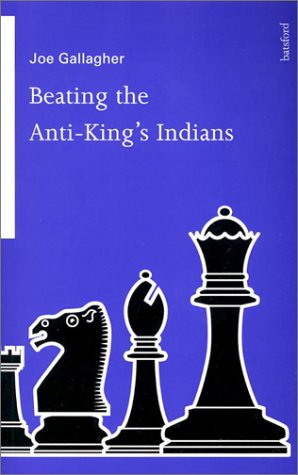
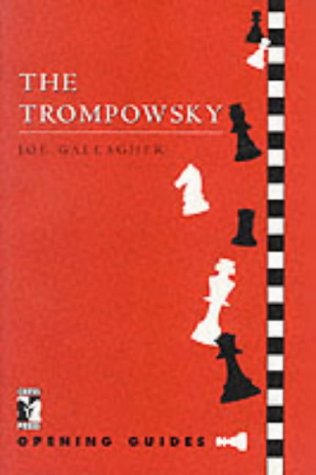
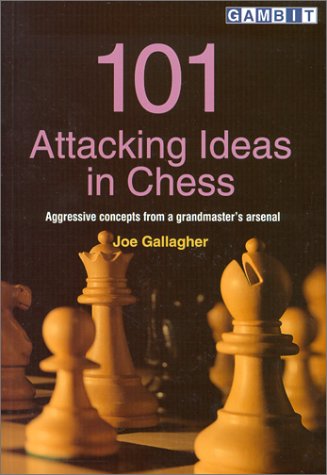
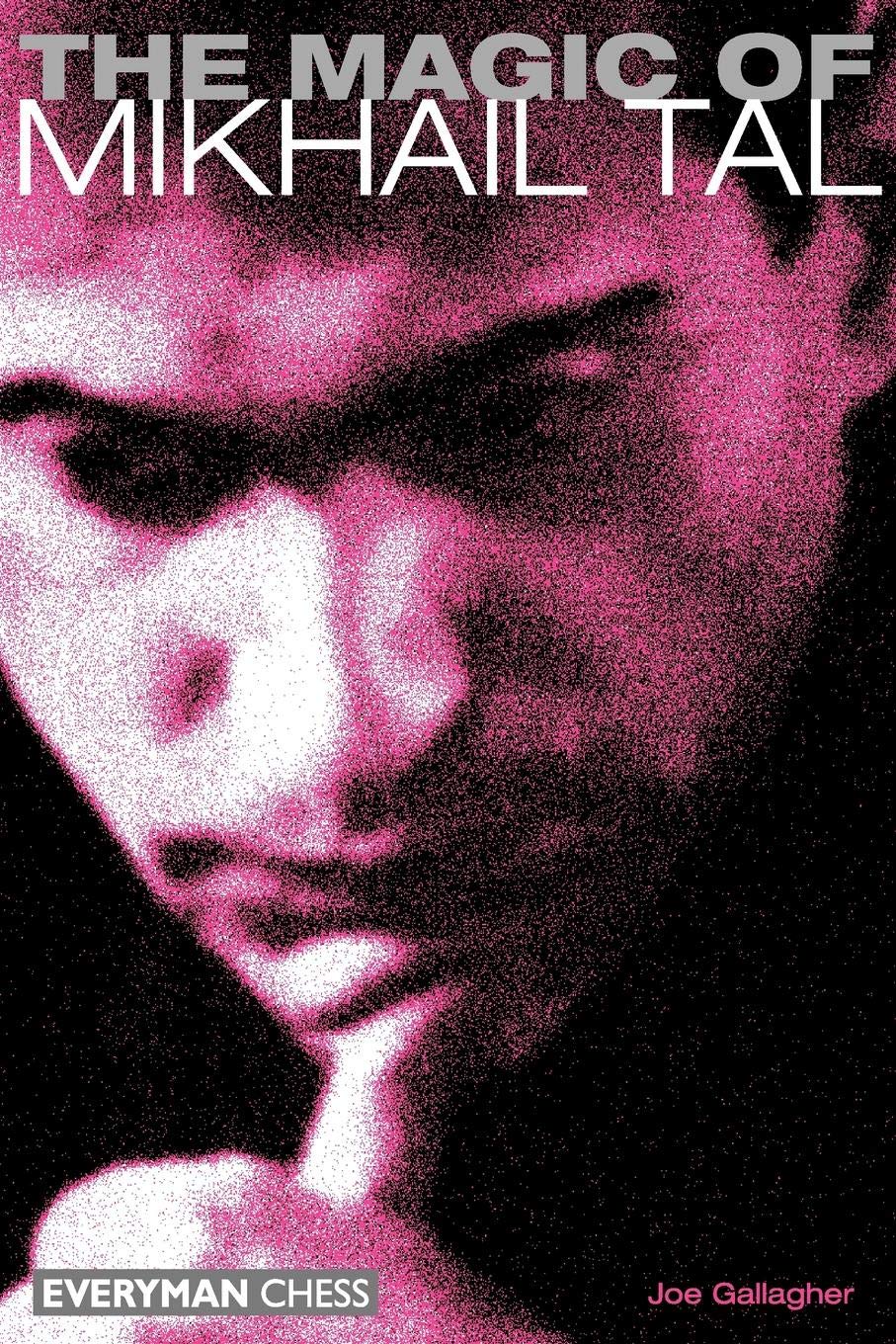
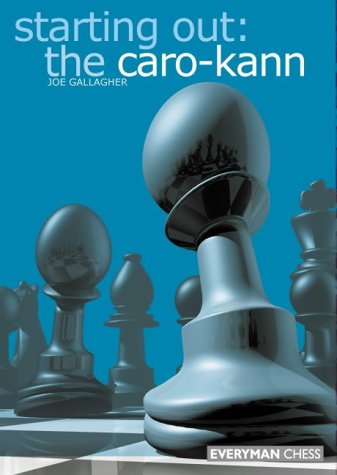
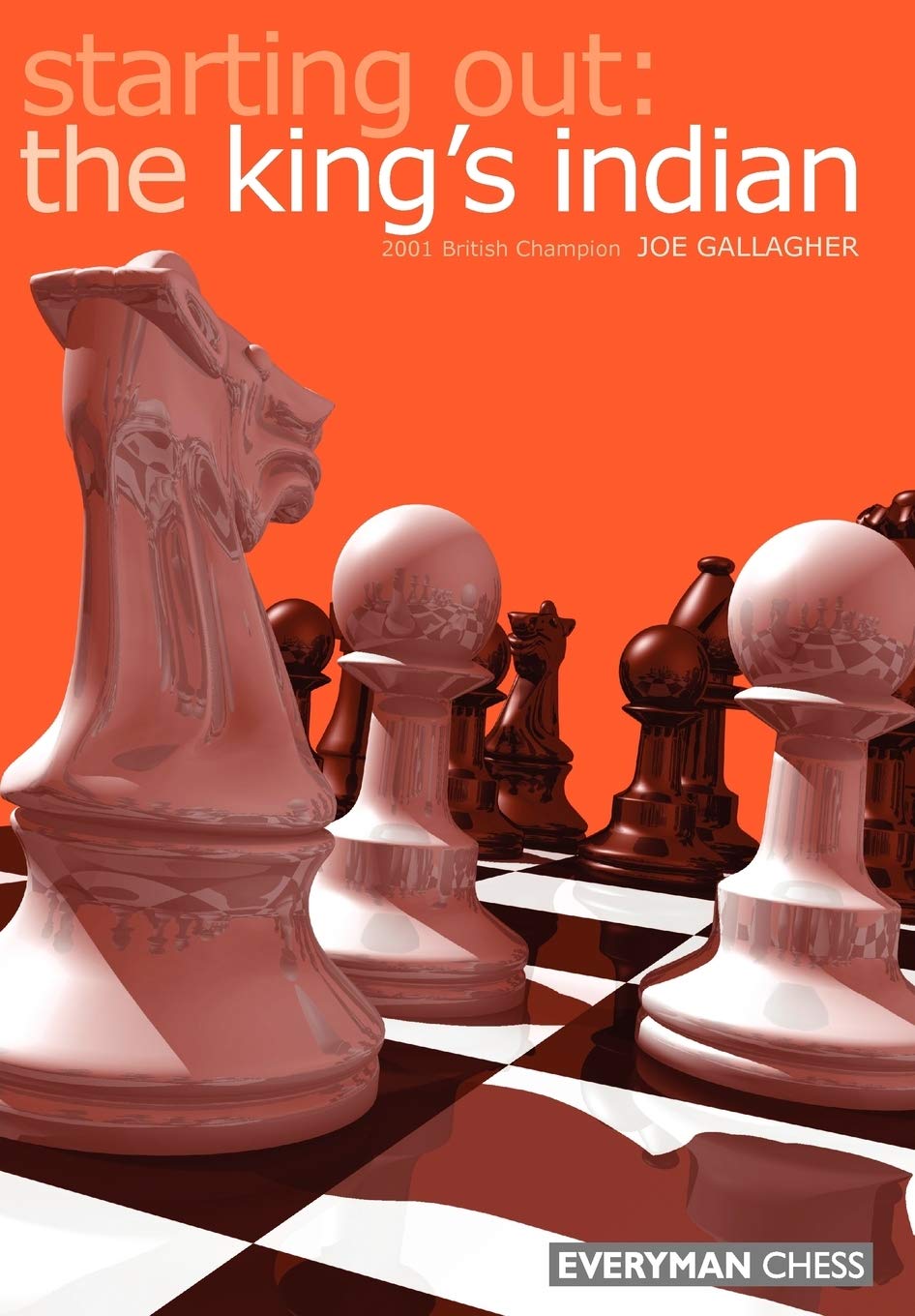
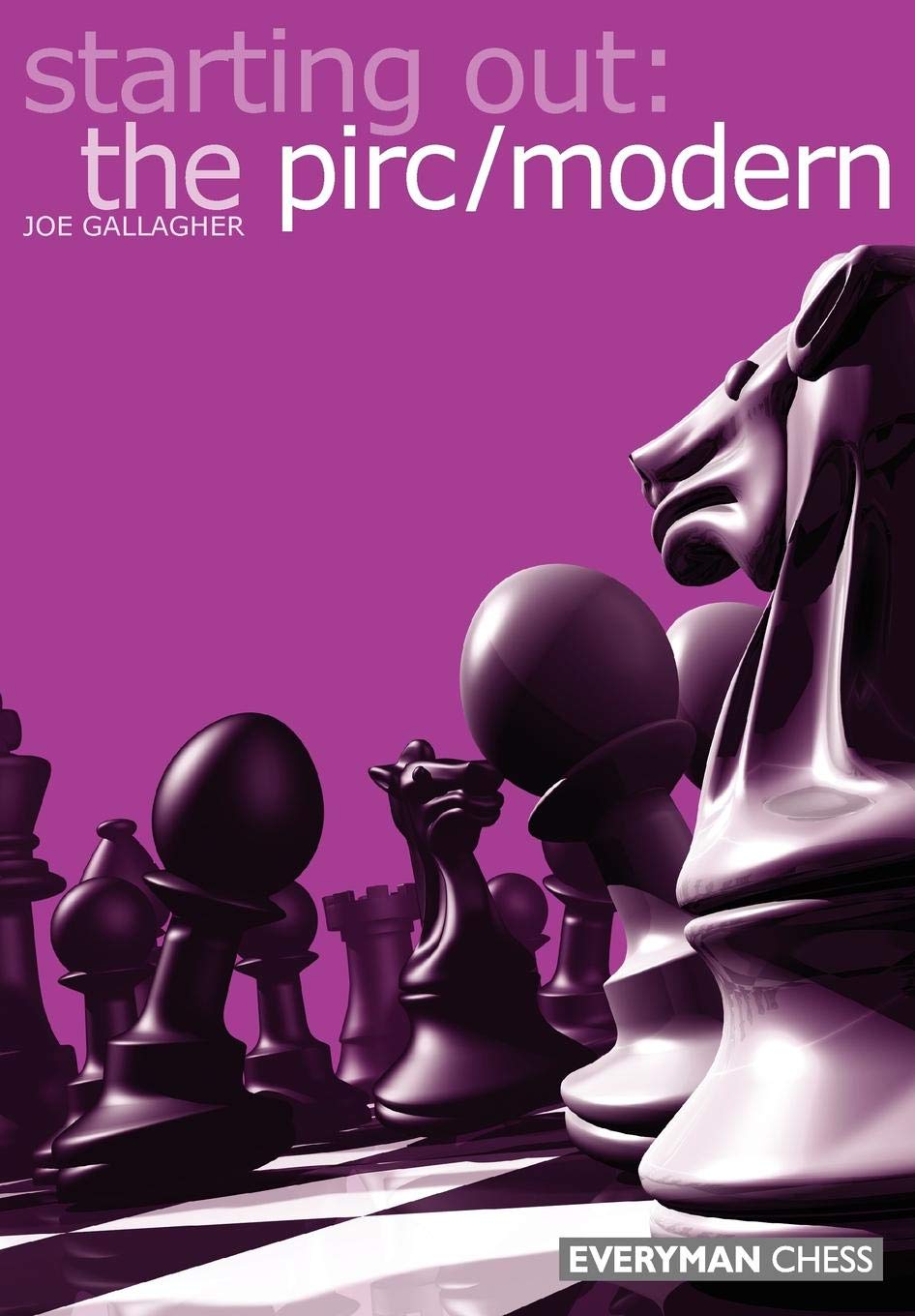
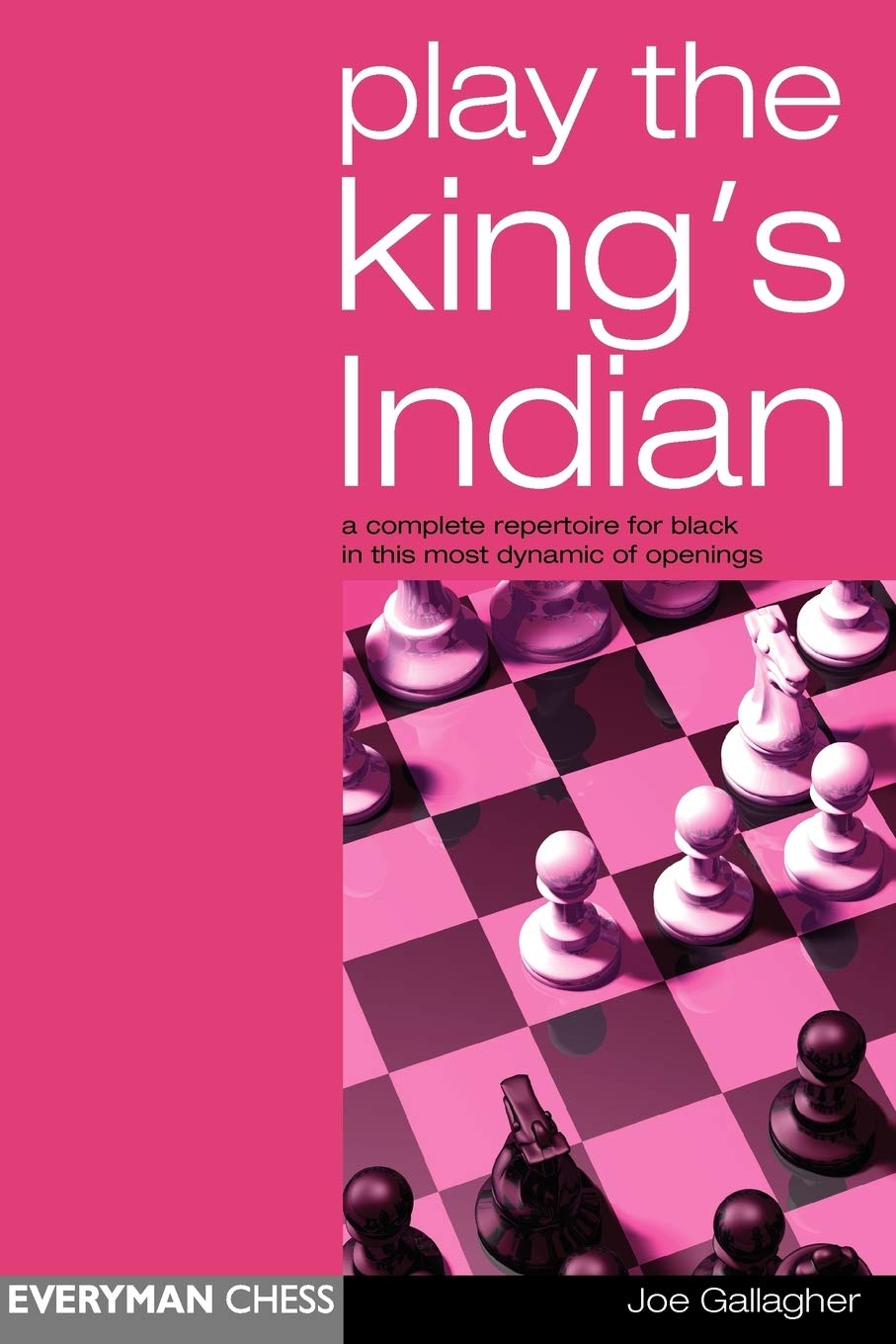
BCN wishes Happy Birthday to GM Joseph Gerald Gallagher (04-v-1964)

Here is his Wikipedia entry














BCN remembers David Hooper who passed away in a Taunton (Somerset) nursing home on Sunday, May 3rd 1998. Probate (#9851310520) was granted in Brighton on June 24th 1998.
Prior to the nursing home David had been living at 33, Mansfield Road, Taunton, TA1 3NJ and before that at 5, Haimes Lane, Shaftesbury, Dorset, SP7 8AJ.
For most of the time between Reigate and Shaftesbury David lived in Whitchurch, Hampshire.
David Vincent Hooper was born on Tuesday, August 31st 1915 in Reigate, Surrey to Vincent Hooper and Edith Marjorie Winter who married in Reigate, Surrey in 1909. On this day the first French ace, Adolphe Pégoud, was killed in combat. He had scored six victories.
David was one of six children: Roger Garth (1910-?), Edwin Morris (1911-1942), Isobel Mary (12/01/1917-2009), Helene Edith (1916-1982) and Elizabeth Anne Oliver (1923-2000) were his siblings.
David attended Whitgift School, Croydon, and (thanks to Leonard Barden) we know that “although there was no chess played there in his time he was proud of later accomplishments and often wore an Old Whitgiftians tie, especially for posed photos including this article’s title image and the one in the Chess Notes article by Edward Winter (see the foot of this article).
Recorded in the September 1939 register David was aged 24 and living at 94, High Street, Reigate, Surrey:

In 2021 this property appears to be a flat (rather than bridge) over the River Kwai Restaurant:
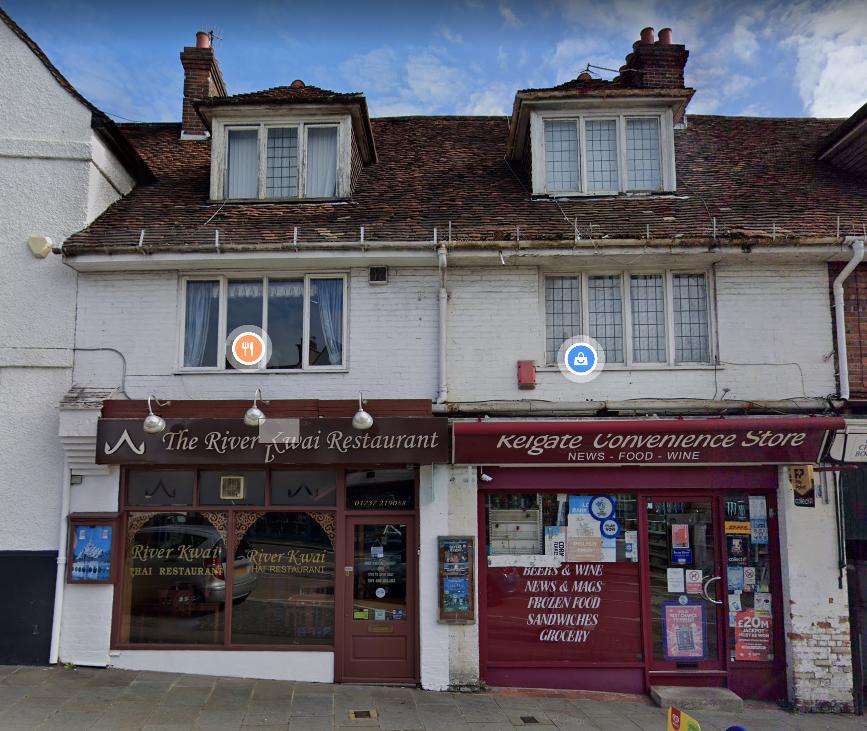
Living with David was his sister Isobel who was listed a “potential nurse”. David’s occupation at this time was listed as Architectural Assistant and he was single. We think that three others lived at this address at the time but they are not listed under the “100 year rule”. We know that David was also a surveyor and went on to attain professional membership of the Royal Institution of British Architects (RIBA).
In the Bath Chronicle and Weekly Gazette May 27th 1944 there appeared this report of a simultaneous display on Empire Day (May 24th) at Dr. Marsh’s house:
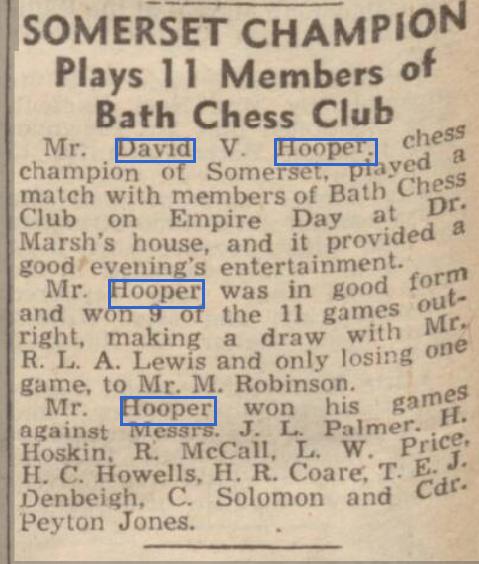
and from The Western Morning News, 9th April 1947 we have:
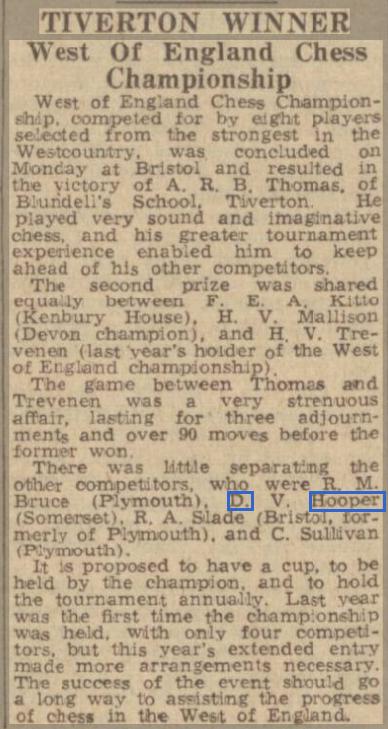
and then from The Nottingham Evening Post, 16th August 1949 we have:
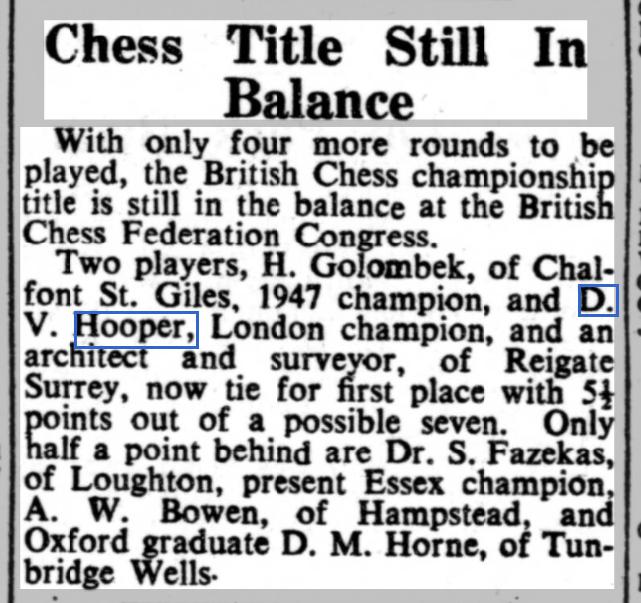
In 1950 aged 35 David married Joan M Higley (or Rose!) in the district of South Eastern Surrey.
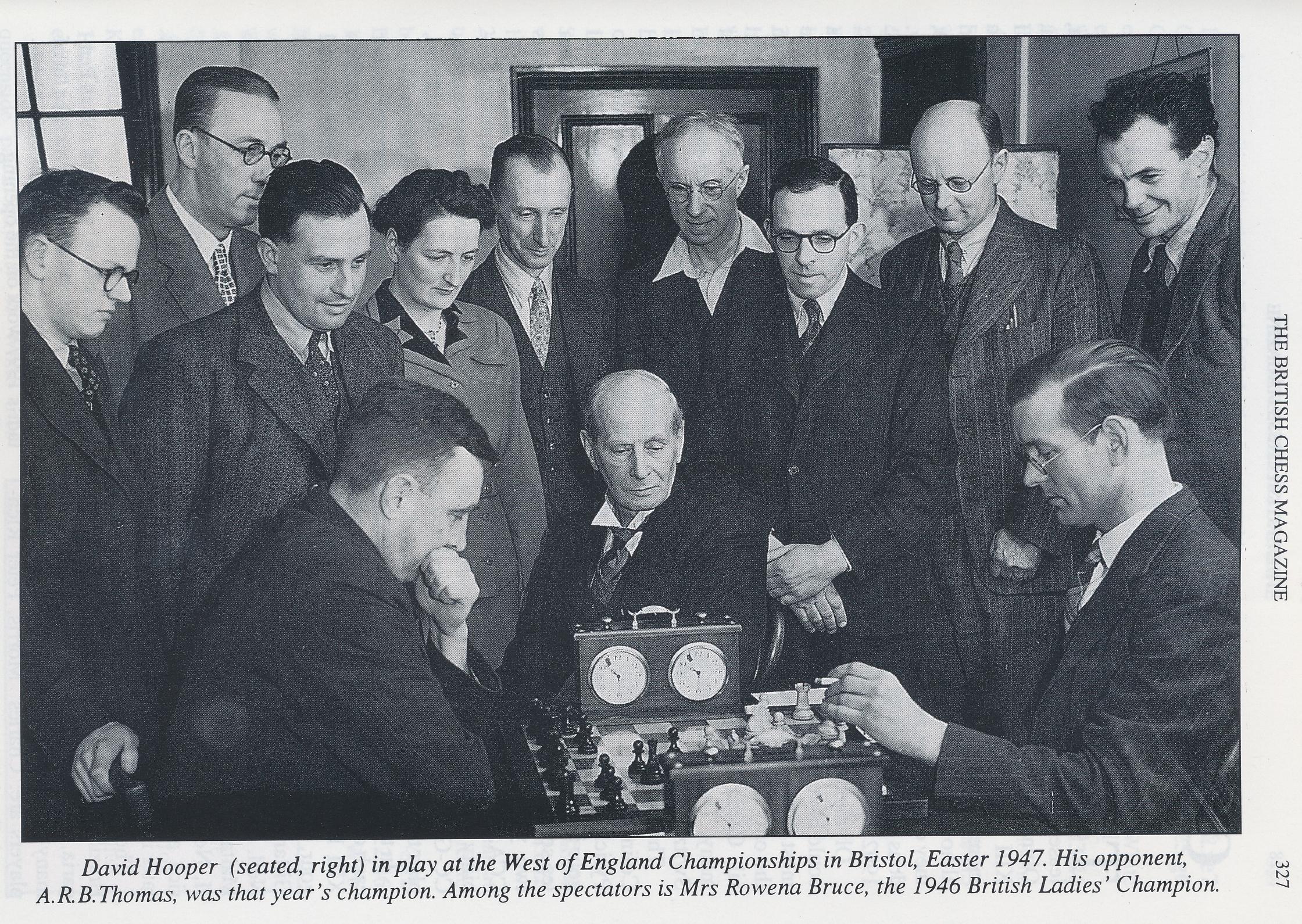
Leonard Barden kindly provided us with these memories of David:
“He liked to drive very fast while keeping up a stream of talk with his passenger. I recall his transporting me to the 1950 British Championship in Buxton and feeling in a state of low-key terror the whole journey. When we reached a sign Buxton 30 I felt a great sense of relief that the ordeal was nearly over. Returning two weeks later, some miles down the road we passed Milner-Barry and Alexander in a small car, slowly and carefully driven by M-B whose head nearly reached the roof. As we swept by David gave a celebratory hoot.
I thought this was just me being unduly nervous, but years later Ken Whyld told me he felt the same as a Hooper passenger and that so did most others. David was actually very safe and I don’t think he ever had an accident.
David worked in Middle East for some years and was the chief architect for the construction of a new airport at Aden.
A Guide to Chess Endings was 90% written by David, with chapters then looked over by Euwe and his chess secretary Carel van den Berg. All David’s endgame books are lucidly written and it is a pity where they are not available in algebraic.
When The Unknown Capablanca was published I asked for and received from David an inscribed copy for Nigel Short‘s ninth birthday., which I presented to him personally at an EPSCA team event. Curious to know how it was received, I phoned Nigel’s father (David) a couple of days later and was informed “He’s already on to Capa’s European Tour” (which is I think about 100 pages into the book).” – Thanks Leonard!
Ken Whyld wrote an obituary which appeared in British Chess Magazine, Volume 118 (1998), Number 6, page 326 as follows :
DAVID VINCENT HOOPER died on 3rd May this year in a nursing home in Taunton. He had been in declining health for some months. Born in Reigate, 31st August 1915, his early chess years were with the Battersea CC and Surrey.

He won the (ed. Somerset) County Championship three times, and the London Championship in 1948. His generation was at its chess peak in the years when war curtailed opportunities, but he won the British Correspondence Championship in 1944.
His games from that event are to be found in Chess for Rank and File by Roche and Battersby.
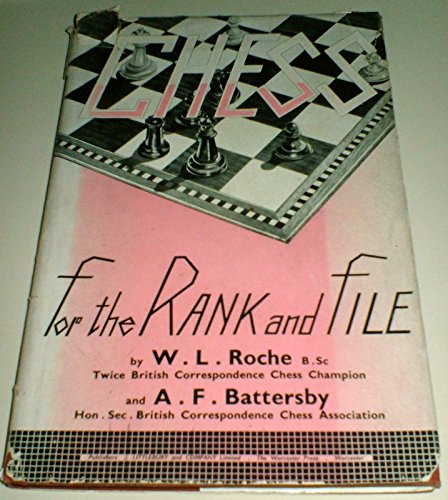
Also at that time, he won the 1944 tournament at Blackpool, defeating veteran Grandmaster Jacques Mieses.
David was most active in the decade that followed, playing five times in the British Championship.
His highest place there was at Nottingham 1954, when, after leading in the early stages, he finished half a point behind the joint champions, Leonard Barden and Alan Phillips.
David was in the British Olympic team at Helsinki 1952, and in the same year accidentally played top board for England in one of the then traditional weekend matches against the Netherlands. British Champion Klein took offence at a Sunday Times report of his draw with former World Champion Dr. Euwe on the Saturday and refused to play on Sunday. Thus David was drafted in to meet Euwe, and acquitted himself admirably. Even though he lost, the game took pride of place in that month’s
BCM.
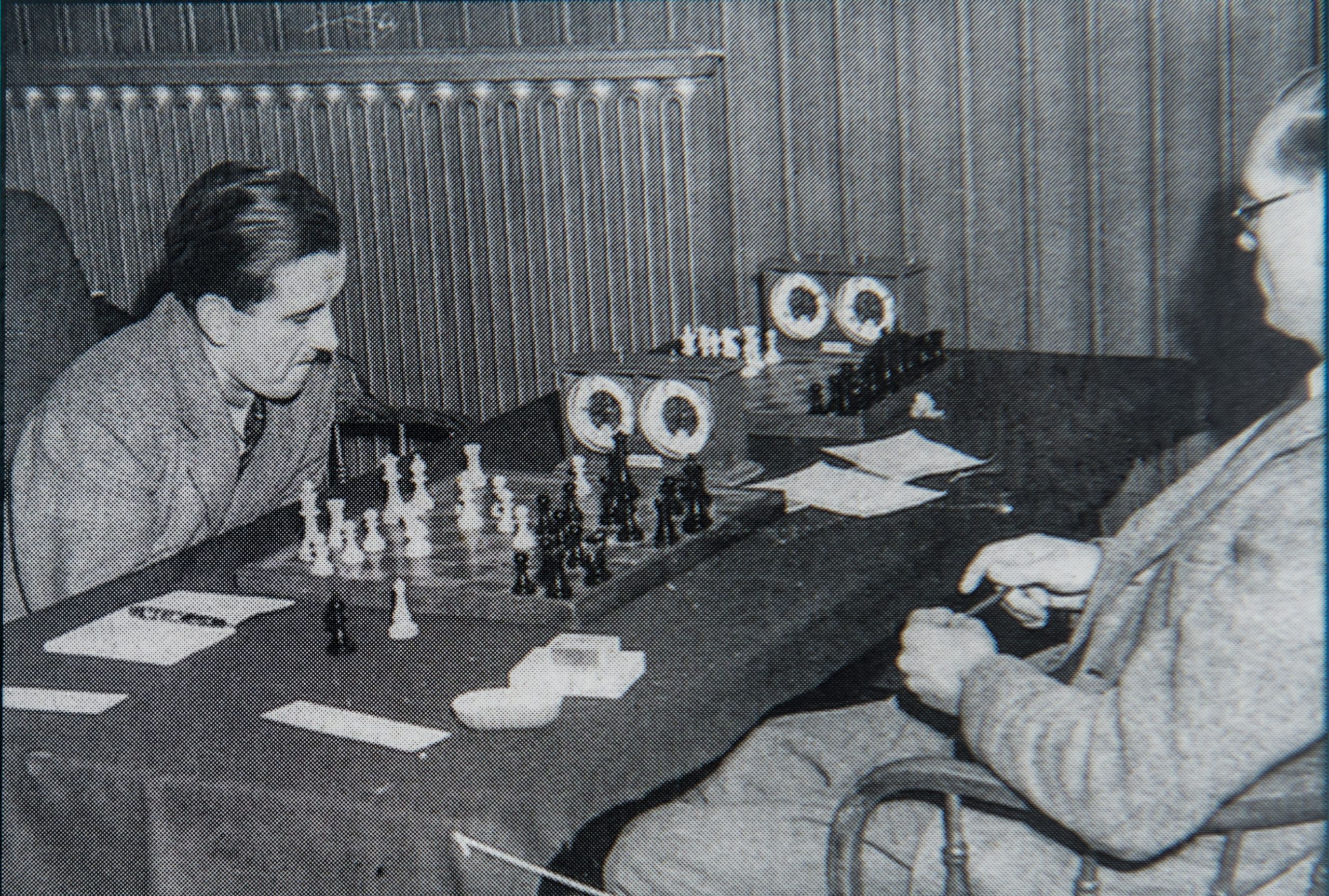
In the following game, played in the Hastings Premier l95l-2, he found an improvement on Botvinnik’s play against Bronstein in game 17 of their 1951 match, when 7.Ng3 was played because it was thought that after 7.Nf4 d5 it was necessary to play 8 Qb3.
In his profession as architect David worked in the Middle East for some years from the mid-1950s, and when he returned to England he made his mark as a writer. His Practical Chess Endgames
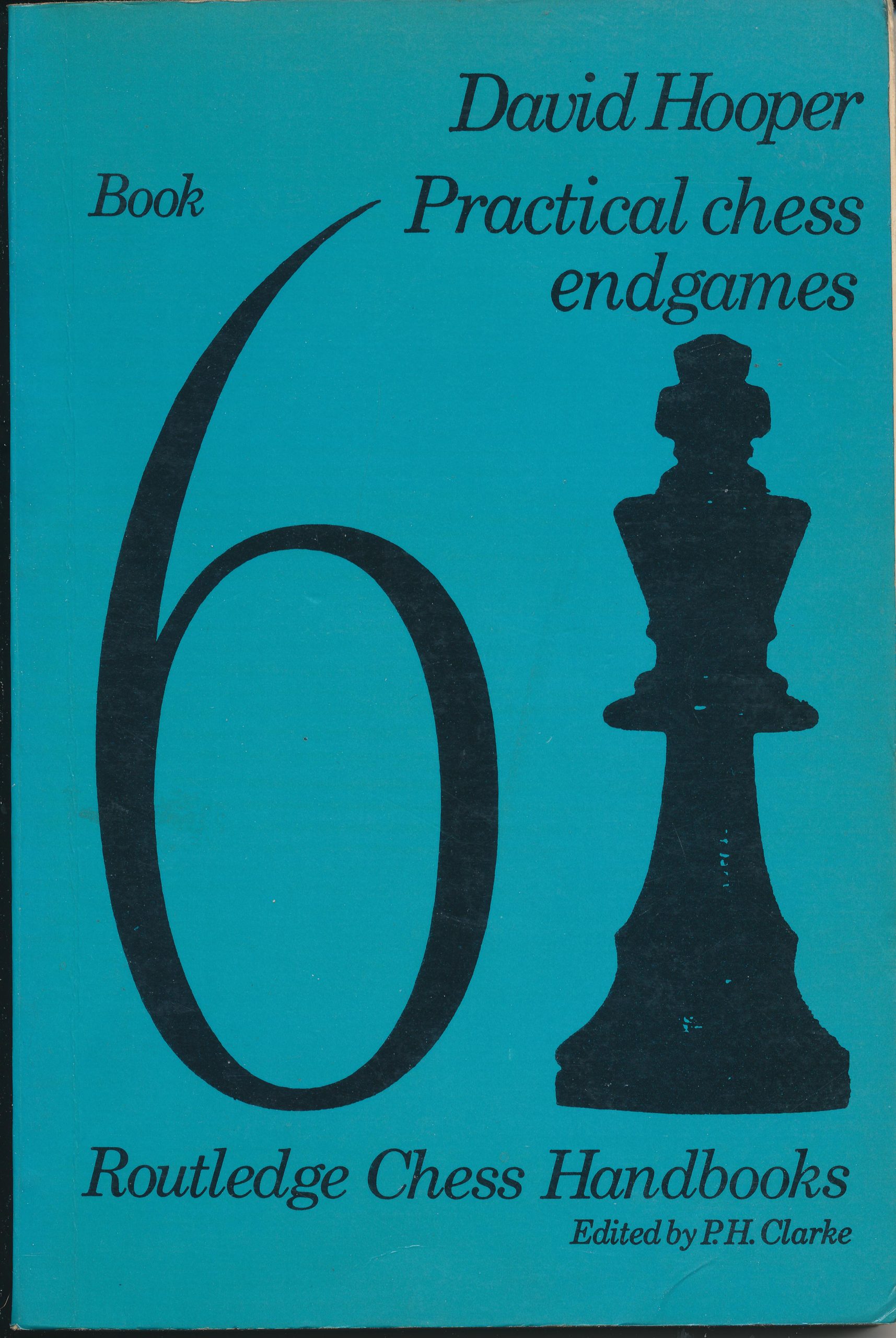
has an enduring appeal. Two of his books appeared in the Wildhagen biographical games series on Steinitz, and Capablanca. The last was written jointly with Gilchrist.
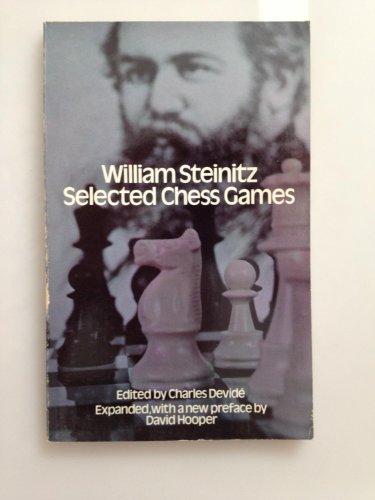
With Euwe he wrote A Guide to Chess Endings;
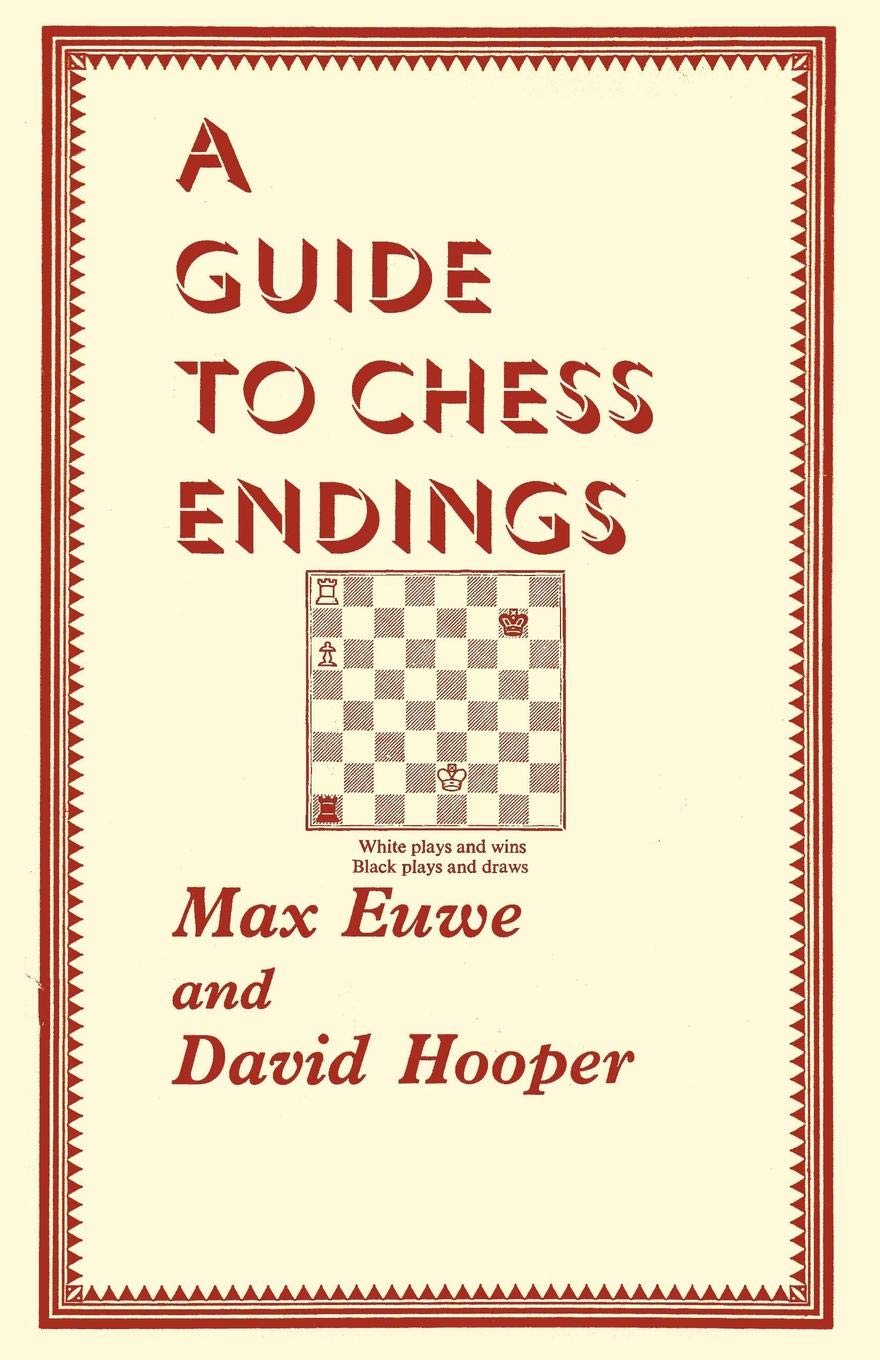
with Cafferty, A Complete Defence to 1.e4;
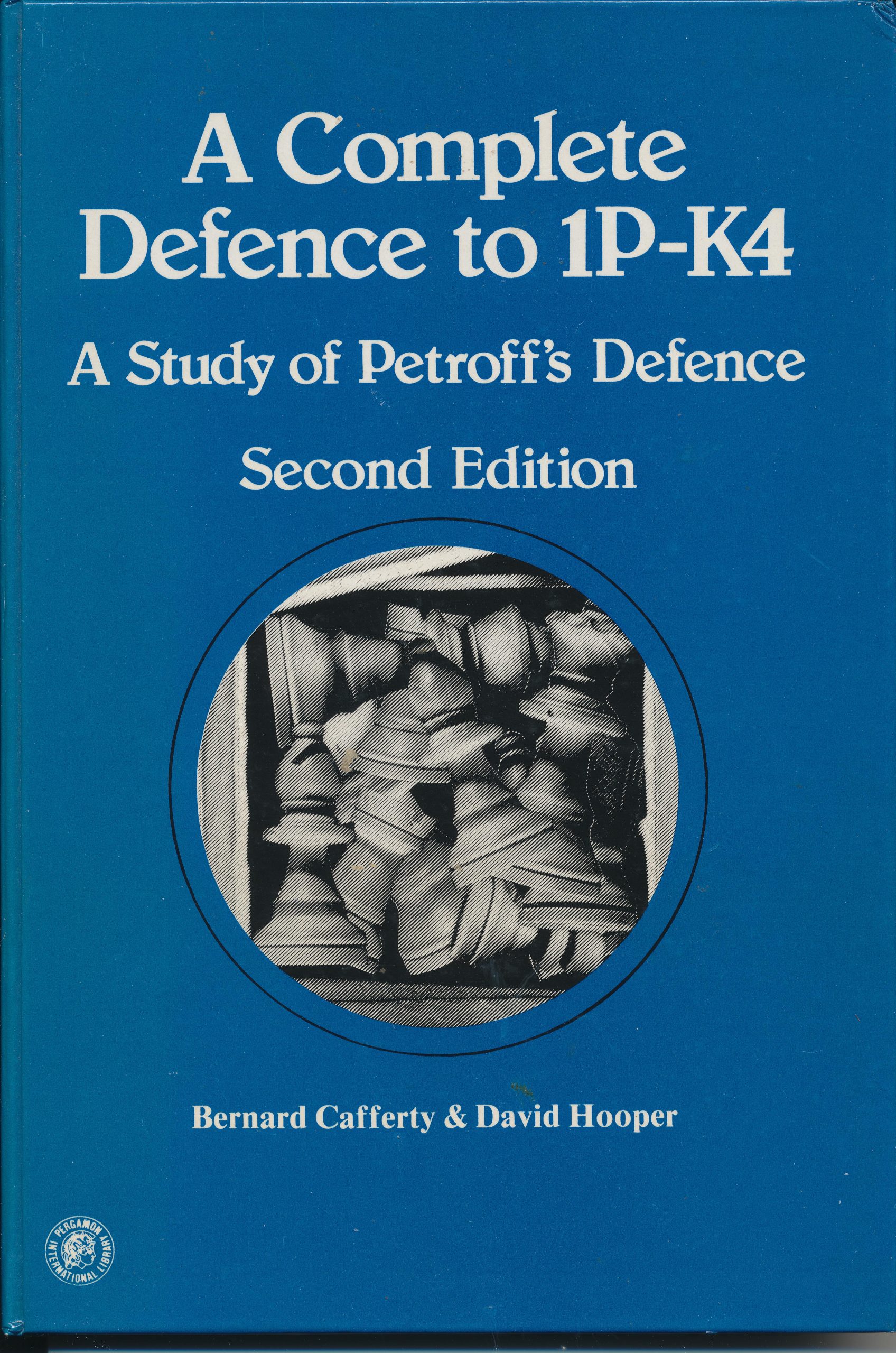
A Pocket Guide to Chess Endgames;
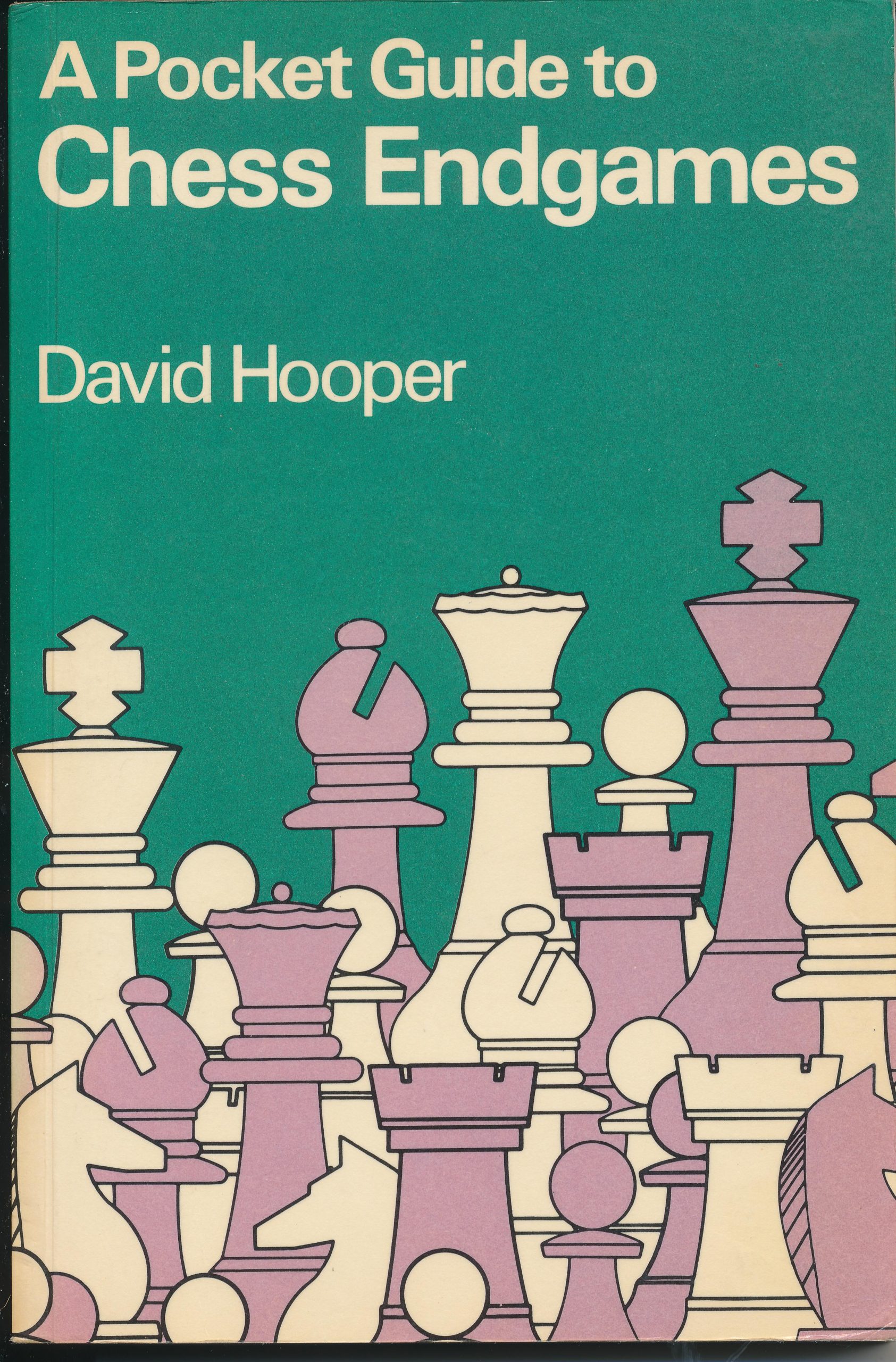
A Complete Defence to 1.d4;
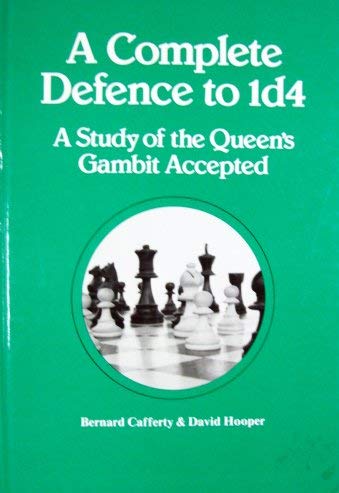
and Play for Mate;
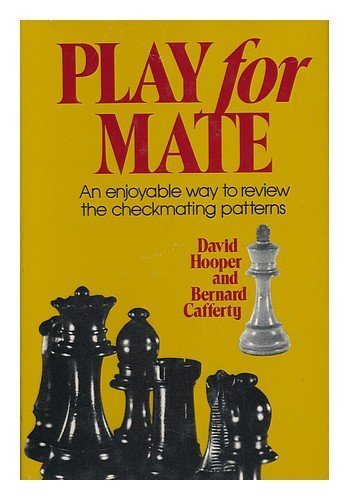
with Brandreth The Unknown Capablanca,
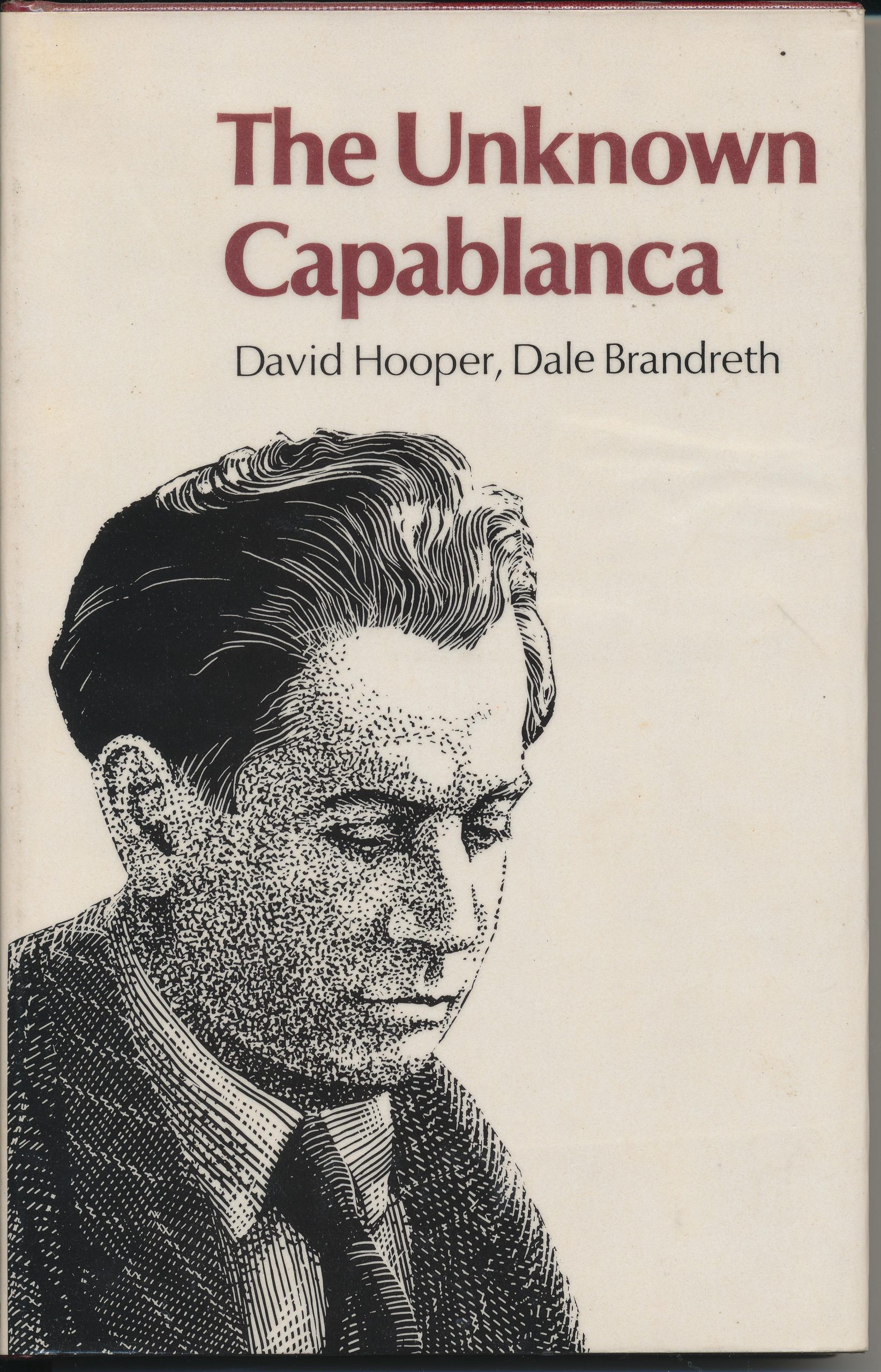
and with Ken Whyld, The Oxford Companion to Chess.
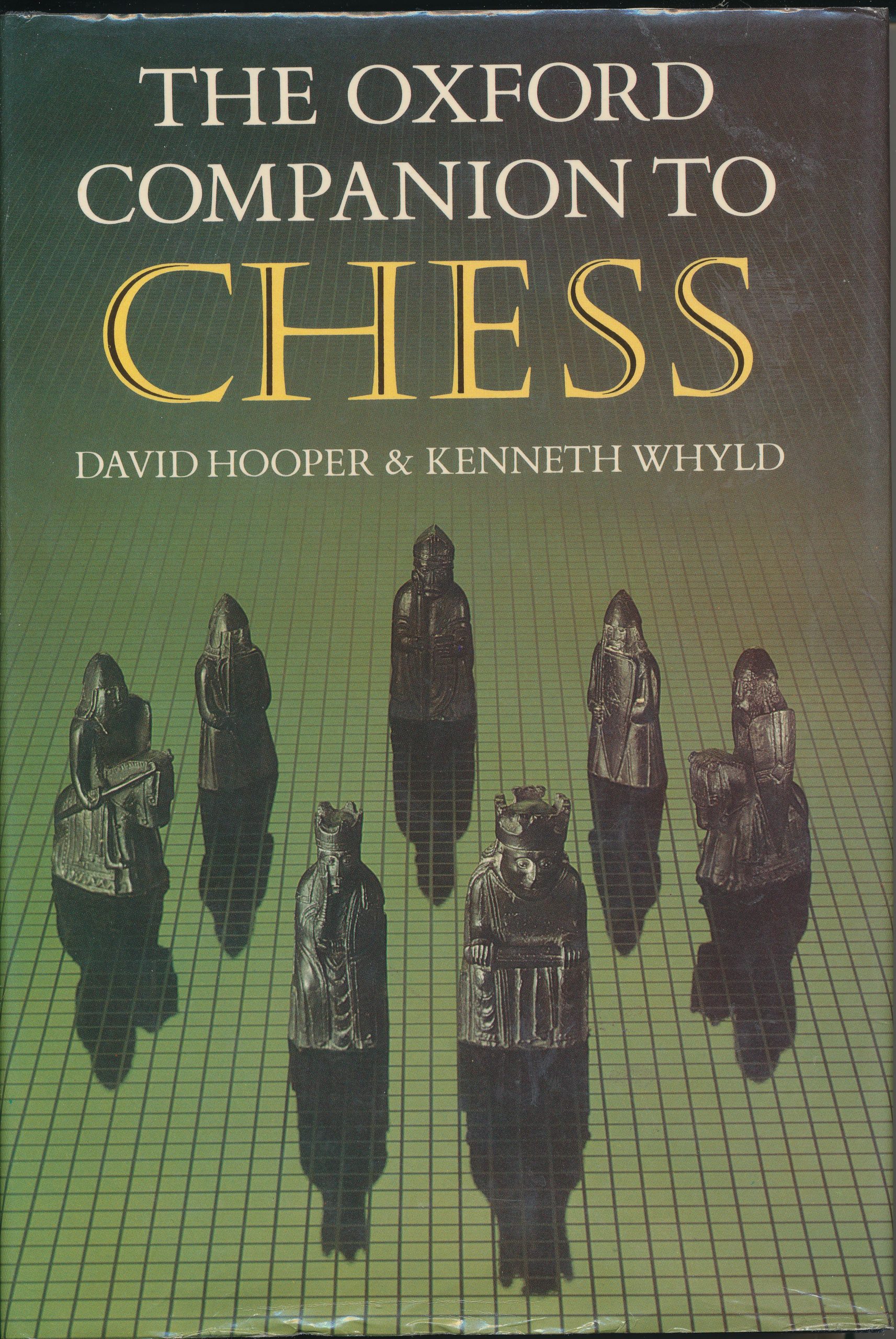
Ken Whyld
From The Encyclopaedia of Chess by Harry Golombek :
British amateur (an architect by profession) whose best result was =5 in the British Championship at Felixstowe 1949 along with, amongst others, Broadbent and Fairhurst.
Hooper abandoned playing for writing about chess and has become a specialist in two distinct areas. He is an expert on the endings and has a close knowledge of the history of chess in the nineteenth century.
His principal works : Steinitz (in German), Hamburg, 1968; A Pocket Guide to Chess Endgames, London 1970.
Here is an interesting article from Edward Winter
Here is his brief Wikipedia entry.
BCN wishes Happy birthday to GM Jonathan Hawkins (01-v-1983)
Here is his Wikipedia entry
Jonathan was Southern Counties (SCCU) champion for the 2014-15 season sharing with Keith Arkell.
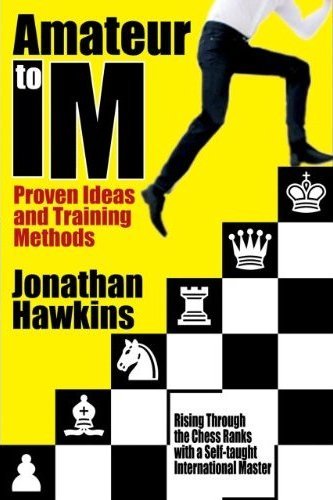

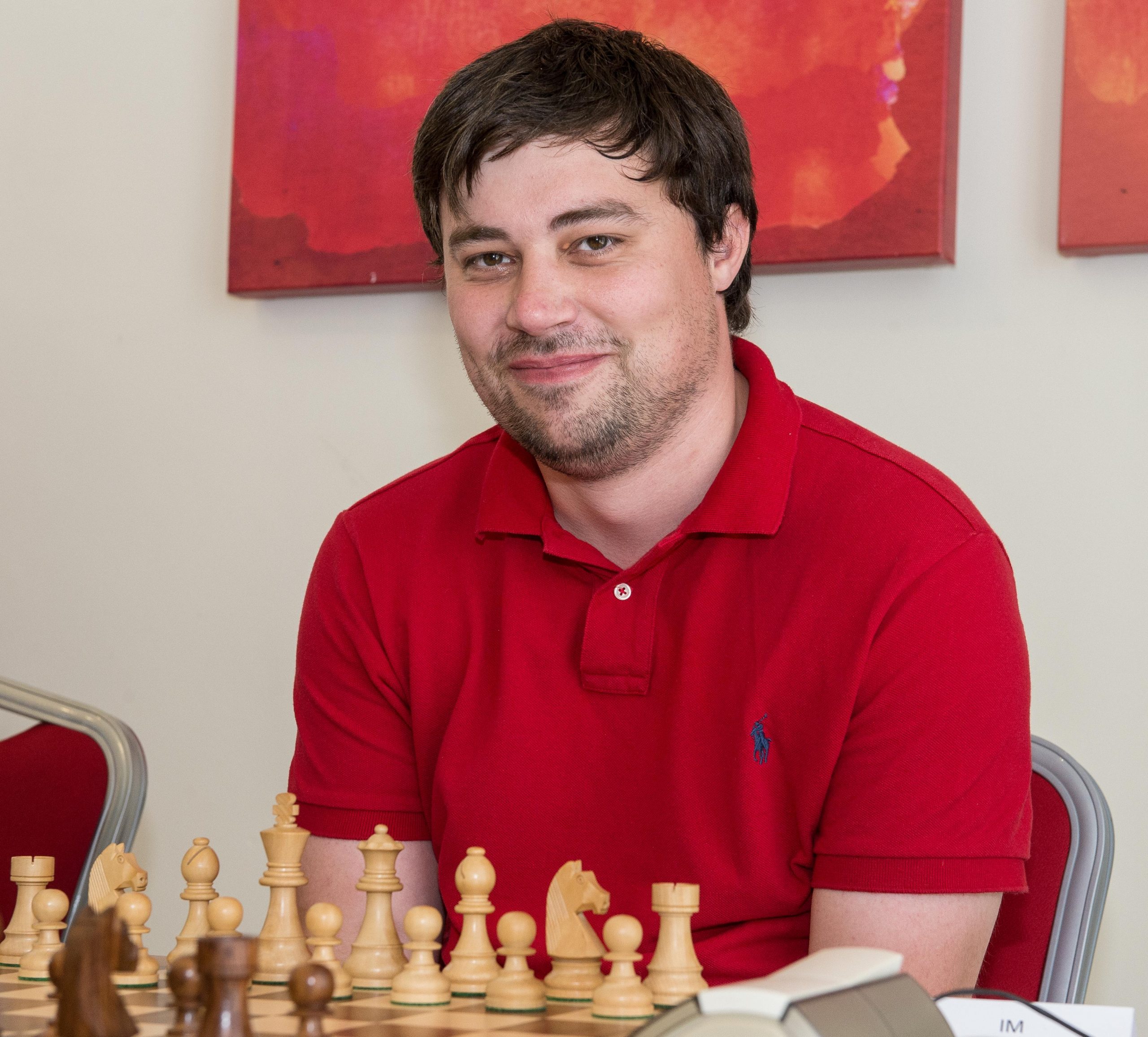
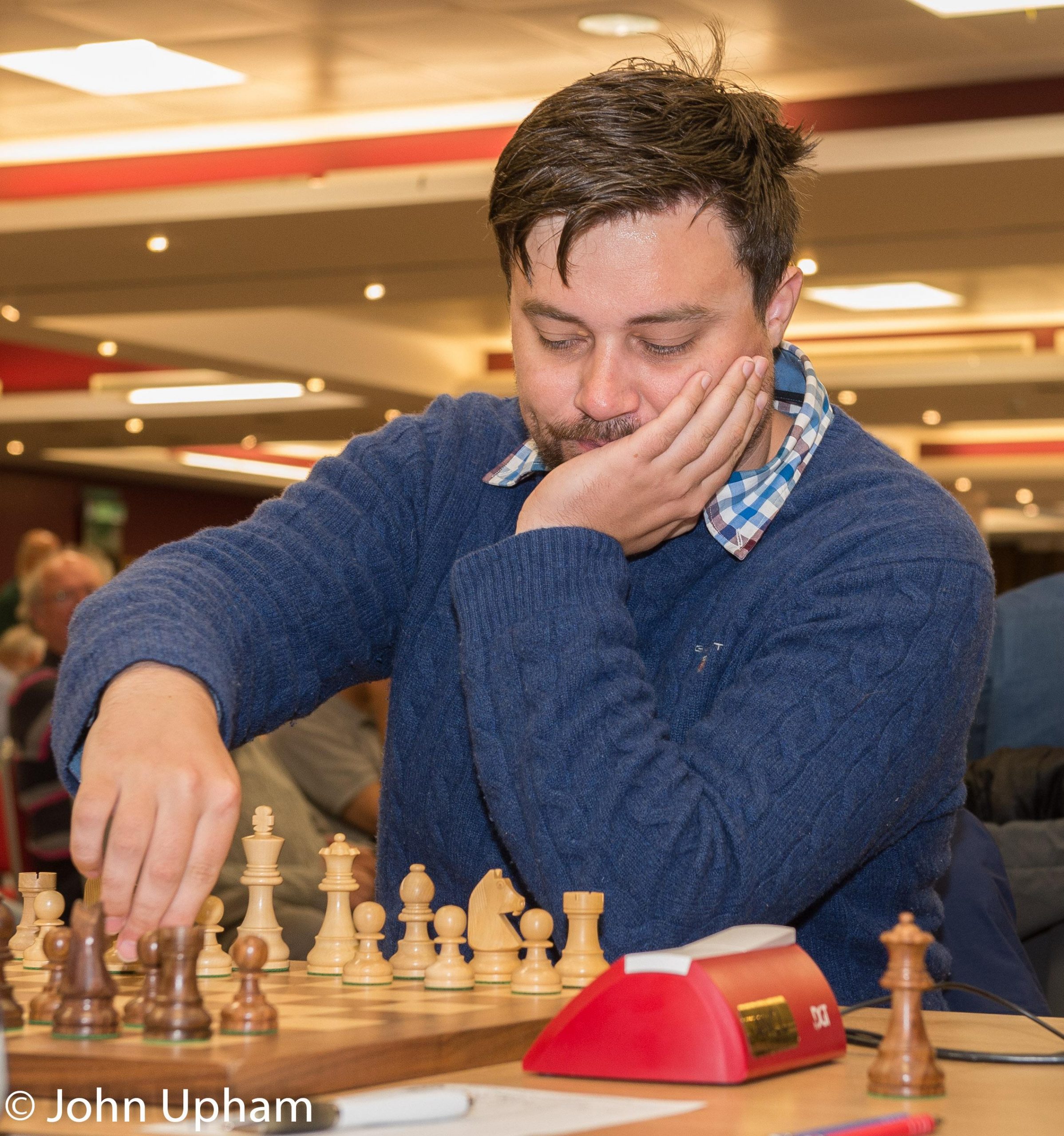
BCN wishes IM Lawrence Trent (28-iv-1986) Happy Birthday!
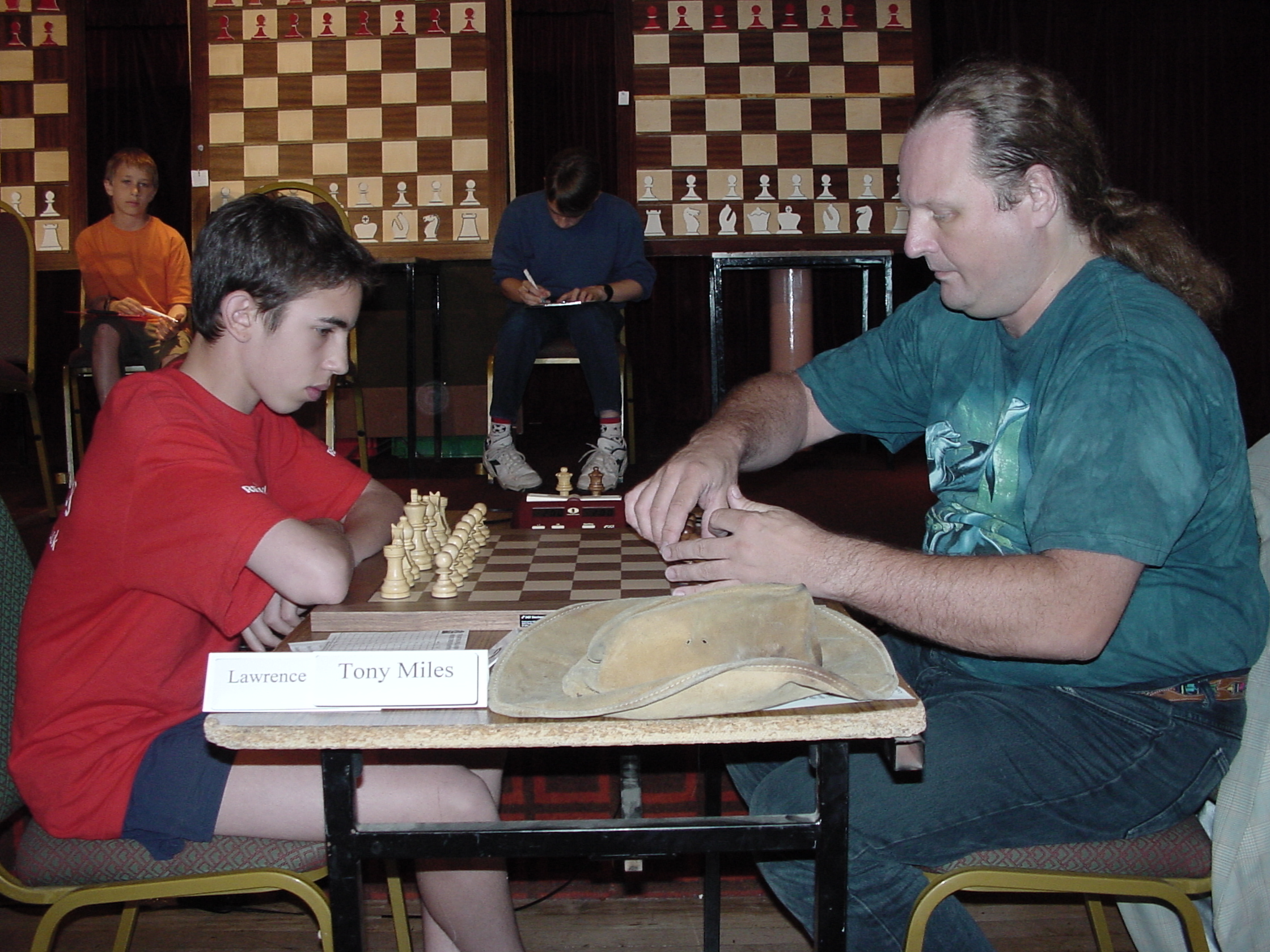
Here is his extensive Wikipedia entry
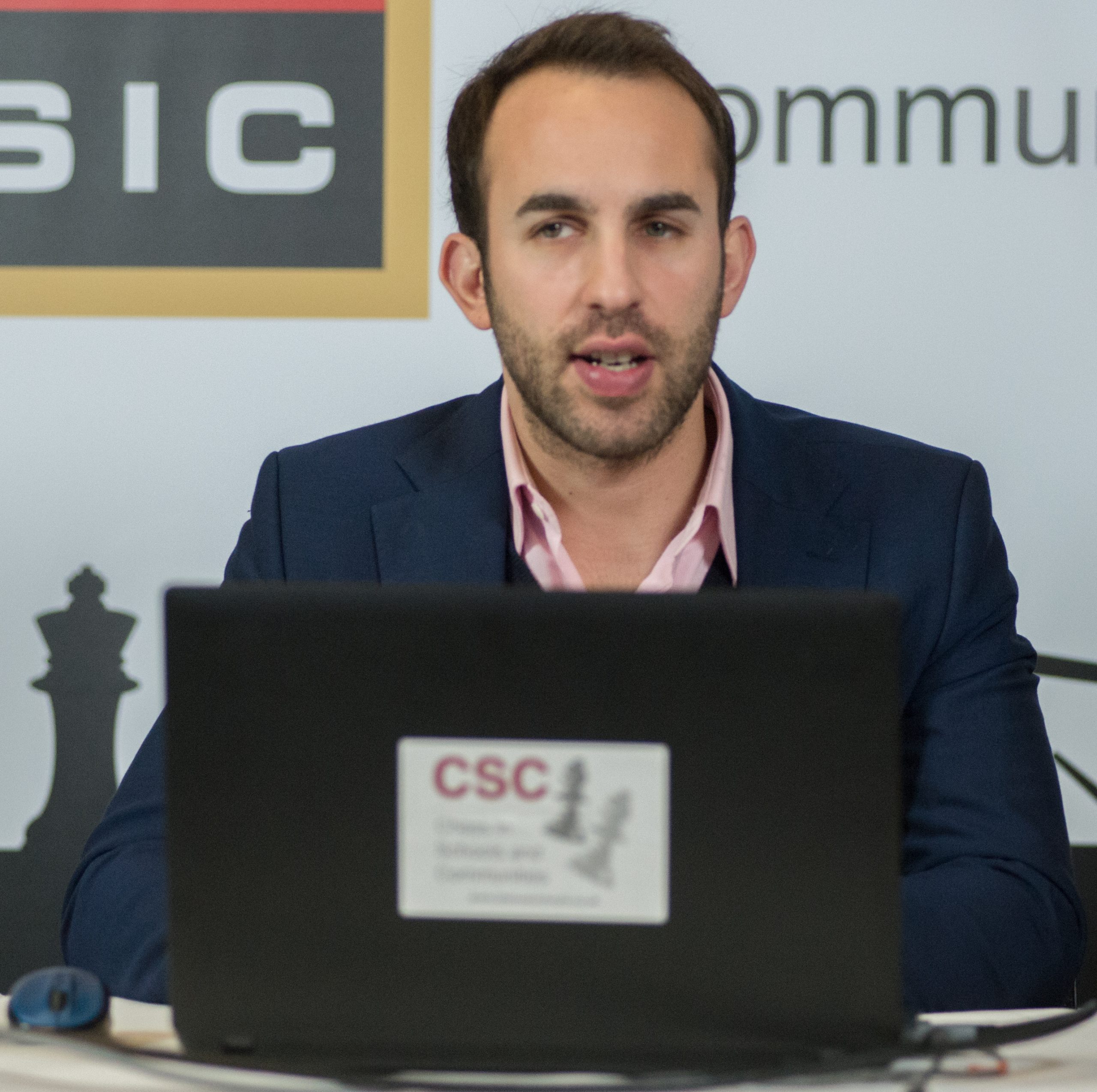
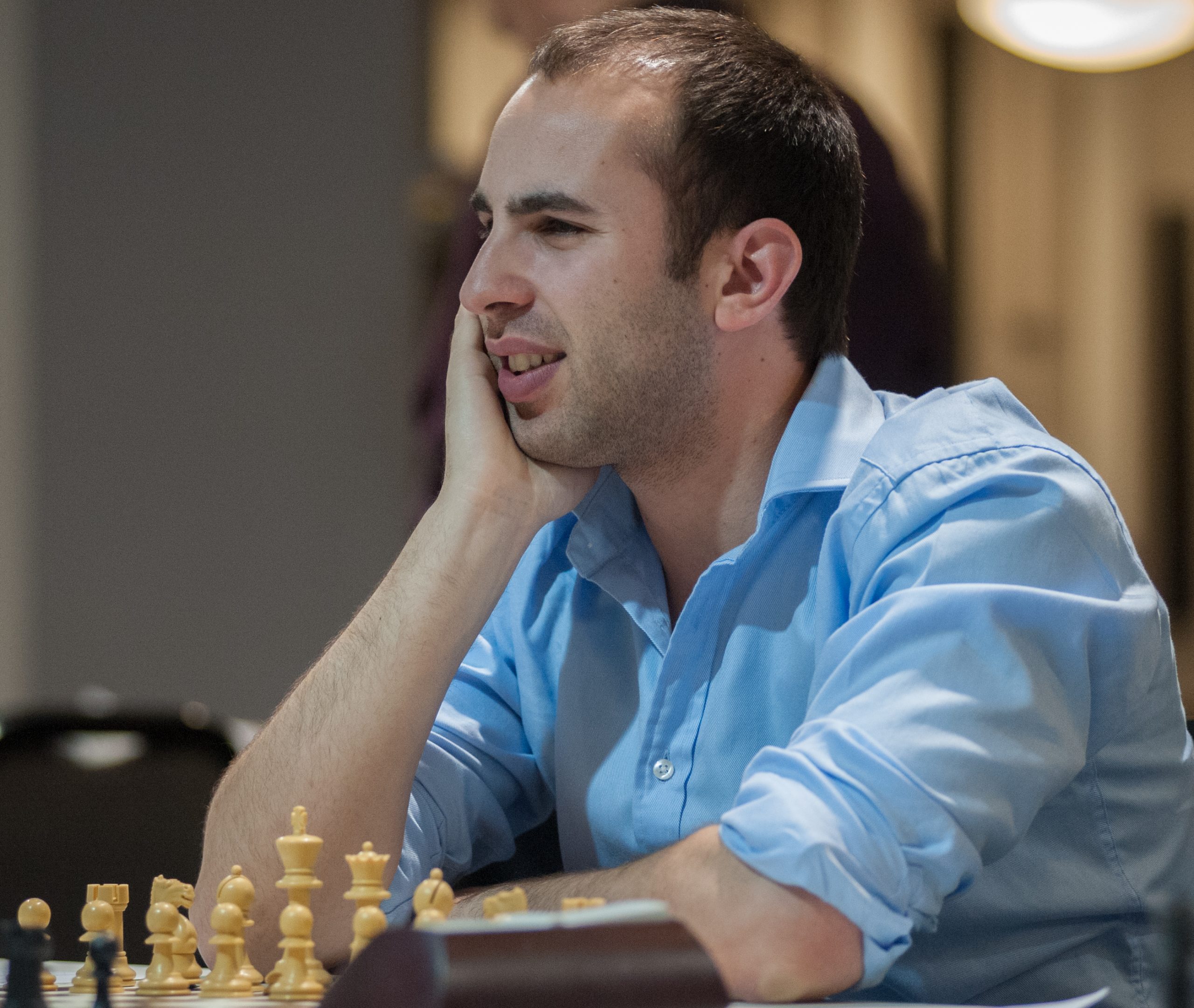
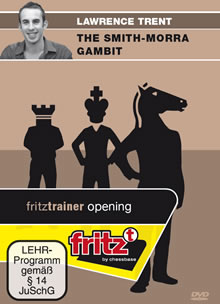
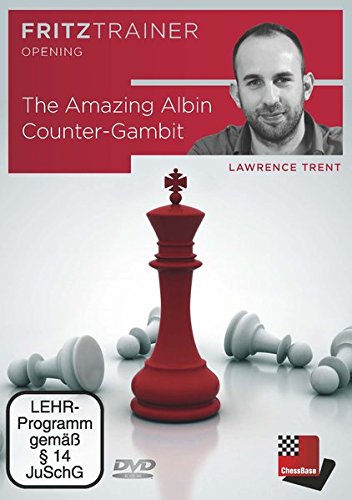
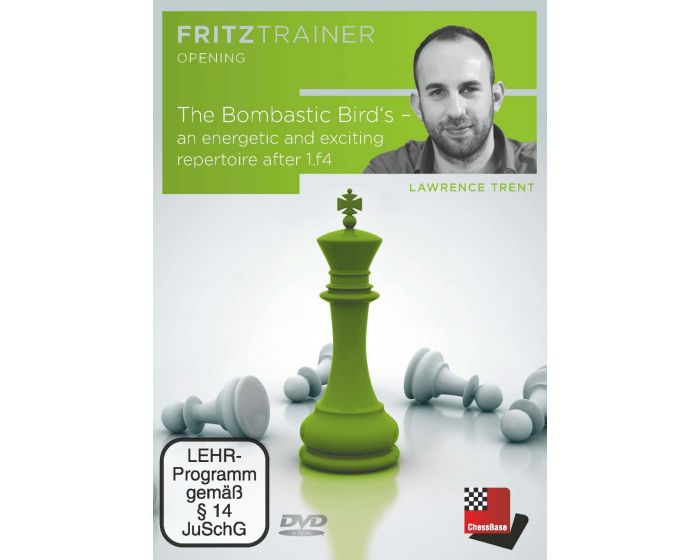
BCN wishes GM John Nunn Happy Birthday (25-iv-1955). John resides in Bude, Cornwall with his wife Petra (née Fink) having previously resided in Chobham, Surrey. John became a director of Gambit Publications Ltd. on January 30th, 1997 along with Murray Chandler and Graham Burgess. WFM Petra Nunn is the German editor.
Harry Golombek OBE wrote the following (presumably in 1978) in the 1979 Dataday chess diary:
“Fortunate is the country which has a number six player as good and as effective as John Nunn. As I wrote last time, ‘The former European Junior champion is such a fine player and pursues the game with such energy when he does play that one is apt to forget he is an amateur with only a limited amount of time to spare for study of the game.’
He like Mestel, obtained a grandmaster norm at the Lord John tournament where he score 5.5 points coming just below Mestel but beating both Quinteros and Torre in the process.
At the Moscow Team tournament, already mentioned, he had a magnificent result scoring 3.5 out of 7 on board 4. Perhaps it was this performance that increased his Elo rating by 30 points and when I say board 4 it should be realised that opposition consisted of such players as the former world champion Tal and many other genuine grandmasters. I give the entertaining and fighting draw he had with Tal as Moscow.”
From British Chess (Pergamon Press, 1983), pp.201- 210:
“It is a difficult task to pick out three games from many hundreds played over the years. What criteria should be used in the selection? Brilliance, strength of opponent, importance of result – all these are reasons for a game to stand out in one’s memory. As this selection is autobiographical I have given prominence to the last criterion and so I will give one game from each of the tournaments in which I gained an International title, and one game from a team tournament.
The first of these tournaments was the European Junior Championships held over the new year 1974-5 in the Dutch town of Groningen. It was only by chance that I played in this event at all. Originally Jonathan Mestel was the English representative, but he was invited to play in concurrent Hastings Premier and so I travelled to Groningen instead.
The organisation of the Championship has changed over the years, but at that time a seven-round Swiss formed a preliminary event, with the top ten of the twenty-eight participants going on to an all-play-all final section. The score thought to be sufficient for qualification was 4.5/7 and the accepted method of reaching this target was to win one’s first two games and then draw all the others., facilitated by the fact that one’s opponents would also require draws to reach the magic figure 4.5. However tie-breaking in the final was decided firstly by the score in the preliminaries and secondly by the result of the individual game in the final, so it was clearly an advantage to outstrip one’s rivals in the Swiss. I started with the requisite two wins and then drew my next three games, but in round six with the white pieces I decided to play for the win against Manny Rayner of Wales. I felt slightly self-conscious playing amidst a row of boards on which peace has been concluded at an early stage, but I did gain the full point. The game stirred up a certain amount of comment and I even heard one player’s second declare
You can’t trust Nunn!
In such a short race there will inevitably be upsets and the unlucky man on this occasion was Alexander Ivanov, the Russian representative.
The final round started less smoothly for me and after five rounds the leading scores were Borokowski 4, Szekely 3.5 and van der Sterren and myself on 3. I had already beaten van der Sterren, who had tied with me in the preliminaries, so in view of the tie-break rules, I had effectively half-a-point advantage over the rest of the field. In round six I played Borkowski and a win for would leave the tournament wide open.
I scored well in the three rounds after this game and appeared to have a good chance of winning. However in the penultimate round I lost to Lars-Ake Schneider in only 18 moves so as the last round started the leading scores were Szekely 5.5 out of 8 with Schneider, Borkowski and myself on 5. Skekely was White against Borkowski while I had White against the Israeli Grunfeld. Schneider blundered quickly and lost, while to my surprise Skekely drew in only 14 moves. The way was now open to the title if only I could defeat my opponent. However after 4.5 hours play I had only a slight advantage. But then a curious thing happened. I made my 40th move with a minute or two left on my clock and Grunfeld, who had half an hour left, replied almost immediately. The game was played to a finish without adjournment and now, with an hour on my clock, I was able to see that his 40th move was a mistake allowing a decisive combination. This small event decided the result of the tournament and so I became European Junior Champion and an International Master.
The second game was played in the Finals of the European Team Championship held at Moscow 1977. This event which takes place every three years, is second in importance only to the biennial Olympiads. The twenty teams entering were divided into five preliminary groups to produce seven qualifiers for the final. The USSR, as previous winners, were admitted directly to the final to make up the total of eight countries represented at Moscow. England qualified ahead of Holland, the other teams in this preliminary group being Wales and France. Since the matches in the final take place over eight boards this event is much more test of strength in the depth than the four board Olympiads and so England was not expected to do well, especially in view of the absence of Tony Miles. Nevertheless the final result of bottom place was a disappointment. My individual performance of 50% against strong opposition was quite satisfactory, but it was the following game which made the tournament particularly enjoyable for me.
We now move ahead to the summer of 1978. At this time I had a 9-game grandmaster norm from the Lord John Cup held in London during September 1977 and so I needed a 15-game norm to actually gain the title. In July I played in an event at Lublin in Poland at which, however, there was no GM norm. My play showed evidence of lack of practice and my final position was rather low.
Then I went on to the annual Tungsram tournament held in Budapest during August. This was a much stronger event (category 10) and the GM norm was a formidable 10 out of 15. However my play was much better than in Poland and, after a first round loss, I began to score well. After 12 rounds the leading scores were Kuzmin 8, Nunn 7.5 and Csom, Jansa, Adorjan and Mednis 7. I could have had half a point more if I had not overlooked a combination two (!) moves deep winning Kuzmin’s queen, but, apart from this incident Kuzmin had played very well and seemed to be heading for first prize.
My sights were firmly set on scoring 2.5 from the last three games to reach the GM norm and my interest in winning the tournament was secondary. However, Kuzmin was destined to lose his next two games and so these two objectives became one and the same.
In these final games I was to be White against F. Portisch (Lajos’ brother), Black against GM Jansa and in the last round White against Hardicsay, the weakest player in the tournament. The plan was clear – I had to win both games with White and hold Jansa to a draw with the Black pieces. The execution, however, was more difficult.
While preparing for F. Portisch I noticed that he played either the French or the Sicilian Pelikan. Since I was playing only for the win I naturally hoped he would opt for the complications of the Pelikan. Two days before this game I had been given a copy of the latest issue of the Hungarian chess magazine, Magyar Sakkelet, containing a game Honfi – Piasetki in which Honfi had played 11.Bxb5!? and won with the aid of a novelty. This piece sacrifice seemed to be ideal for stirring up as much trouble as possible and so I decided to try it in the game, at the same time hoping that F. Portsich had not read his magazine!
The first obstacle had been surmounted, but two more remained. The opening went badly against Jansa, but I managed to restrict myself to a small disadvantage in the early middle game. To my good fortune the Czech Grandmaster was going through a bad patch, having started with 7/10 anf then scored only half a point from his next three games. With only two rounds to go his interest in the tournament had dissipated and rather try to exploit his edge he offered a draw. Of course I was only too pleased to accept.
Before the last round I was extremely nervous but bolstered my confidence with that thought that Hardicsay had only managed to score 3.5/14 , and indeed had accumulated only half a point from his last six games. In most cases this was due to his chronic addiction to time trouble. At first things went well. I accepted a pawn sacrifice and gradually seemed to be repelling my opponent’s threats. But at a crucial moment I chose a faulty bishop move and suddenly my difficulties were growing from move to move. Before long I was pawn down with an inferior position. My only hope lay in the fact that Hardicsay had only seconds to make the last eight moves of the time control. Exploiting this, I regained the pawn and even adjourned with a slight plus.
After a one hour break play was resumed and once again Hardicsay played well, almost completely neutralizing my advantage. I cunningly made some pass moves with my King until he was once again in time trouble and then tried my last winning attempt!
In the event my opponent made a mistake and a further session was not necessary. The two spectators who had stuck it out to the end dashed up to congratulate me and Hardicsay gave me a distinctly sour look (justifiably!)- I had become a Grandmaster!
From The Encyclopaedia of Chess (Batsford, 1977) by Harry Golombek OBE :
British International master and European Junior Champion, 1975. Born in London, Nunn learned chess at the age of four and soon revealed a great aptitude for the game.
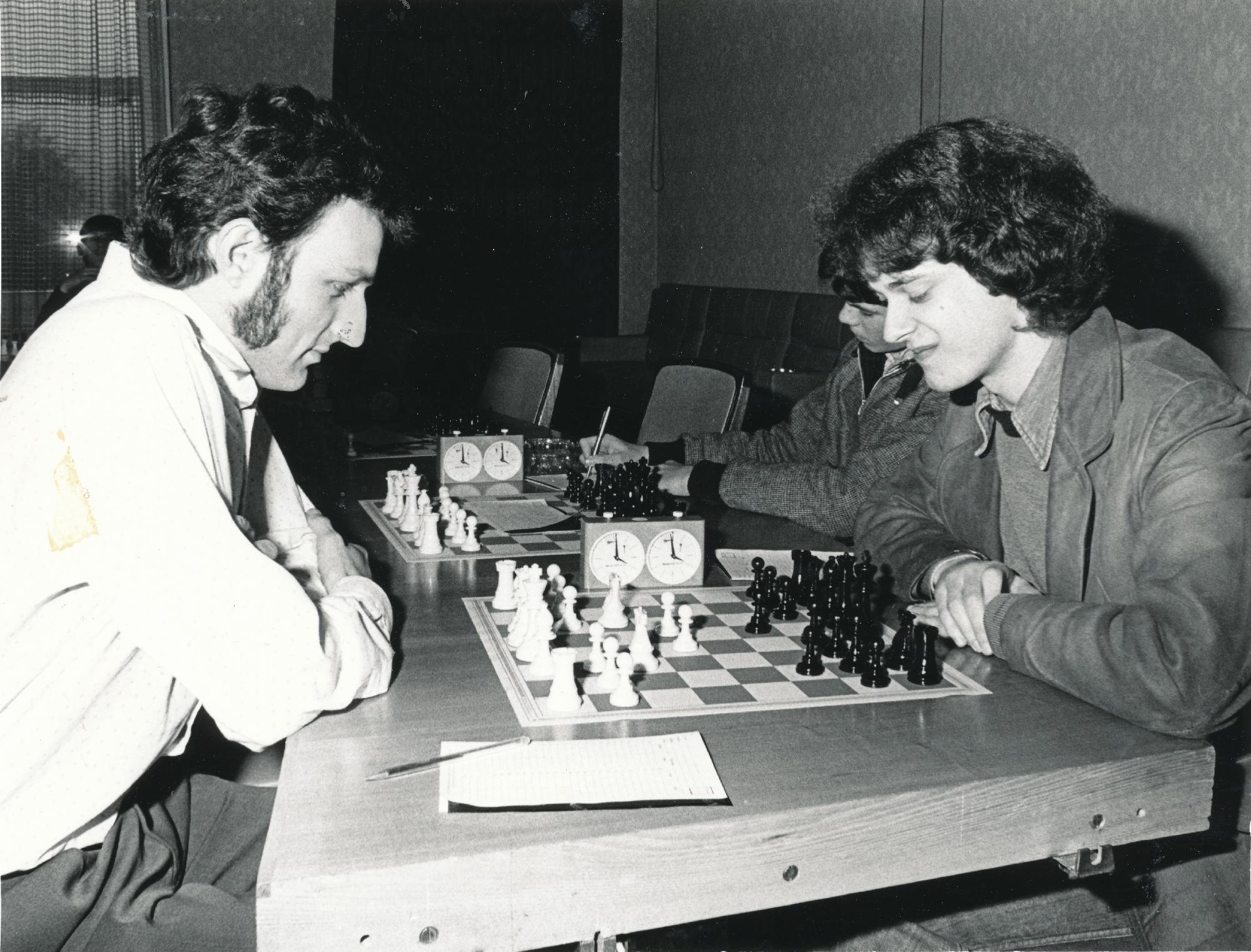
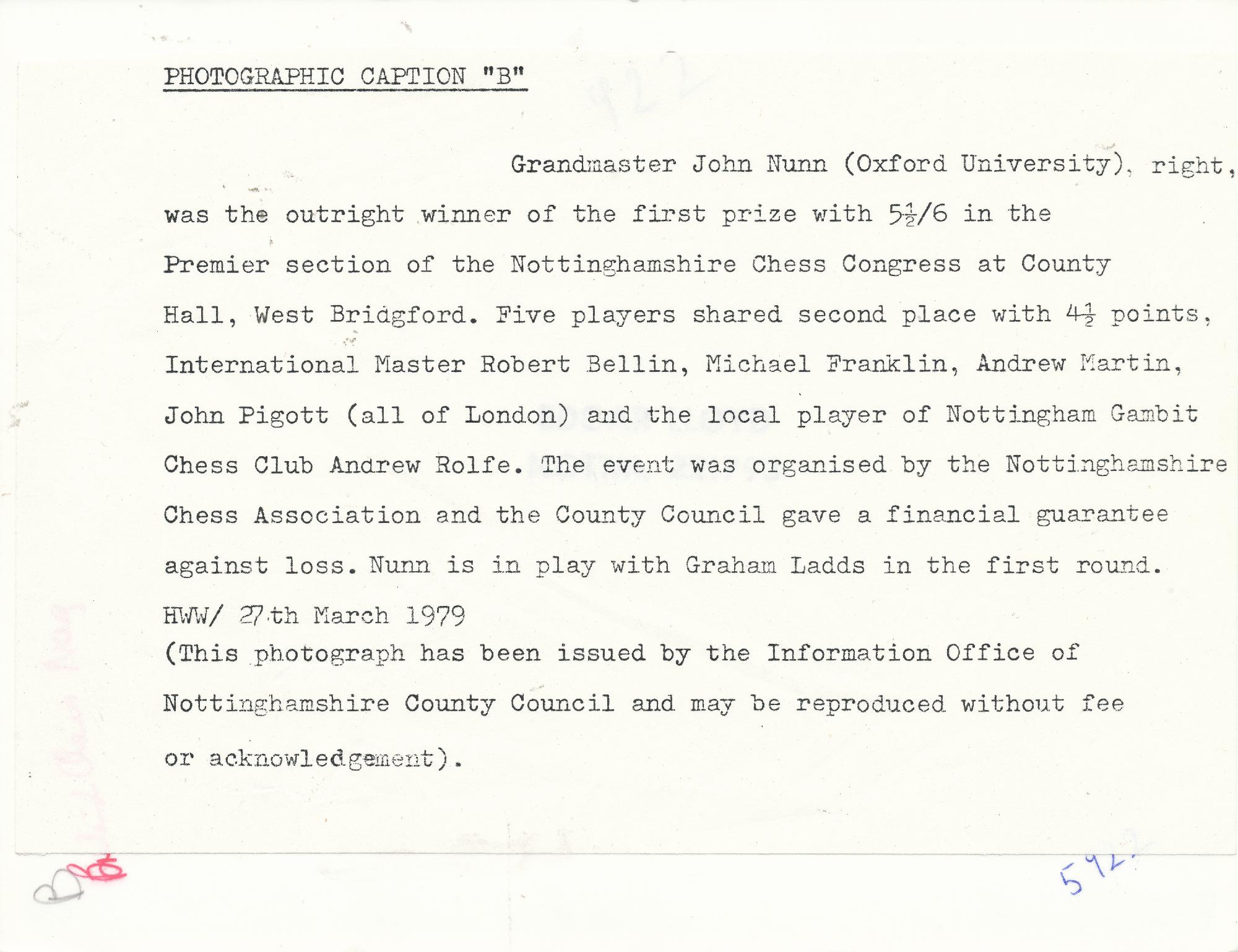
He came 6th in the Norwich Junior international tournament in 1970 and went up to Oxford University to take a mathematics degree at a very early age. He played on top board for the University from 1972-6 and is now preparing for a doctorate there.
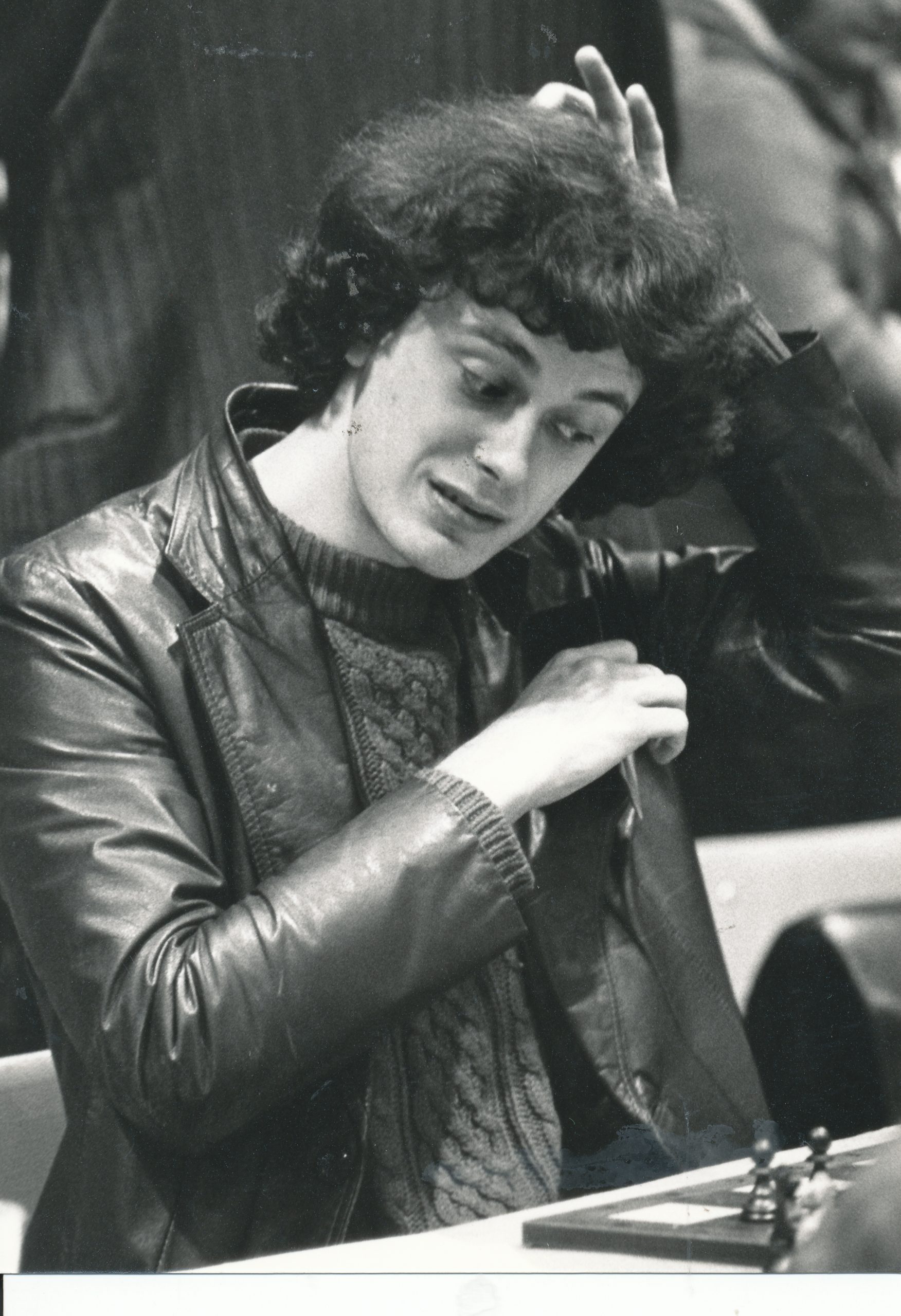
He won the European Junior Championship and with it the international master title in Groningen in 1975. In that year too he was equal first in the IBM Master tournament, and at London in 1975 he reached an international master norm coming 5th in the international tournament there. He played on bottom board at the Haifa Olympiad 1976 and scored 64.2%
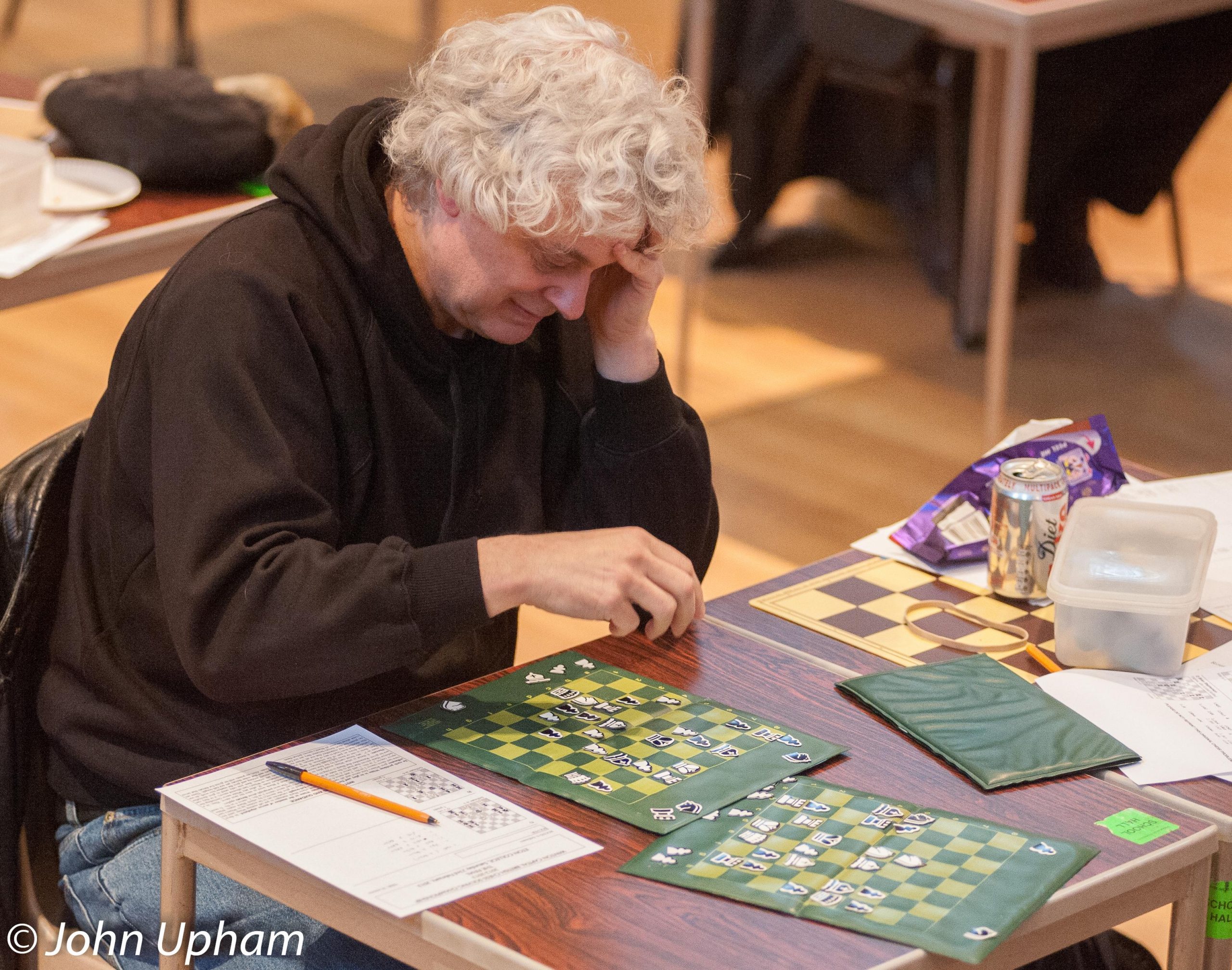
From The Oxford Companion to Chess by Hooper & Whyld :
English player. International Grandmaster (1978), British champion 1980. He went to Oxford at the unusually young age of 15, graduated in 1973. Gained his B.Sc. the following year and his
doctorate in 1978.
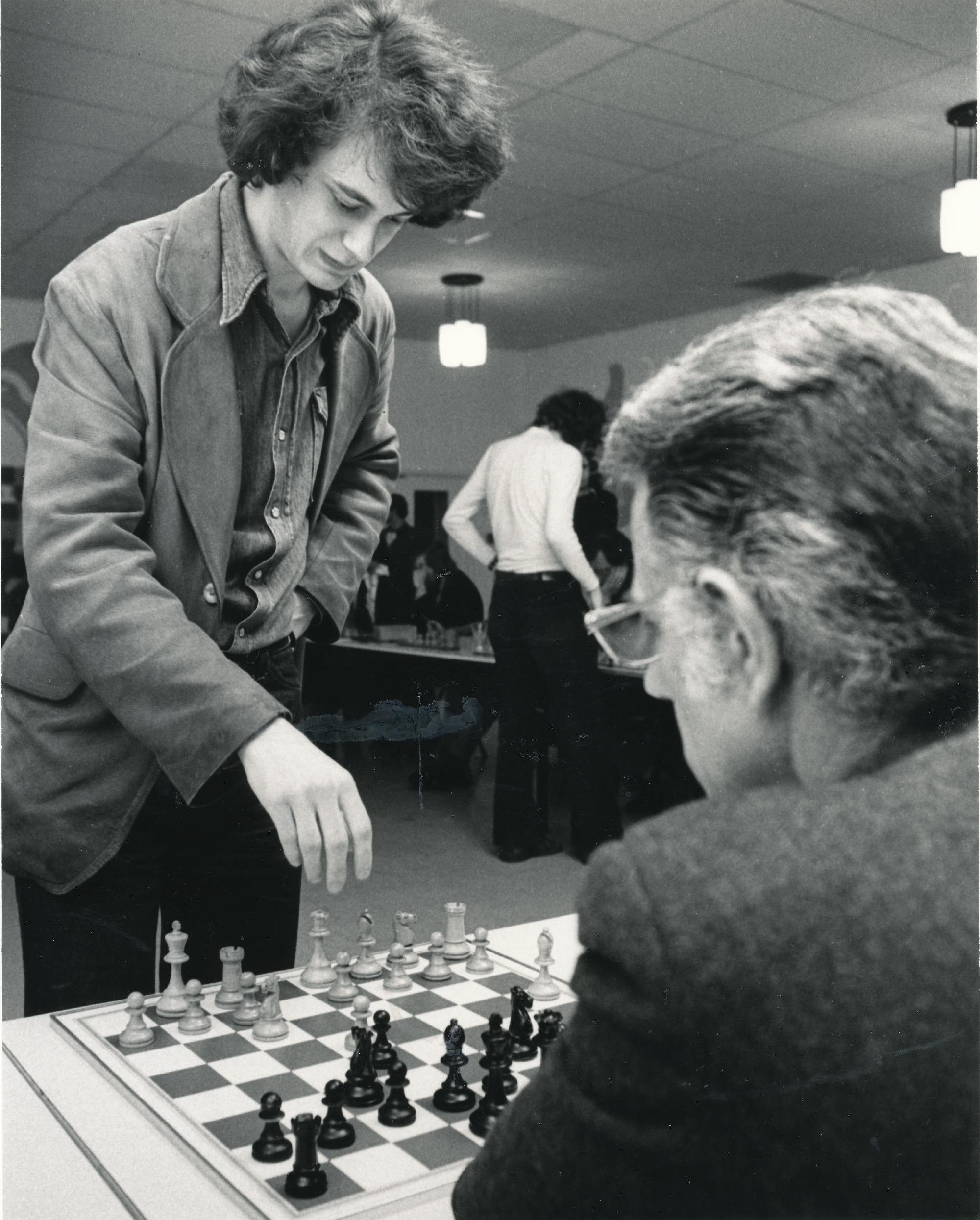
A Junior Research Fellow, he lectured in mathematics until 1981 when he became a professional player. By then he had already achieved several good results in international tournaments: Budapest 1978, first; Hastings 1979-80, first (4-5 = 10) equal with Andersson; Baden-bei-Wien 1980, category 12, third (+5=10) after Spassky and Belyavsky: Helsinki 1981, first (+5 = 6) equal with Matulovich; and Wiesbaden 1981, first (+6=3). In the category 12 Wijk aan Zee tournament 1982, Nunn came first ( + 5=7 — 1) equal with Balashov ahead of Tal, Hubner, and Timman and at Helsinki 1983 he came second (+5 = 6) after Karlsson.
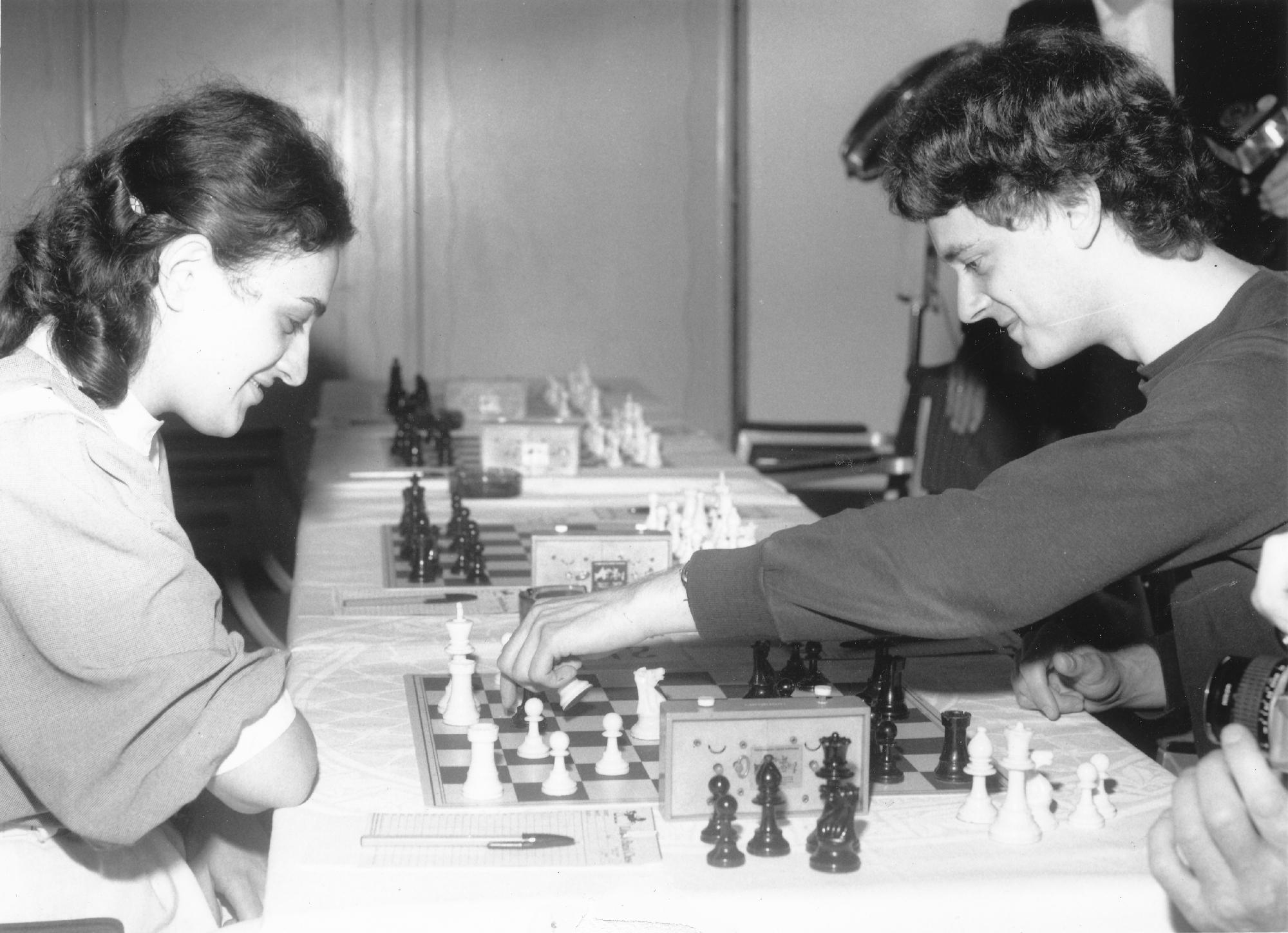
Possessing a remarkably quick sight of the board, Nunn is an expert solver: he made the second highest individual score in the world team solving championship, 1978, and won the solving championship of Great Britain in 1981.
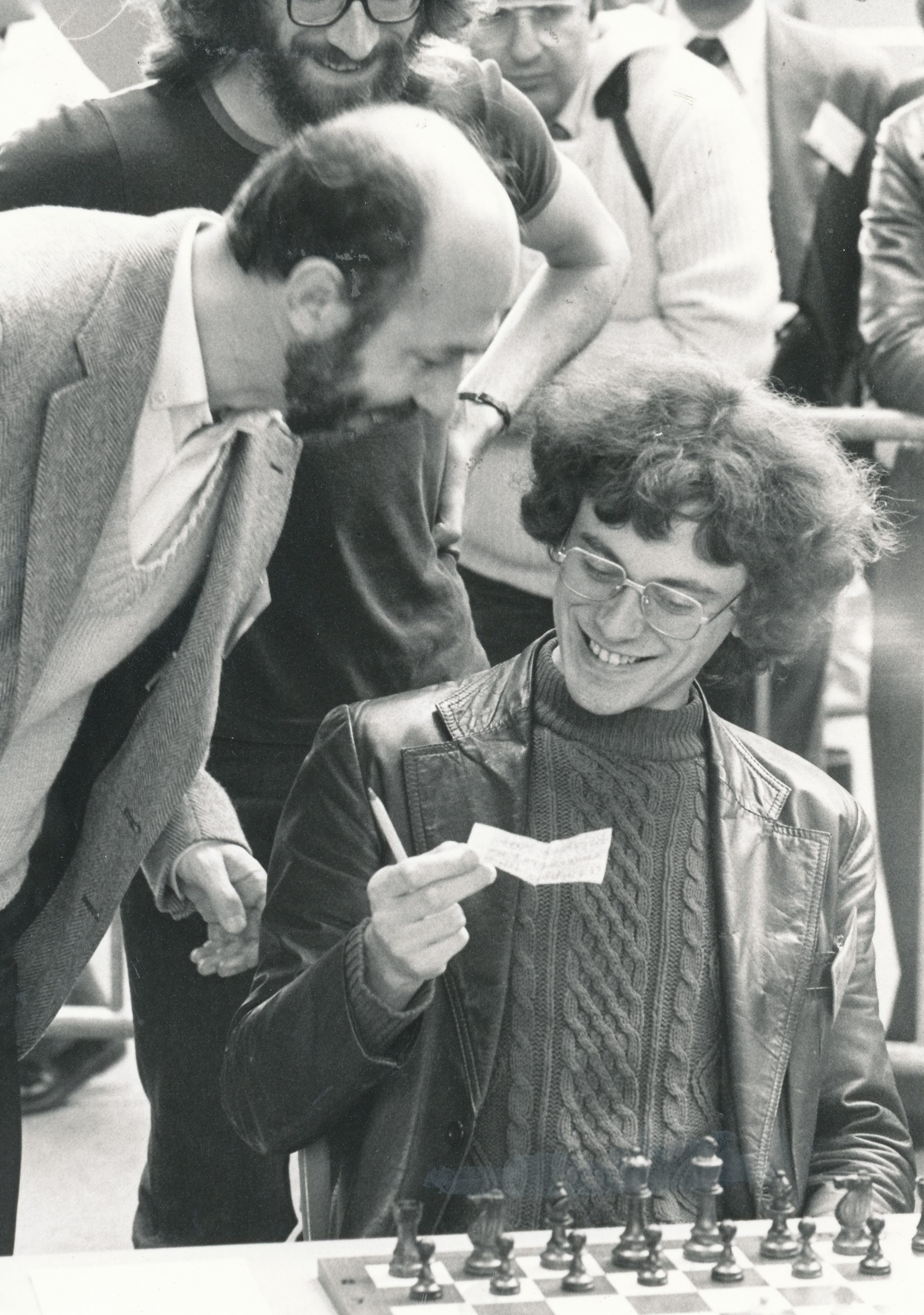
Here is an excellent article from ChessBase
Polugayevsky-Nunn European team championship :
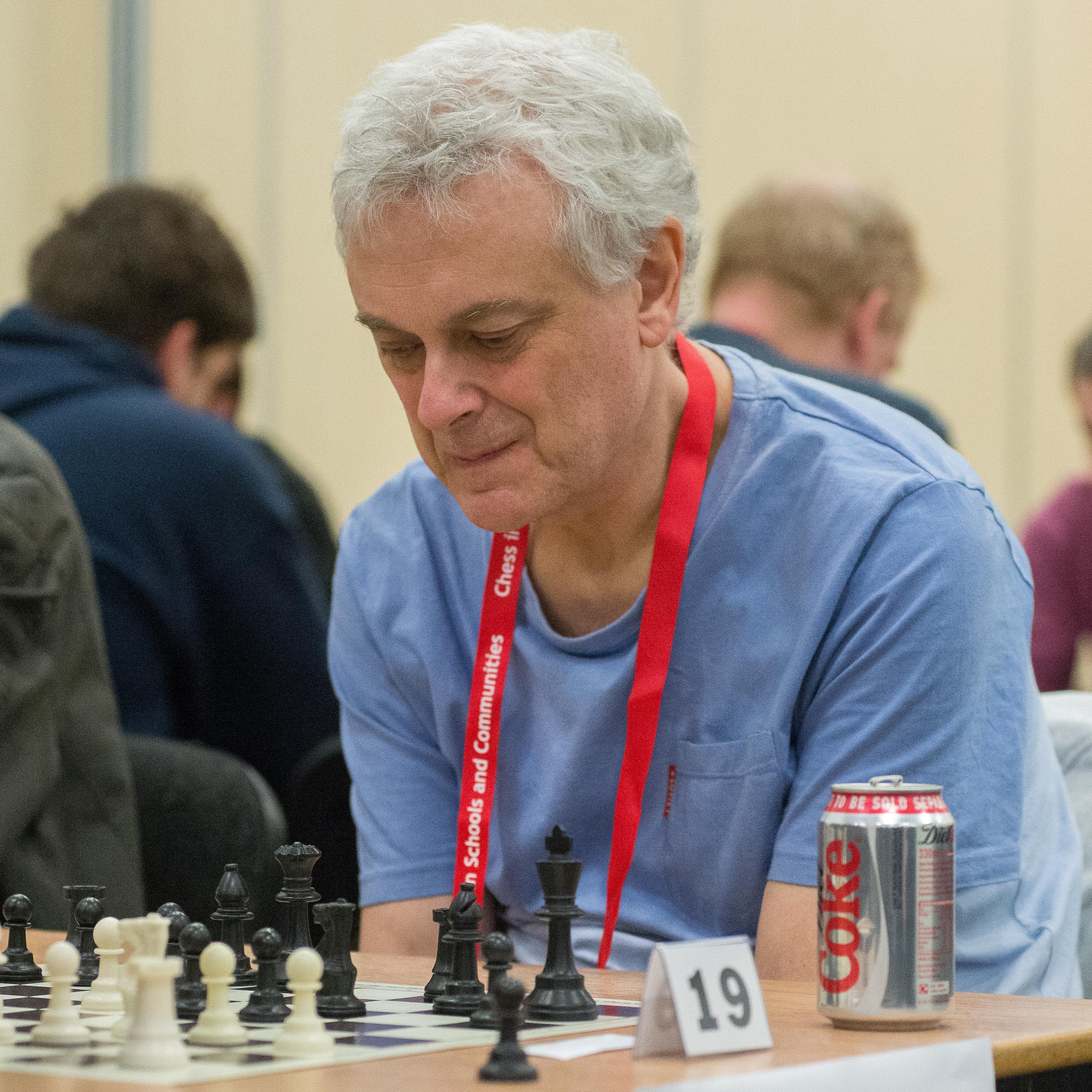
Here is his Wikipedia entry
John and his partner WFM Petra Nunn have recently relocated from Chobham in Surrey to the West Country. We wish them a happy retirement!
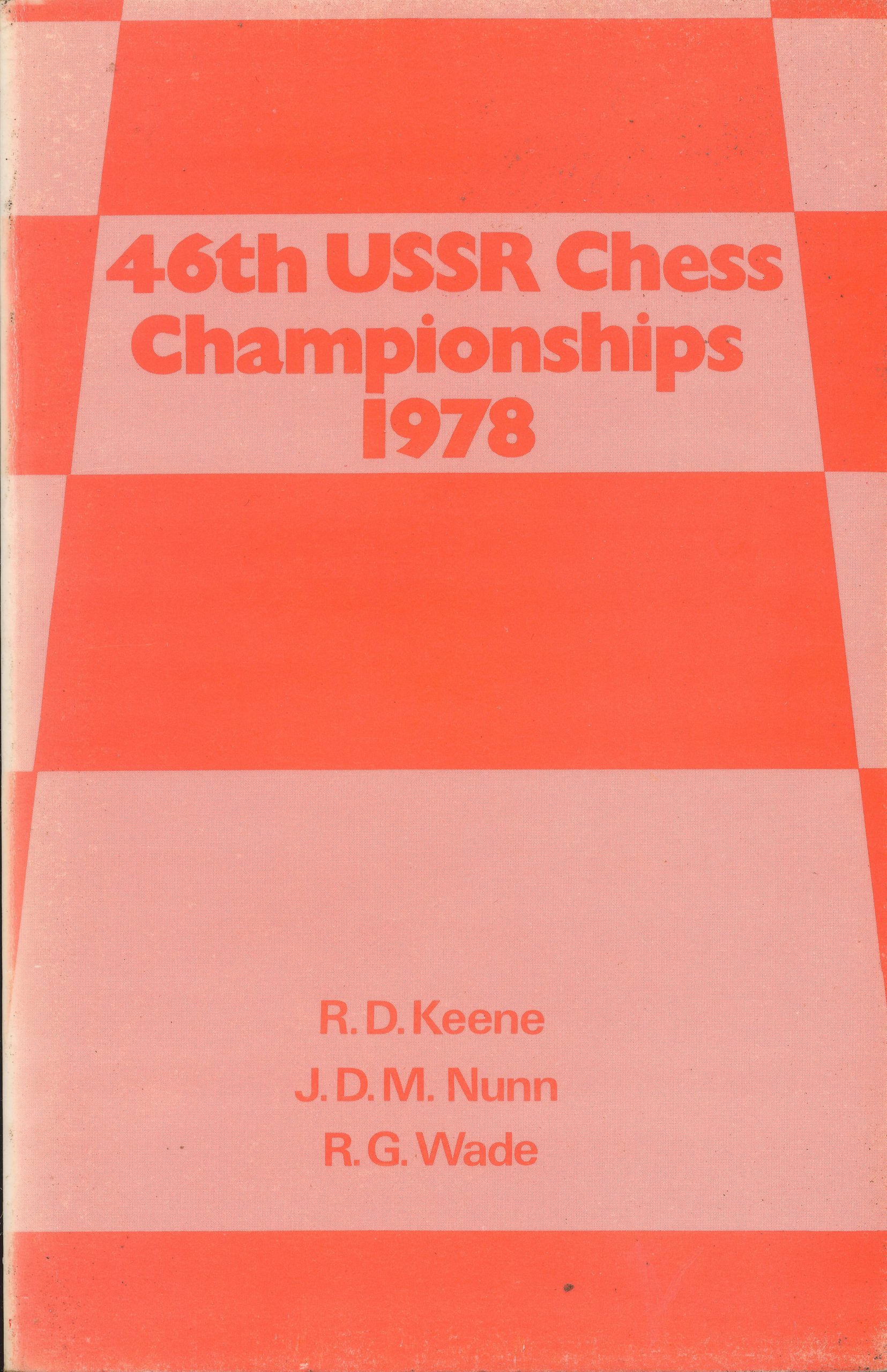
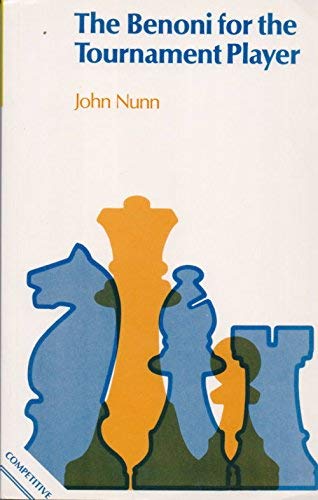
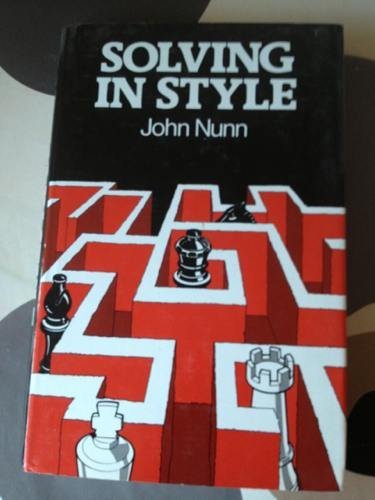
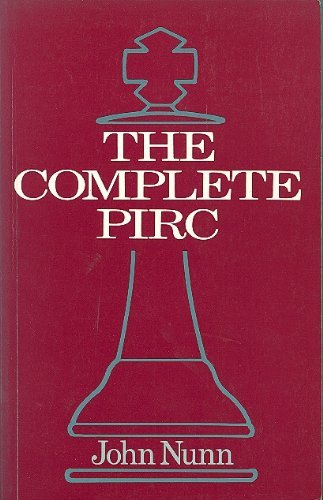
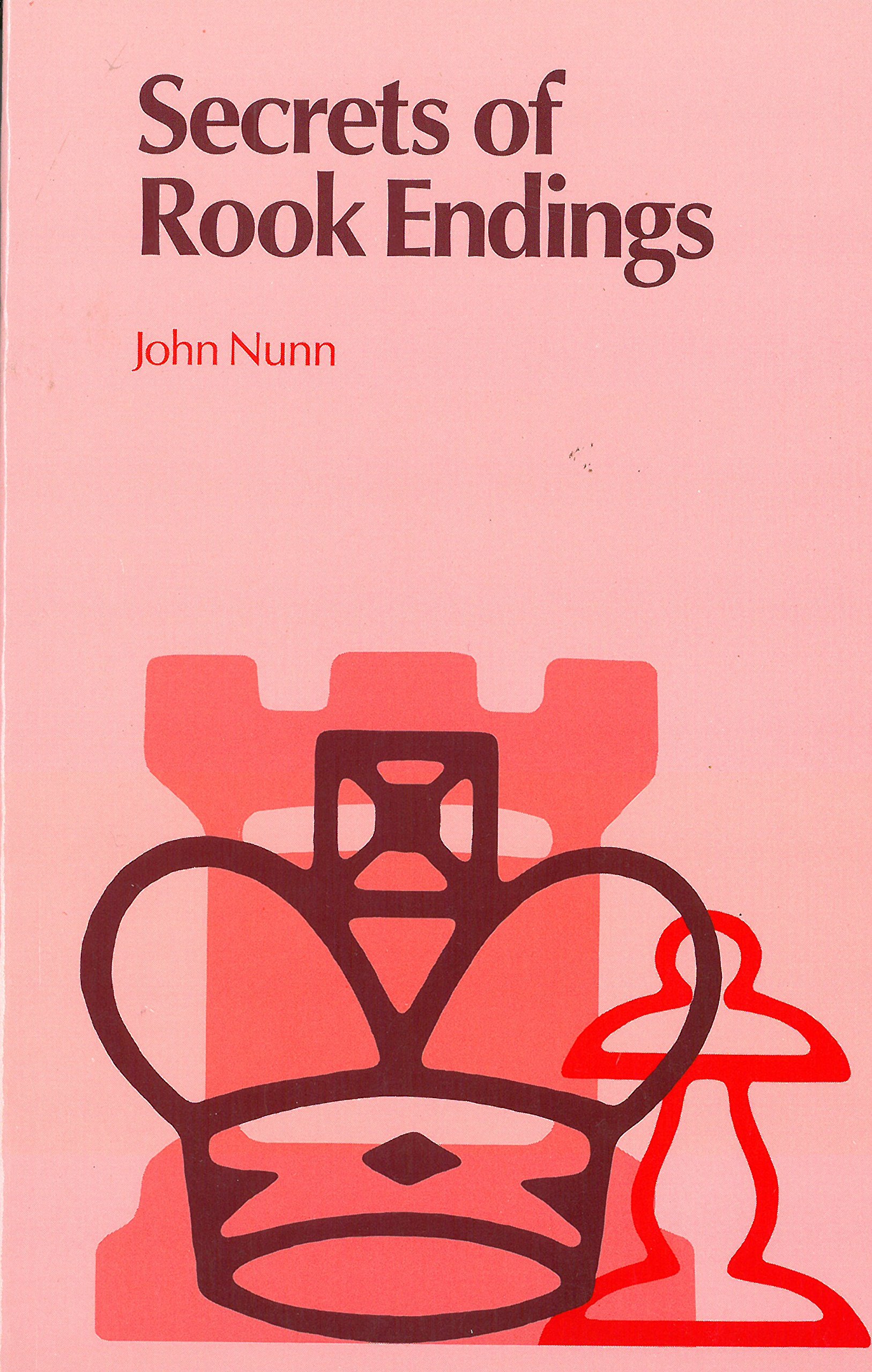
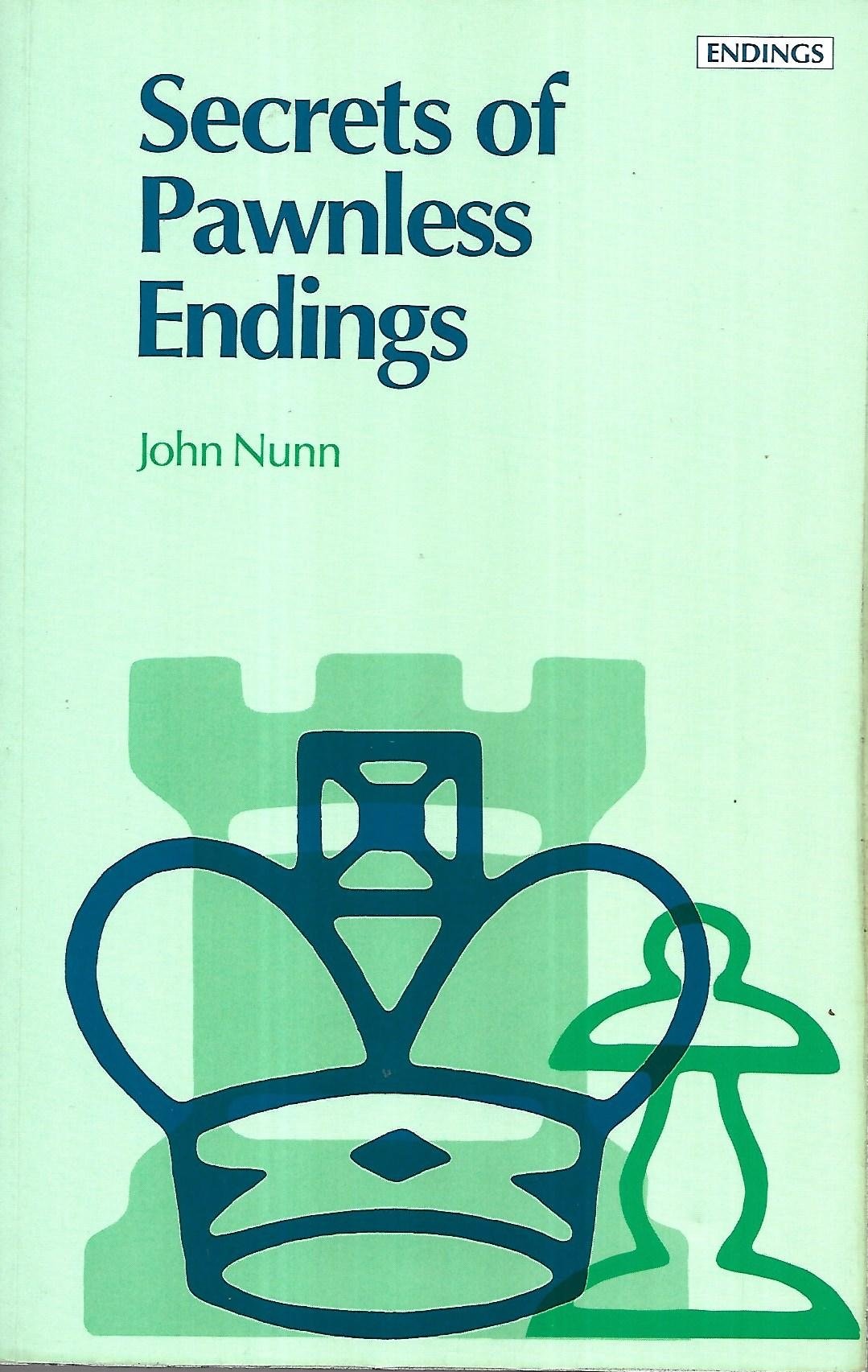
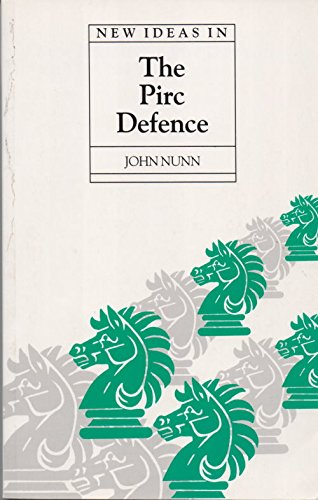


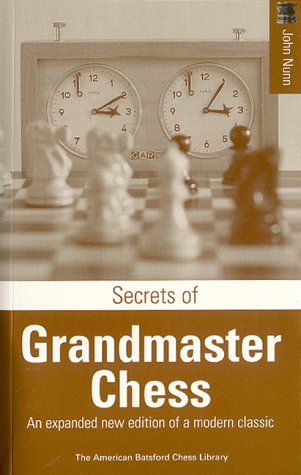
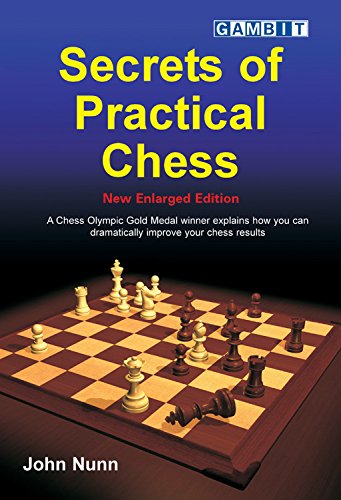
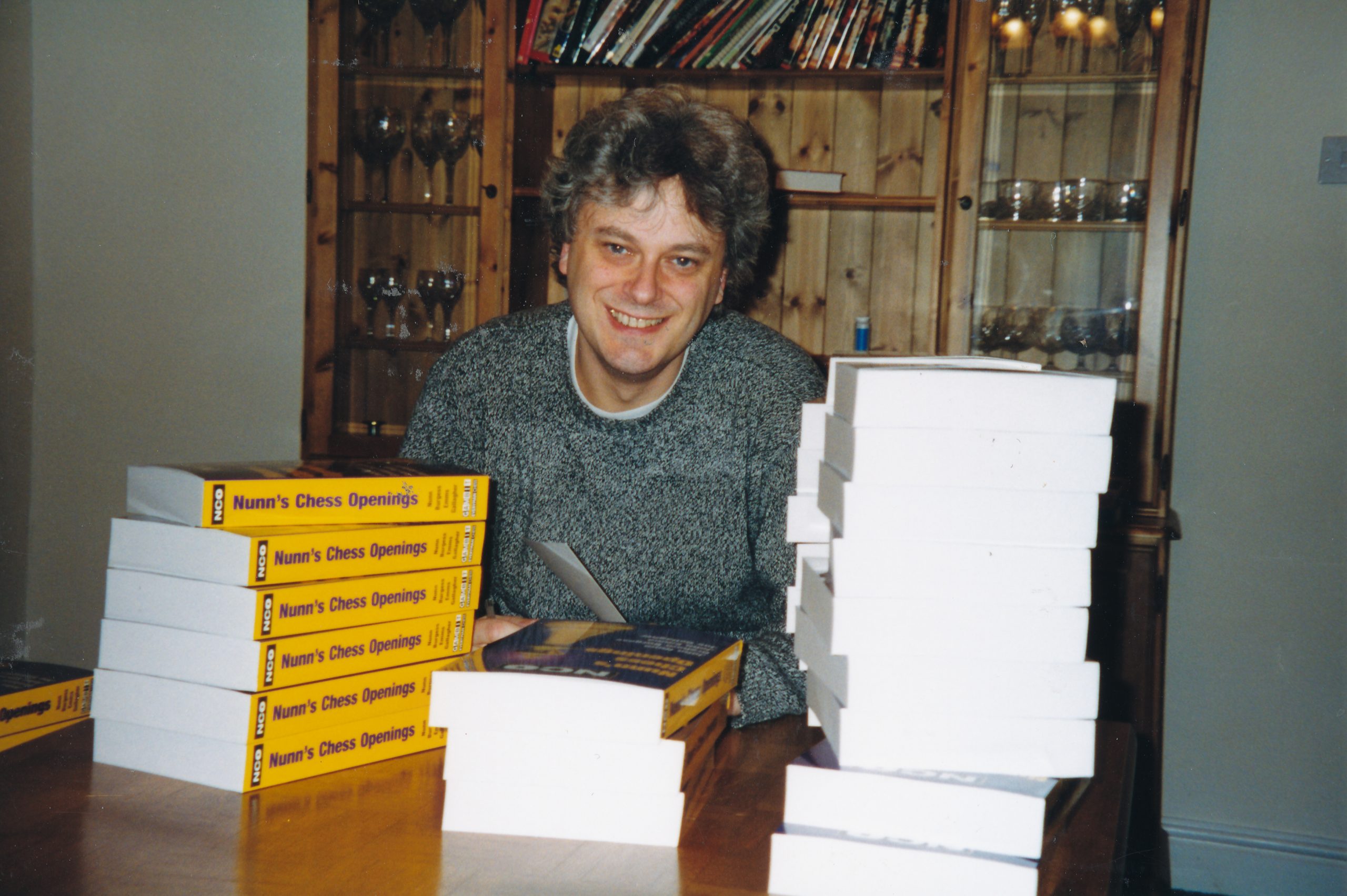

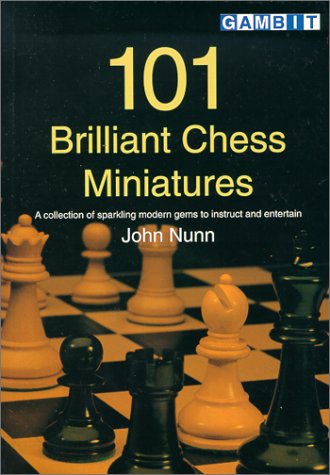
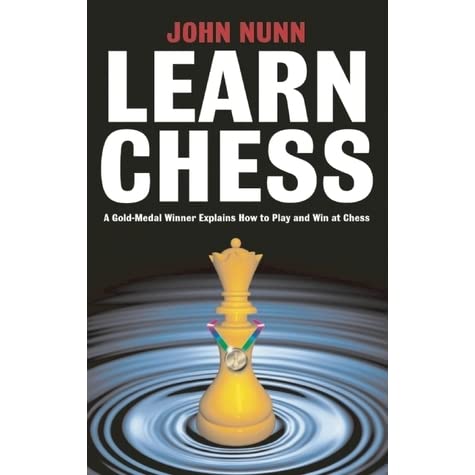
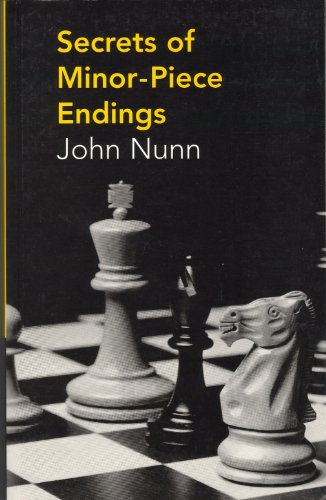
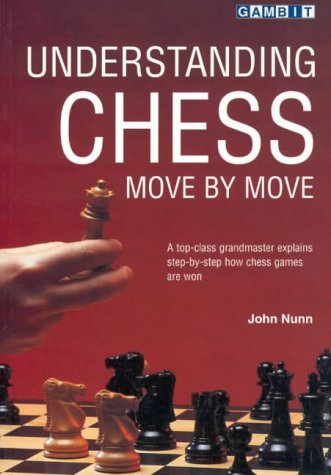
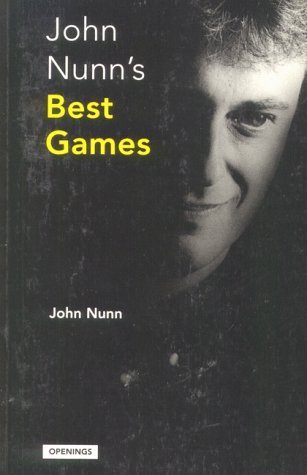
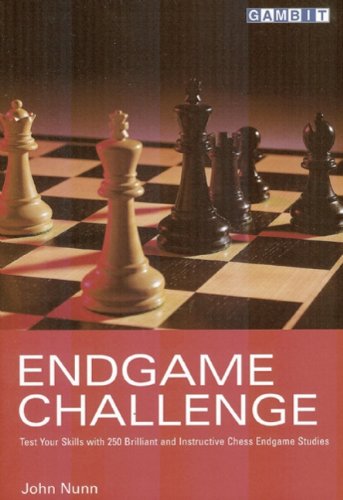
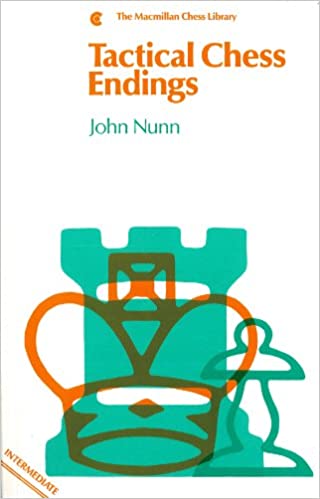
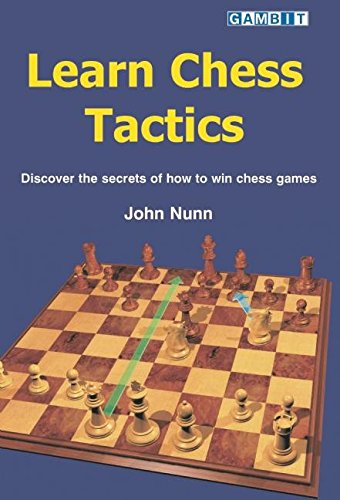
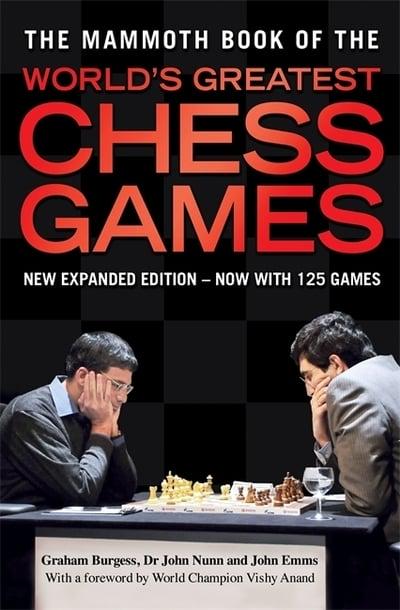
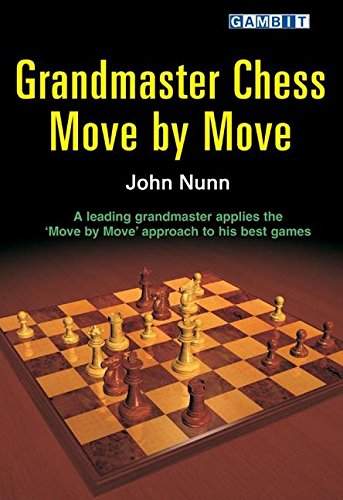
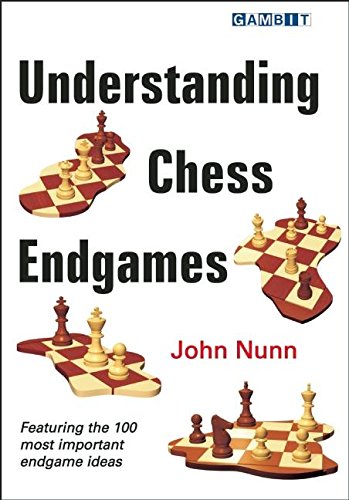
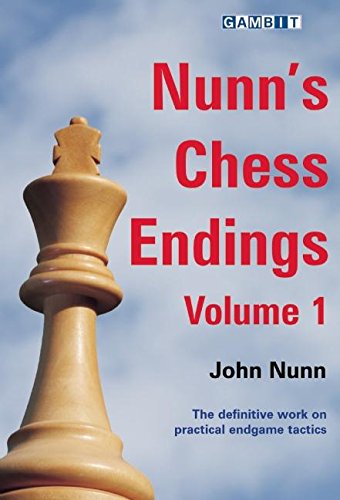
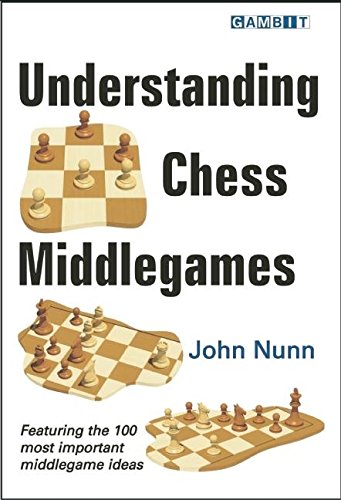
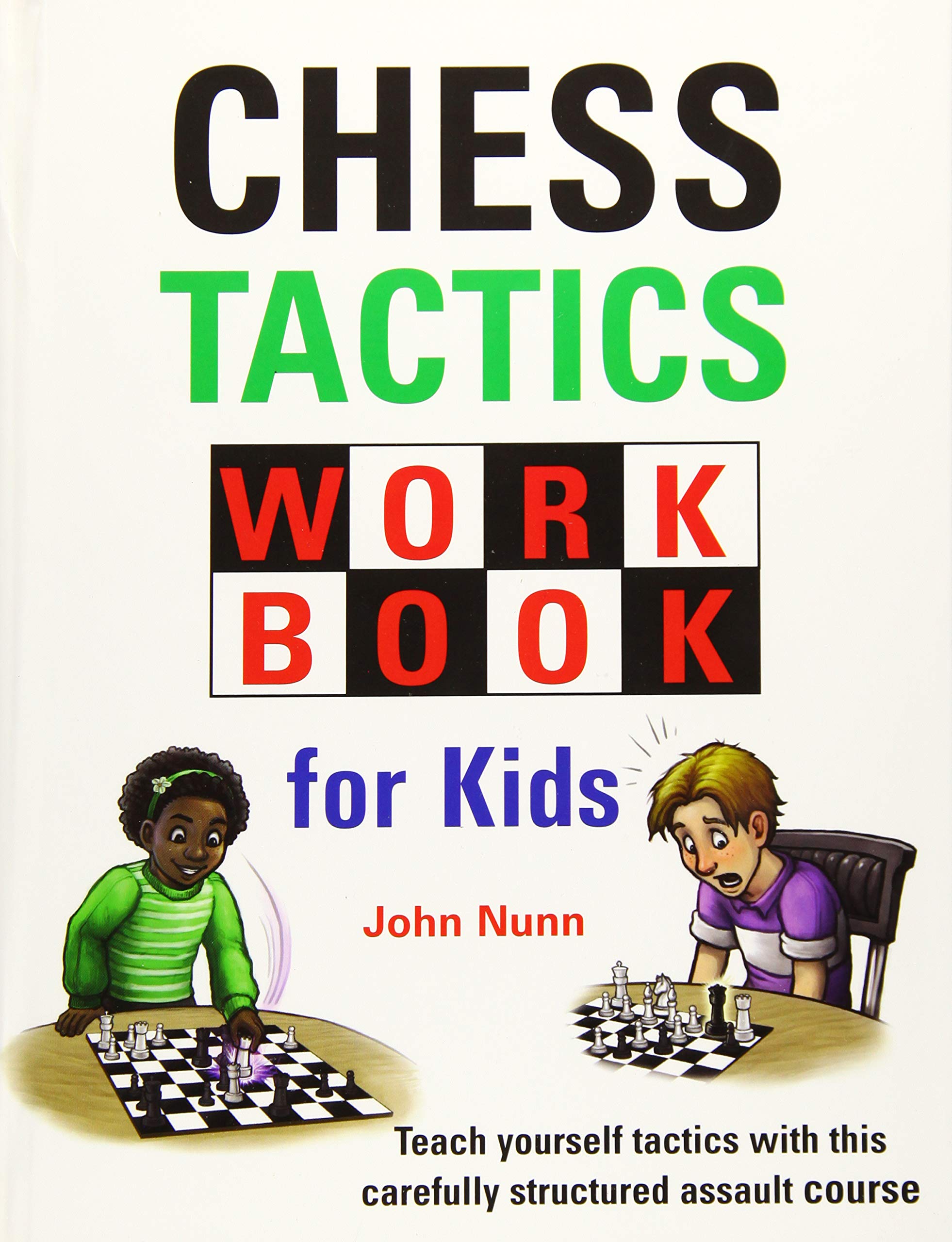
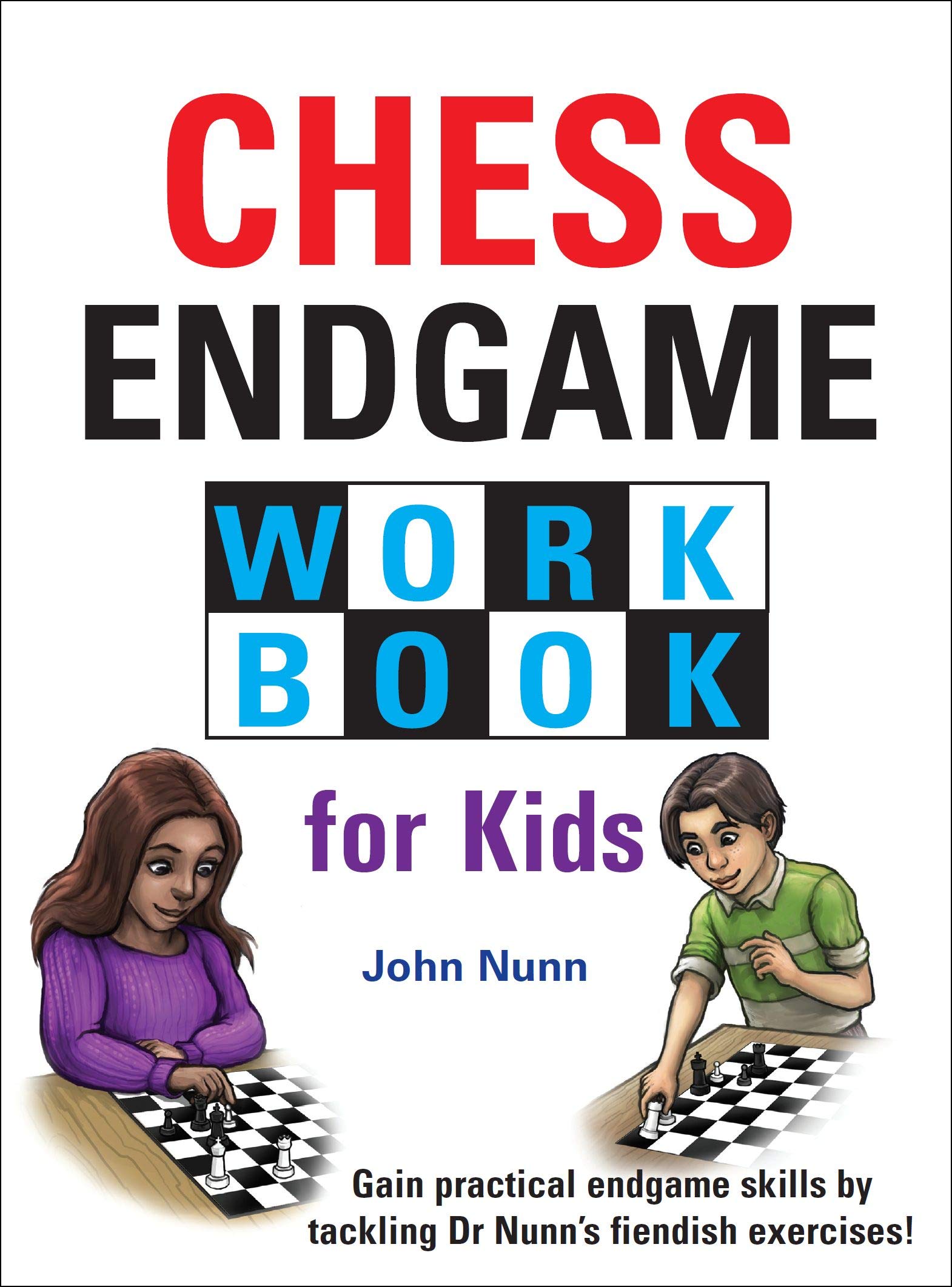
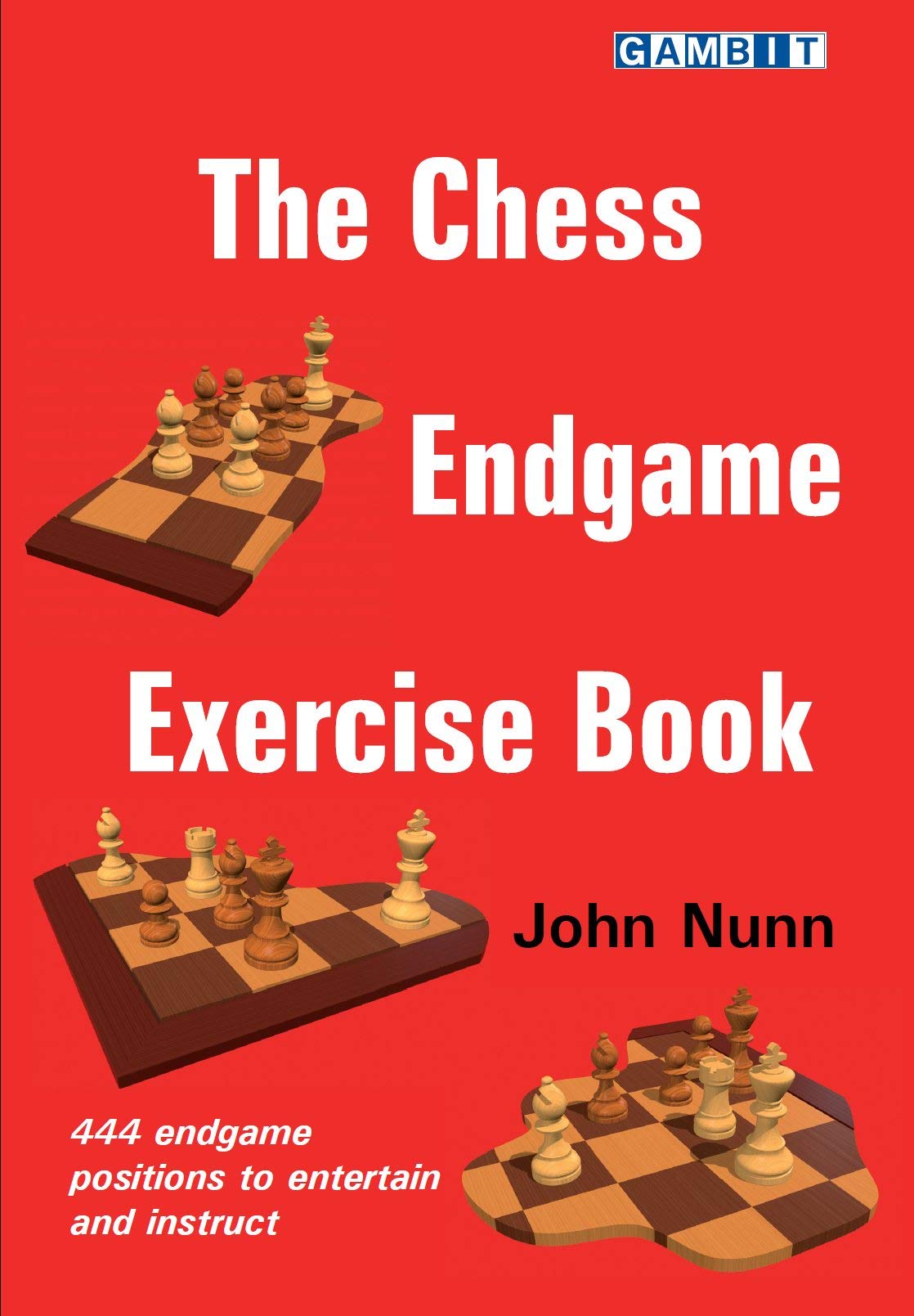
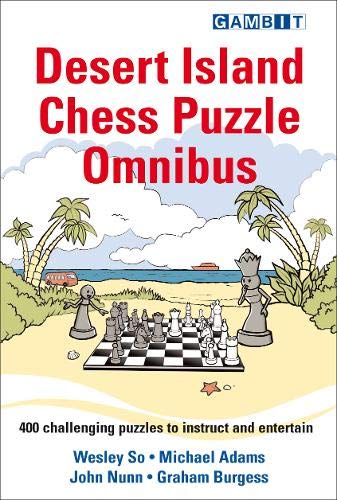
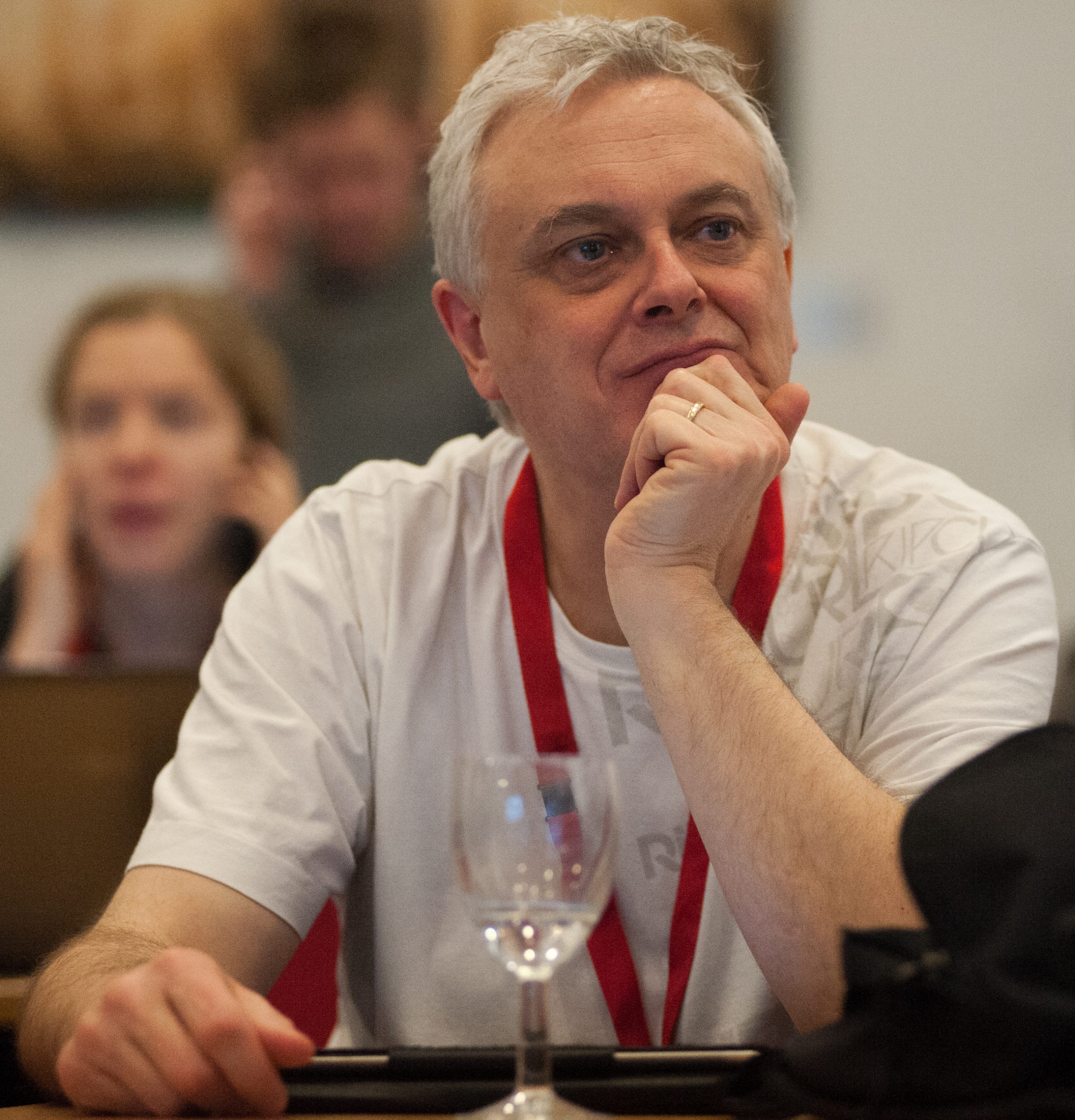
From The Encyclopedia of Chess(Robert Hale, 1970 and 1976) by Anne Sunnucks :
“Problem composer, and deemed to be on of the great masters of the art. Heathcote was born on 20th July 1870 in Manchester, and died on 24th April 1952. whilst in office as the President of the British Chess Problem Society. An advocate of the model mate, Heathcote was one of few composers with the power to combine model mates with strategy. In 1918 a collection of his problems appeared in the A. C. White Christmas series under the title Chess Idylls”
Here is an appreciation from chesscomposers.blogspot.com
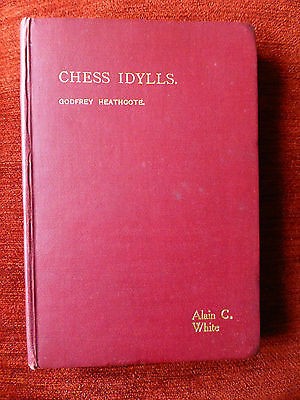
From The Encyclopaedia of Chess (Batsford, 1977), Harry Golombek OBE, John Rice writes:
“British problemist, generally regarded as the outstanding English composer of model-mate problems. President of British Chess Problem Society 1951-2.”
BCN remembers Timothy George Whitworth (31-vii-1932 17-iv-2019)
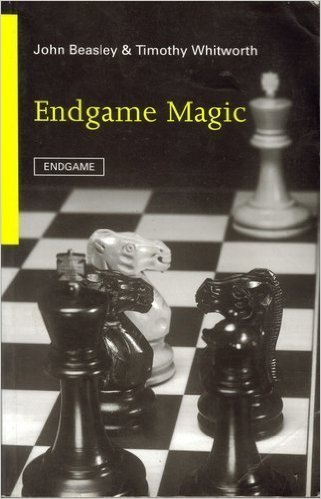
Here is an excellent article from Brian Stephenson
and here is an appreciation by John Beasley
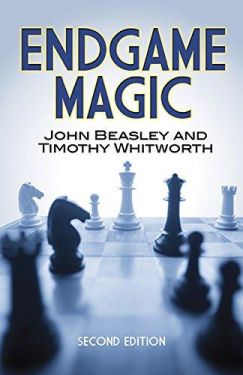
Here is an obituary from The Guardian
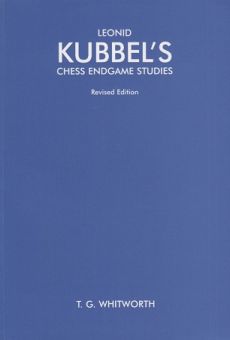
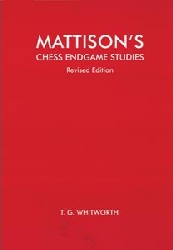
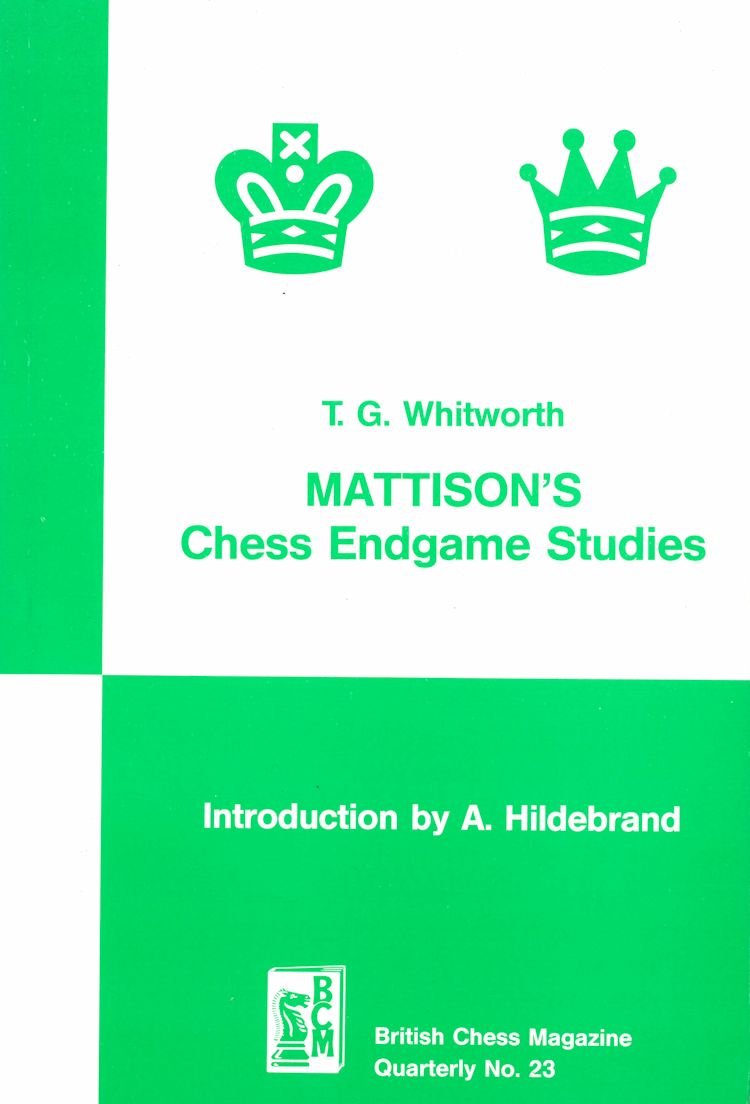
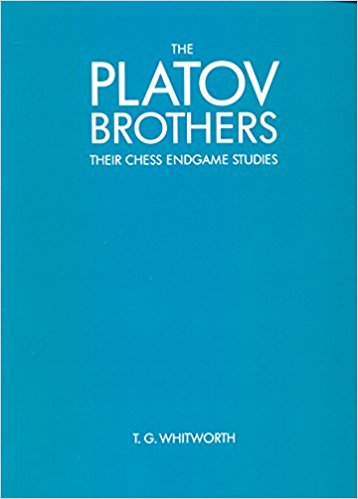
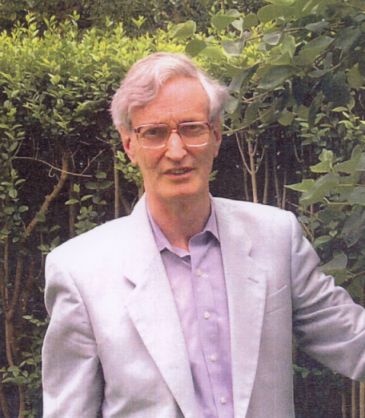

BCN wishes Happy Birthday to GM Peter Kenneth Wells (17-iv-1965)
Here is his very brief Wikipedia entry
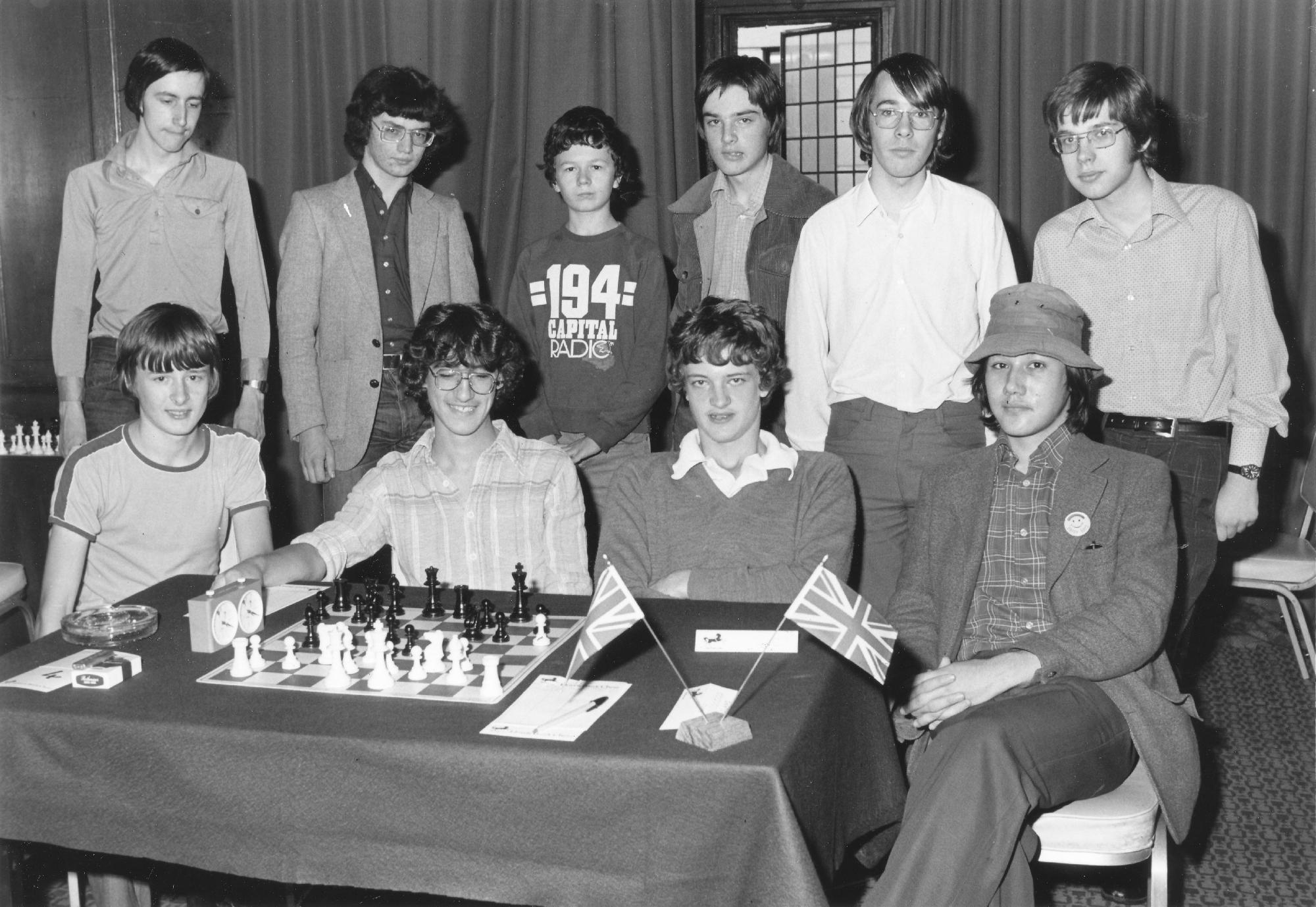
This was written about Peter aged 13 prior to the Spassky vs the BCF Junior Squad simultaneous display in 1979 :
” St John’s College and Portsmouth. Rating 174. British under-14 co-champion, 1978.”
and from chessgames.com :
“Peter Kenneth Wells was born in Portsmouth, England and became a FIDE Master in 1982, an IM in 1987, and a GM in 1994. He is also a FIDE Senior Trainer (2015).”
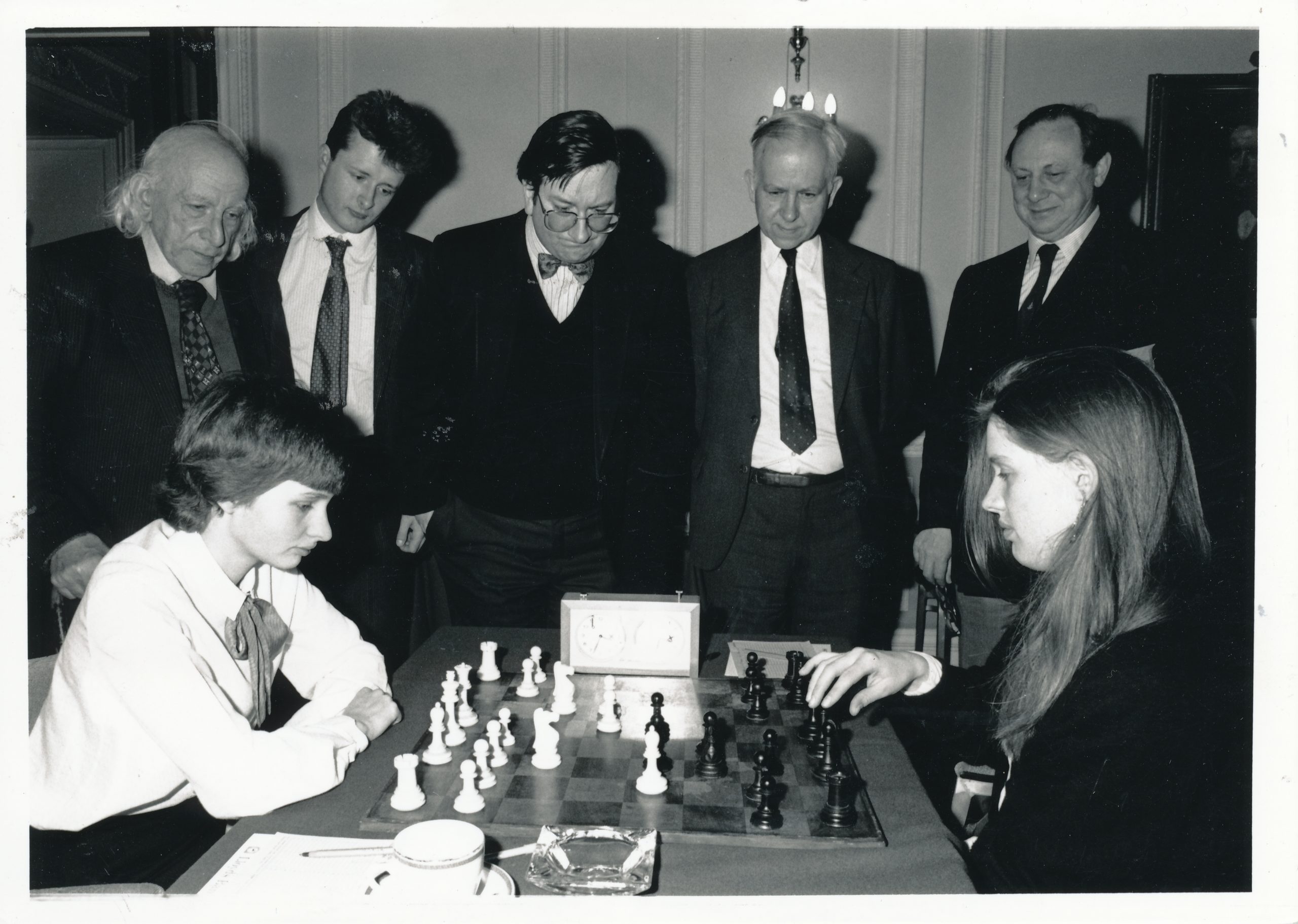
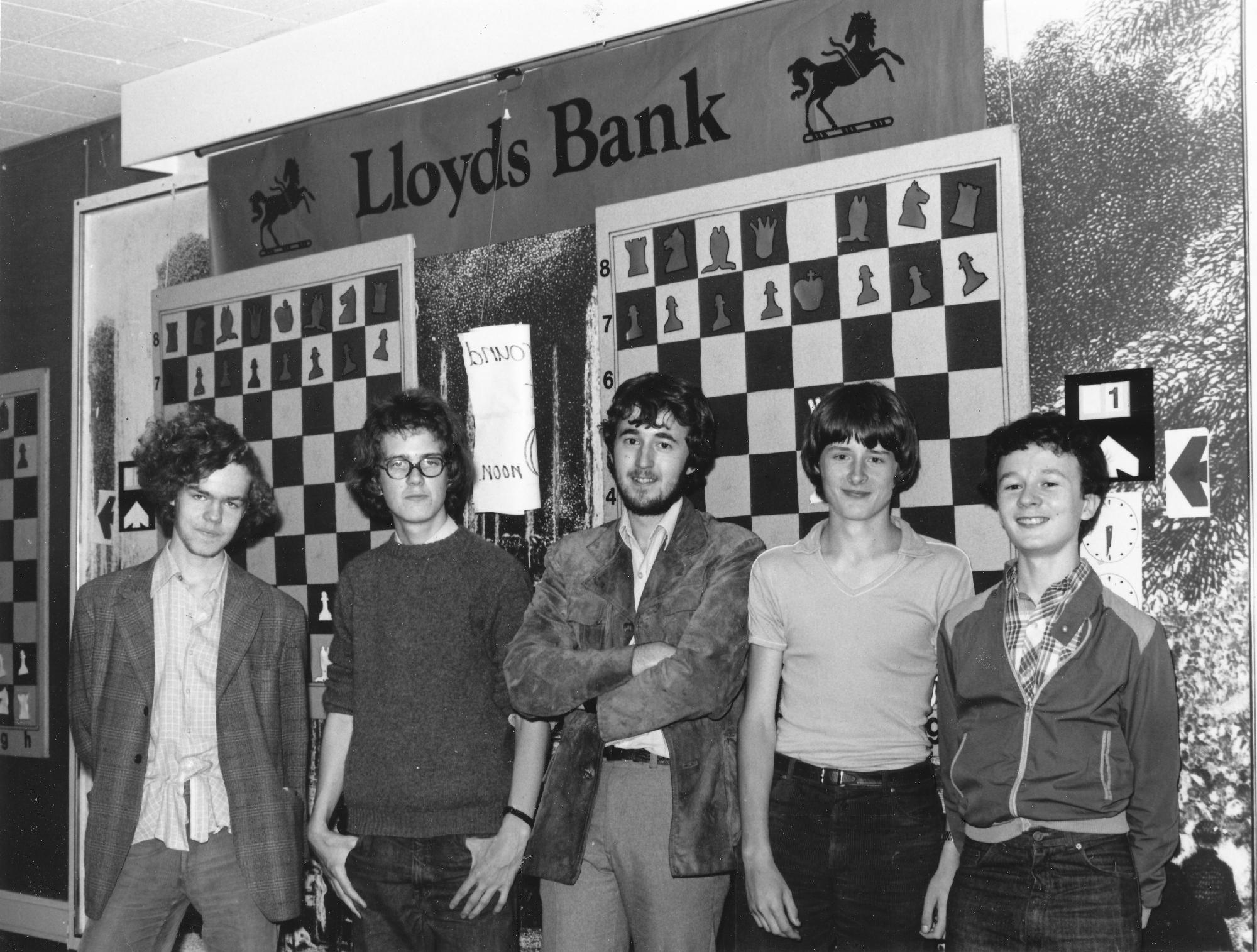
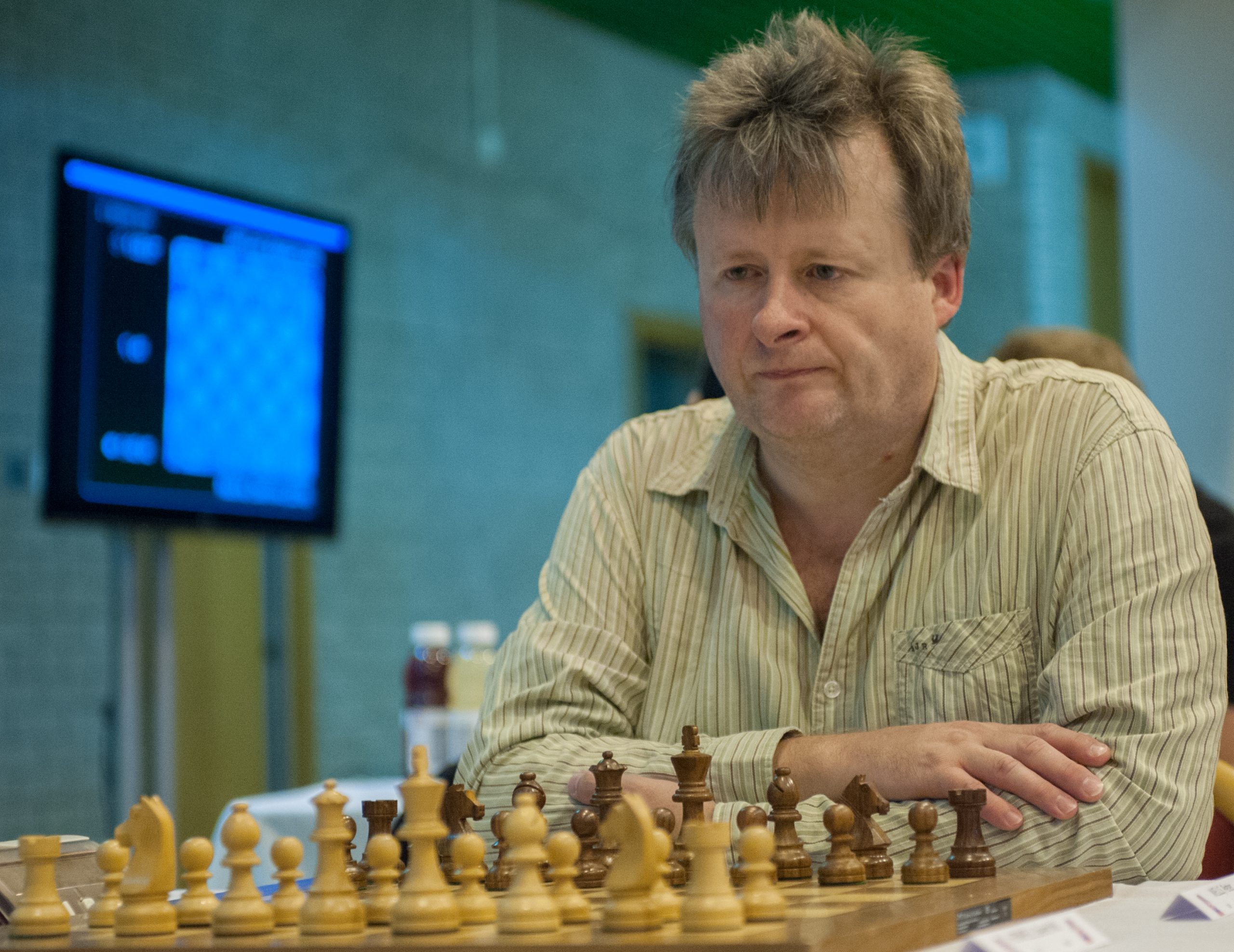


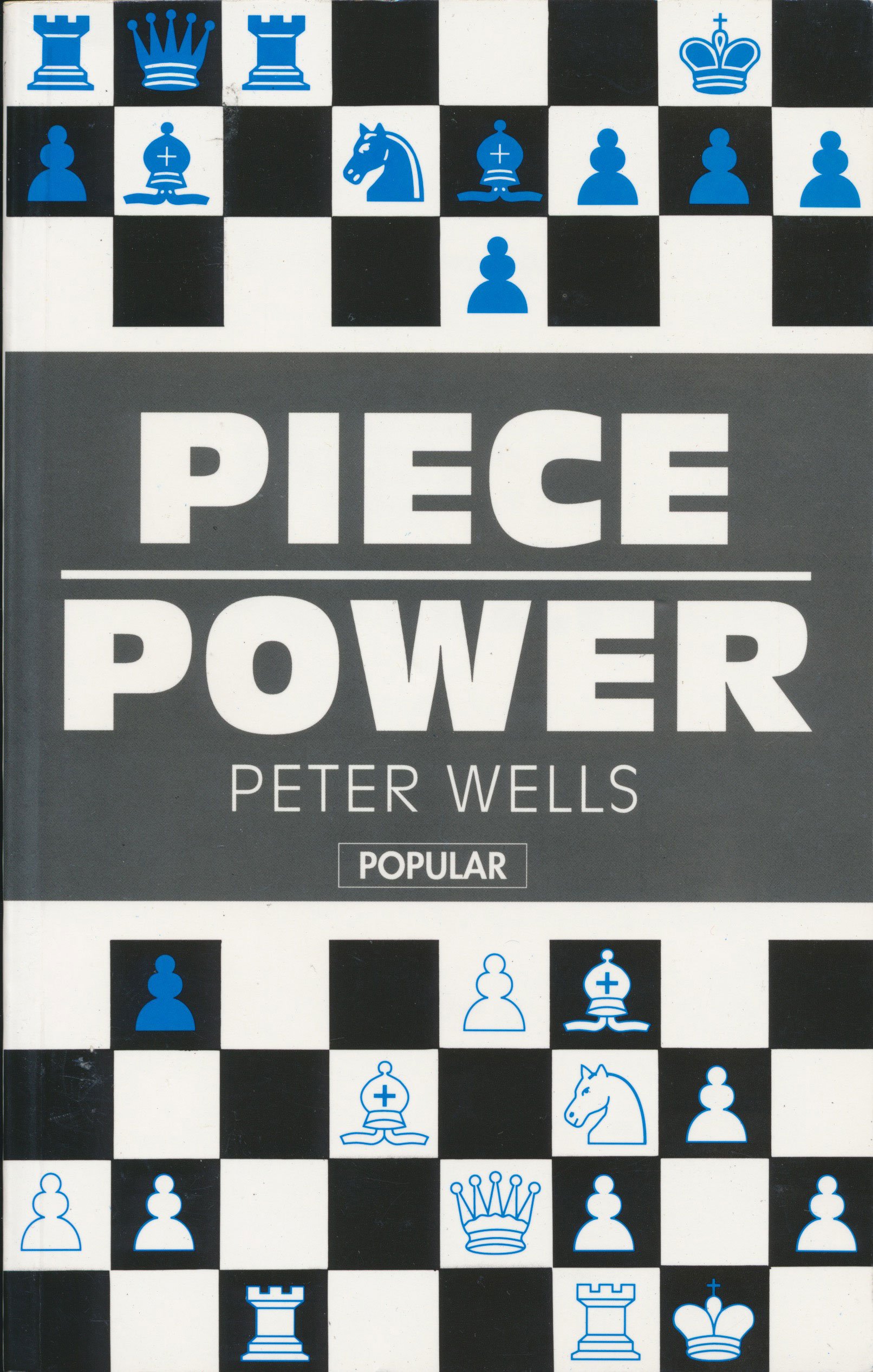
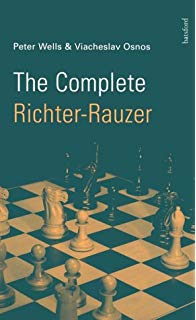

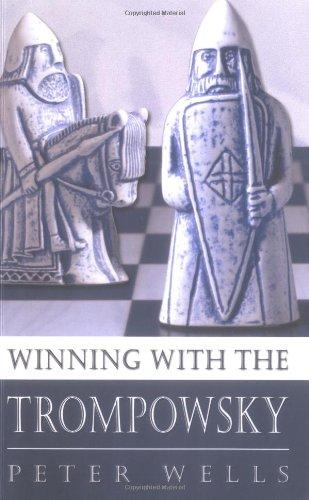
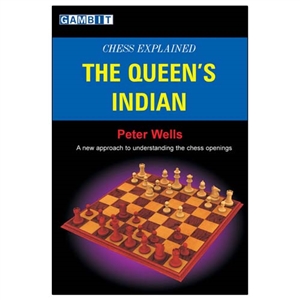
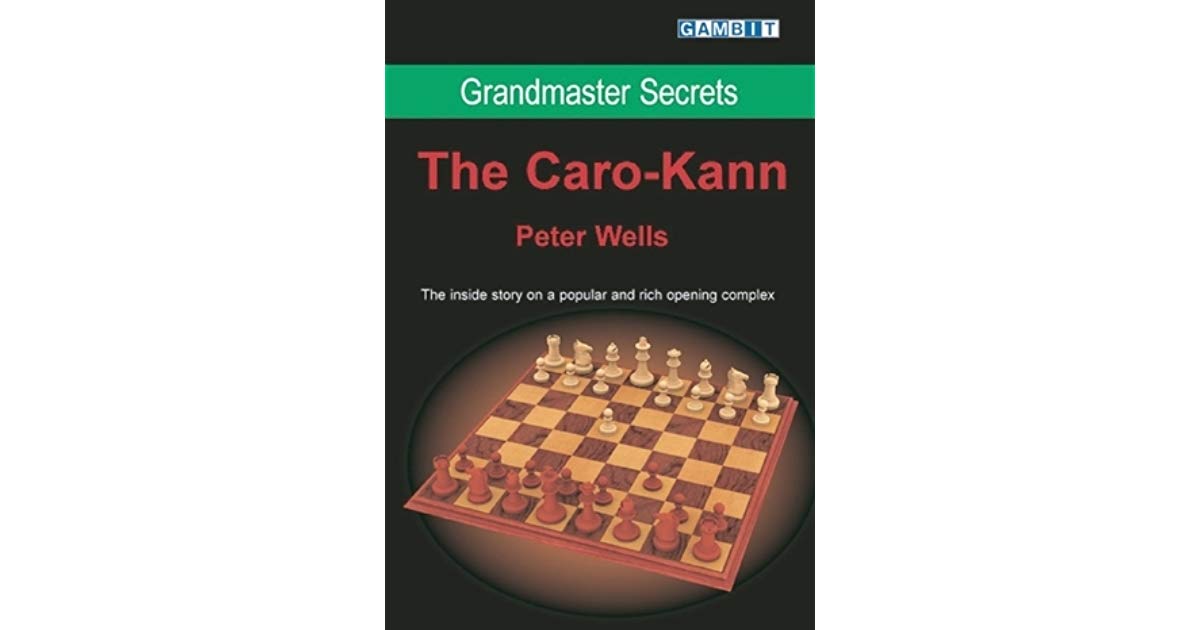
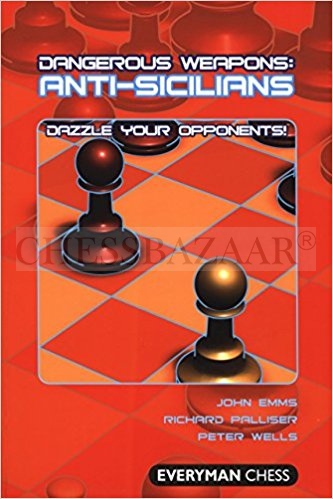
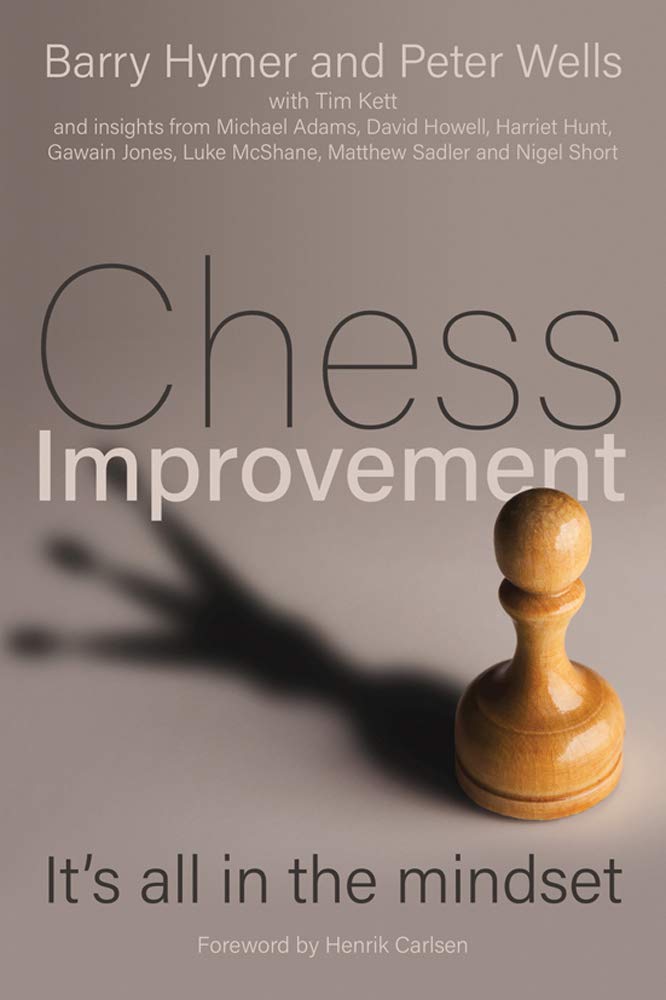
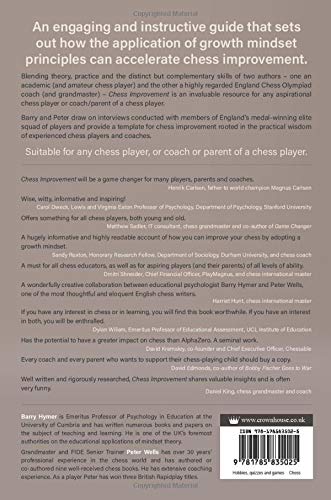
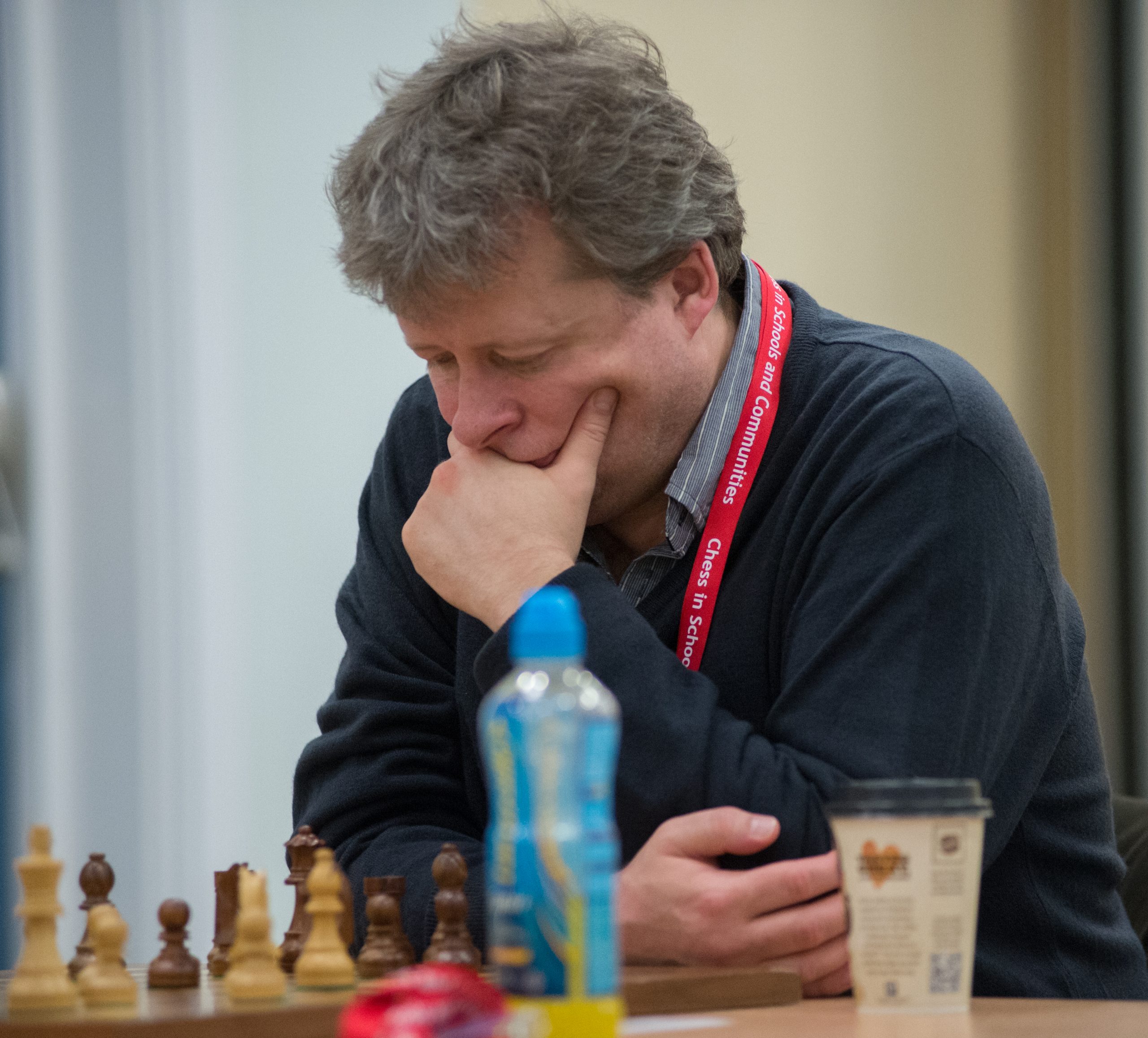
BCN remembers IM Colin Crouch (14-x-1956 16-iv-2015)
From Chessgames.com :
“Colin Stamford Crouch was born in Bushey, England. He was an International Master, and the author of a number of chess books.”
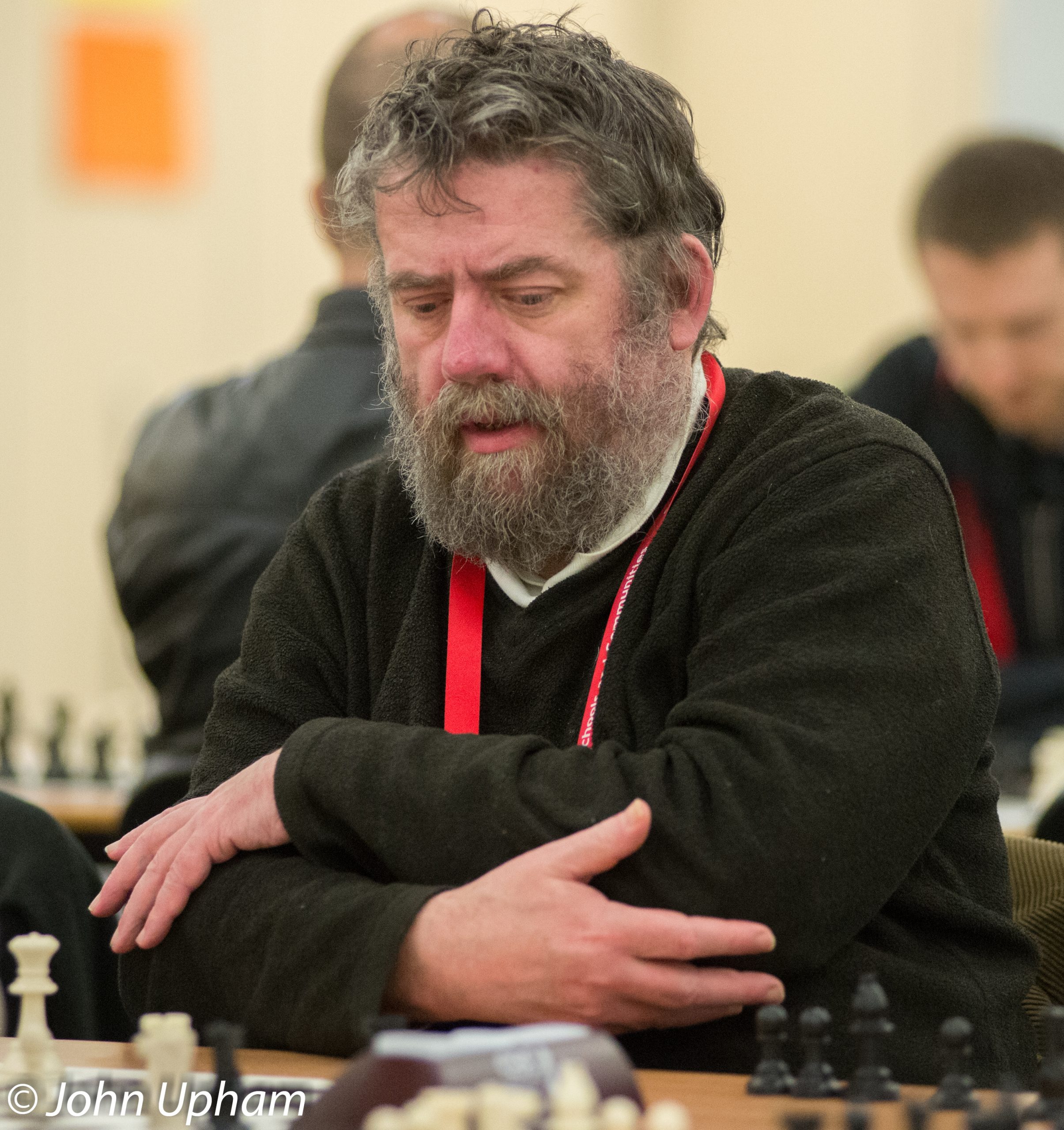
Here is an obituary from the ECF written by Stewart Reueben
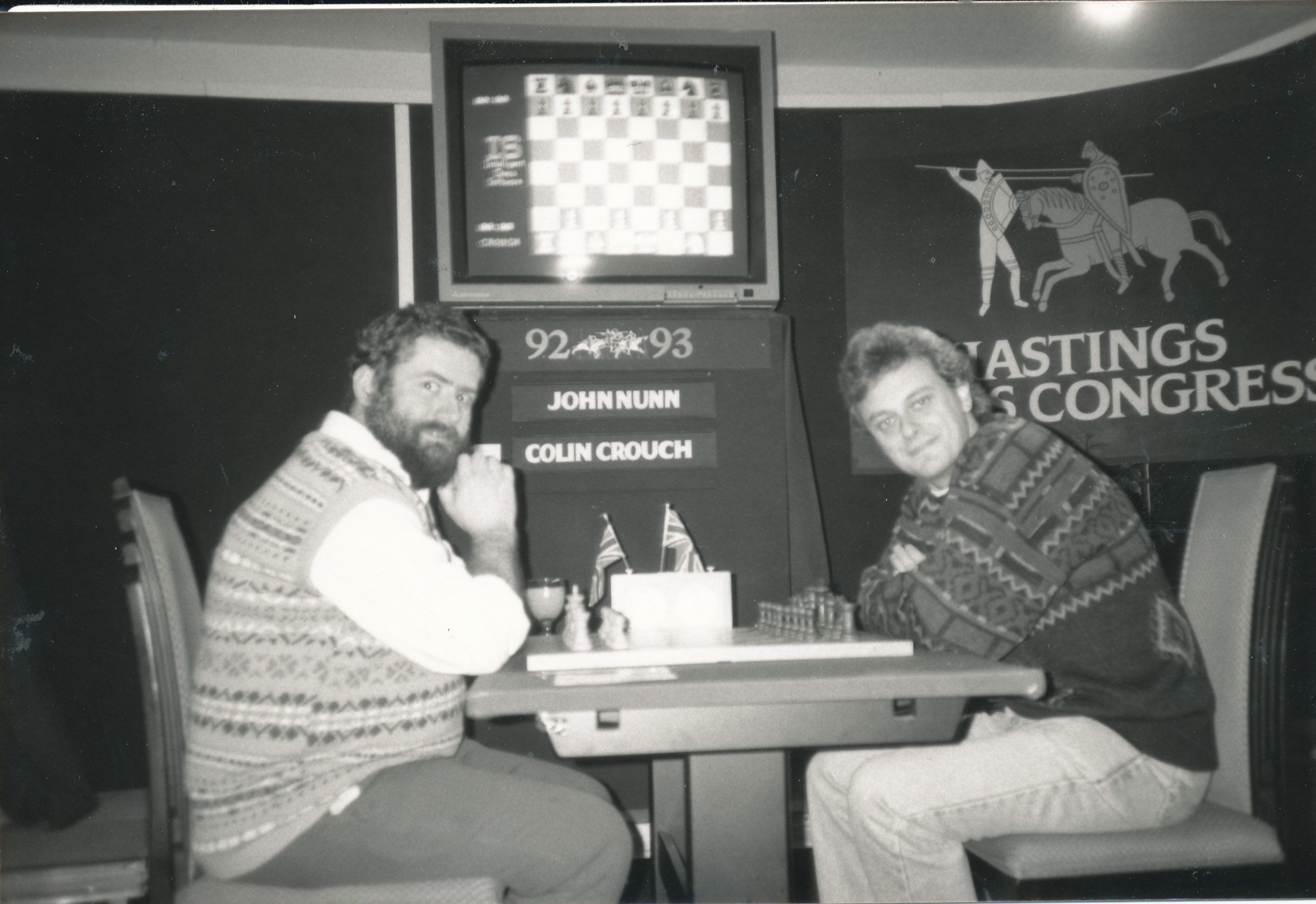
An obituary from Kingpin Magazine
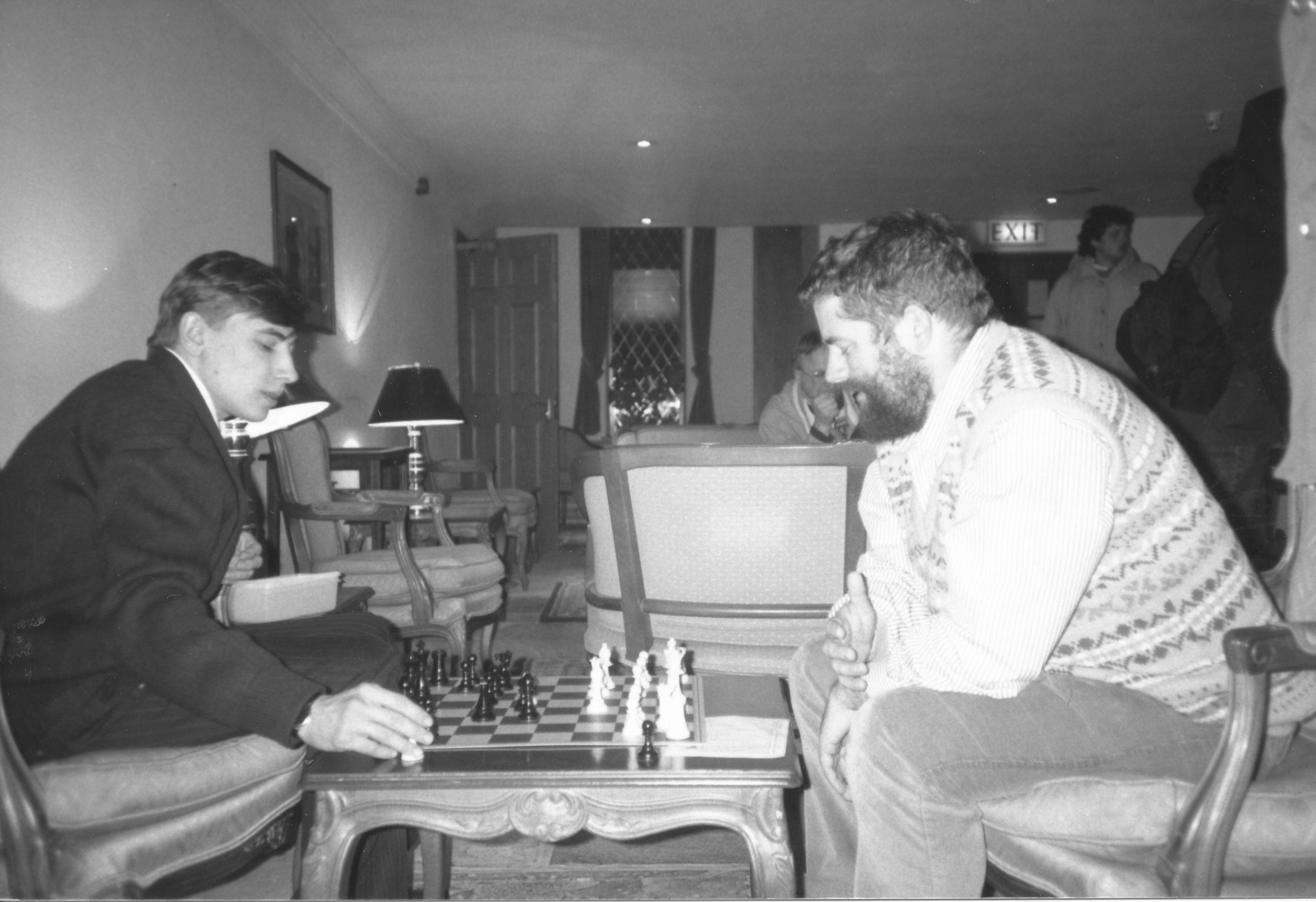
An obituary from The Telegraph written by Malcolm Pein

Colin was Southern Counties (SCCU) champion in the 2000-01 season sharing the title with Jeff Goldberg.
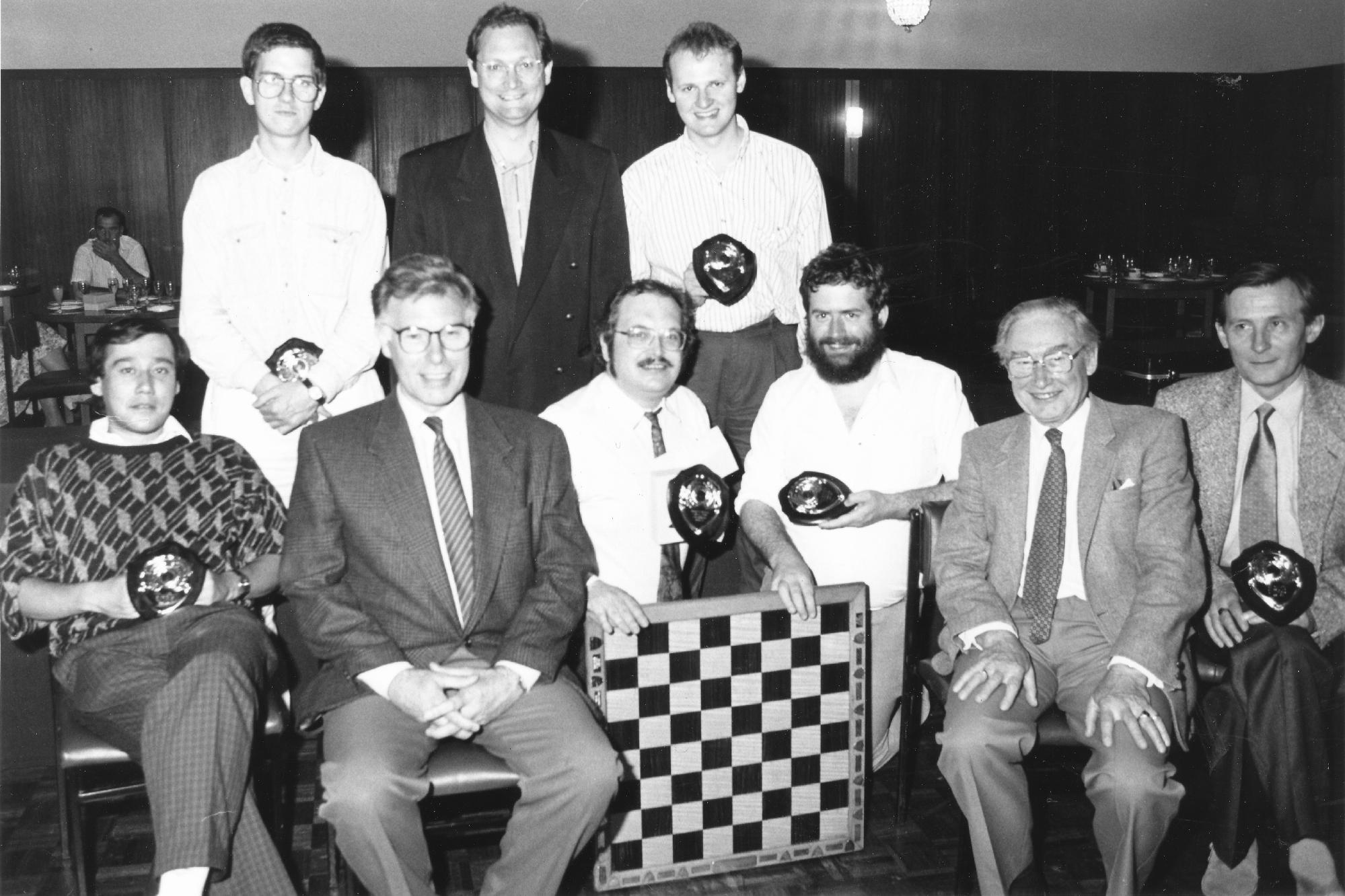
An obituary from The Guardian by David Crouch
